NORTH KOREA
Running Pyongyang’s marathon
The opinions expressed in this article are my own and in no way commit Koryo group, KITC or my guides.
Since 2014 the Pyongyang Marathon has been open to foreign amateur athletes. Curious to have such an experience in the “most secretive nation on the planet”, I took part in the competition in April 2016 alongside 1,800 other North Korean and foreign runners.
Highly supervised by the State, tourism in North Korea is a well-oiled machine. Visitors are never allowed to roam freely in the country, and are accompanied by two guides for the duration of their stay. Their passports are taken away on arrival and returned on departure, after a thorough search of their personal belongings and photographs. If the compromises involved in visiting North Korea are numerous, the visit is as fascinating as it is terrifying and strange.
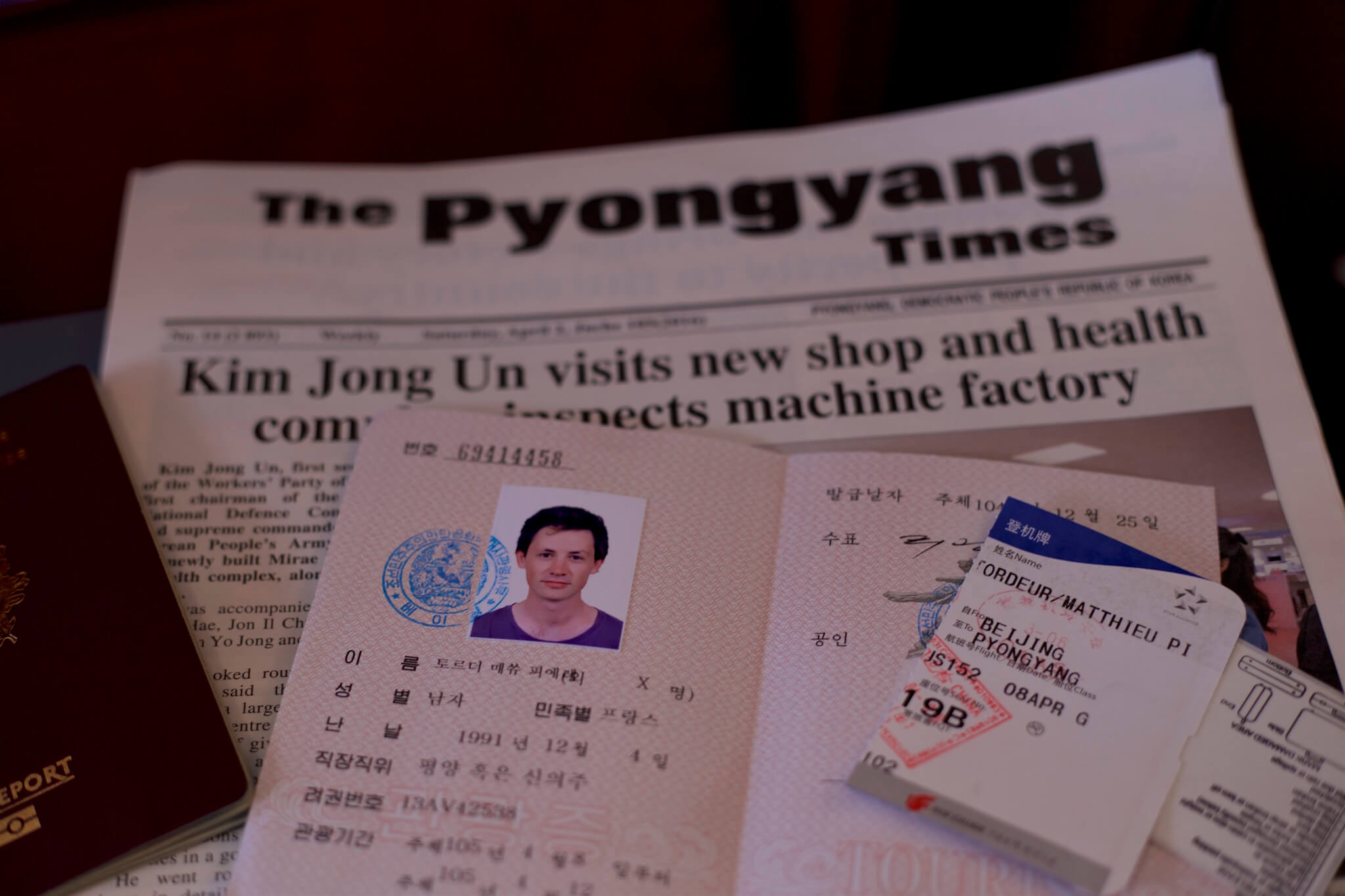
The visa for North Korea comes in the form of a small folded piece of paper, so as to leave no trace of a visit in your passport.
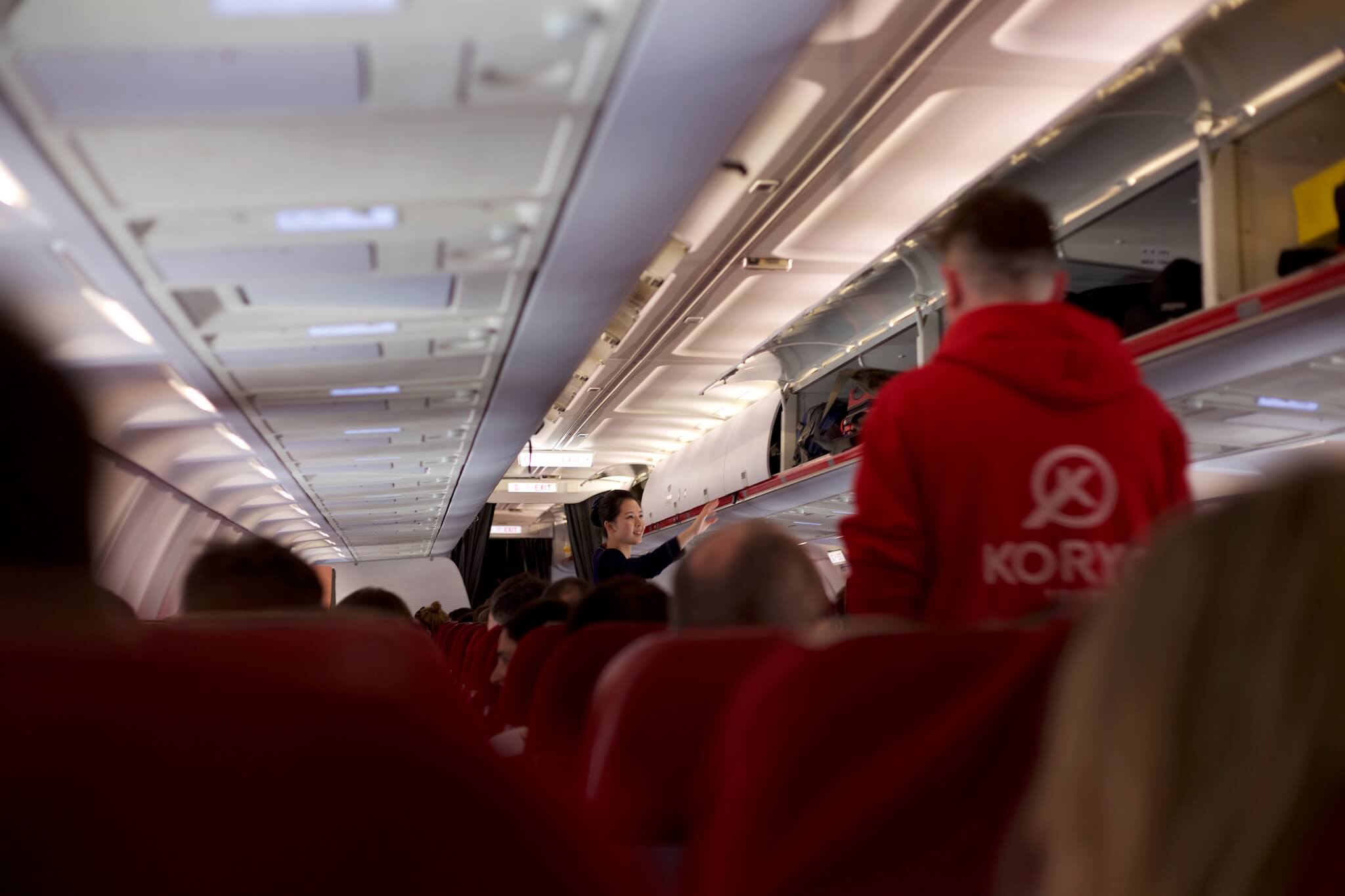
On board flight JS152 operated by Air Koryo, the North Korean airline that flies between Beijing and Pyongyang.
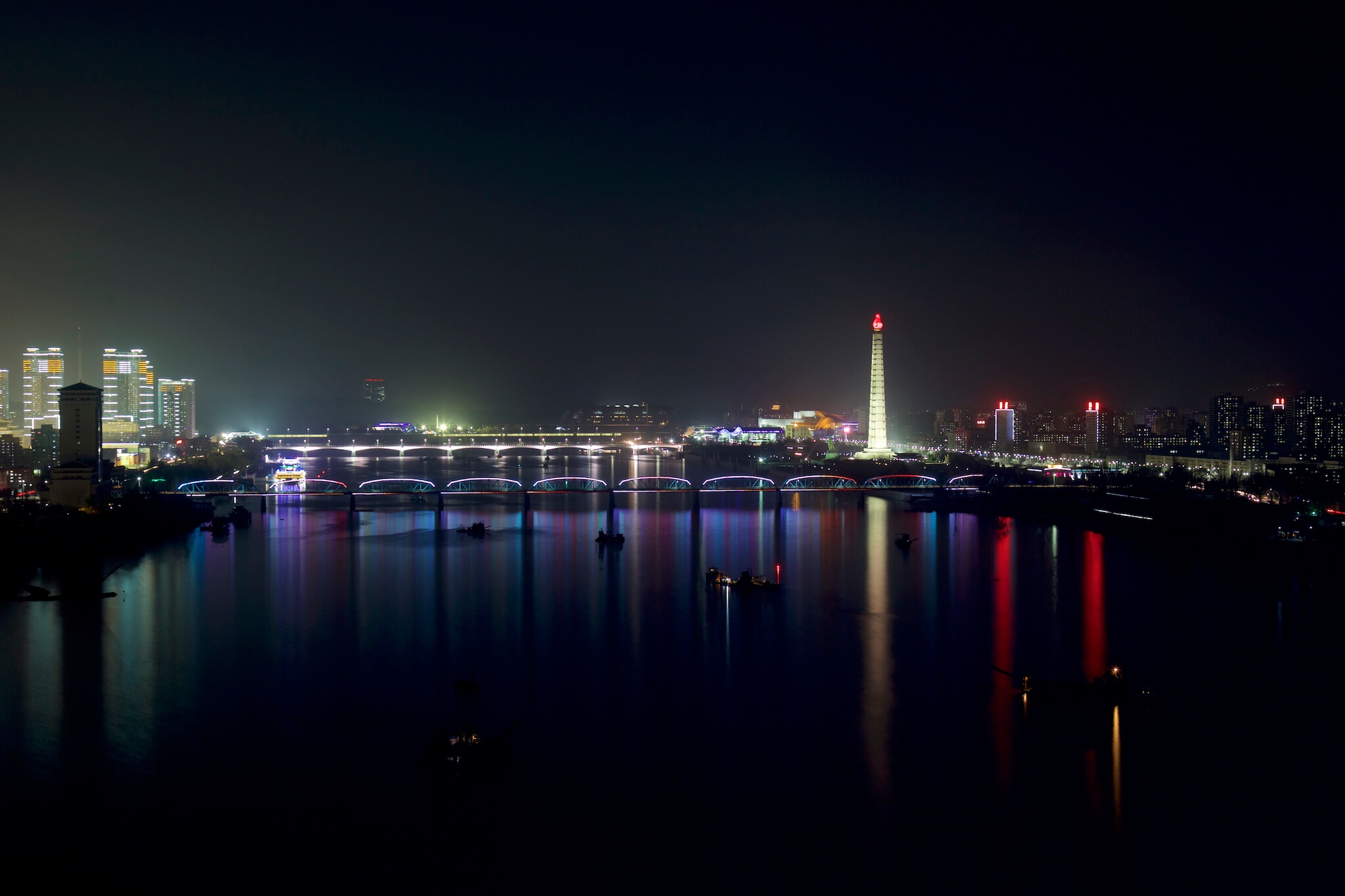
View of Pyongyang, the Taedong River and the Juche Tower, from my room on the nineteenth floor of the Yanggakdo International Hotel.
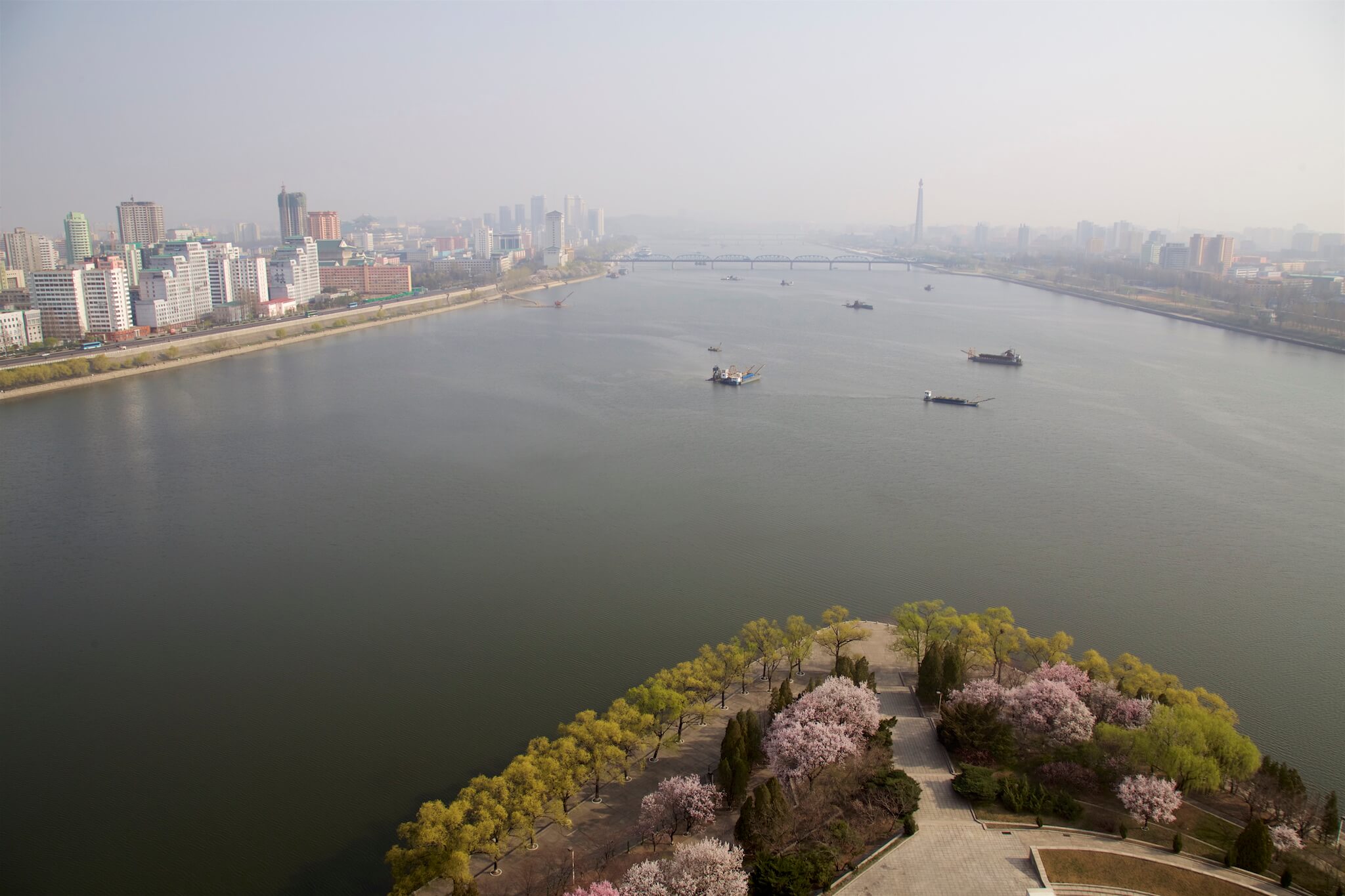
The Yanggakdo Hotel is located on Yanggak Island, two kilometers southeast of the city center. At 47 storeys high, the fifth floor does not appear on the elevator keypad. This floor, which is off-limits to the public, is in fact a hotel surveillance complex.
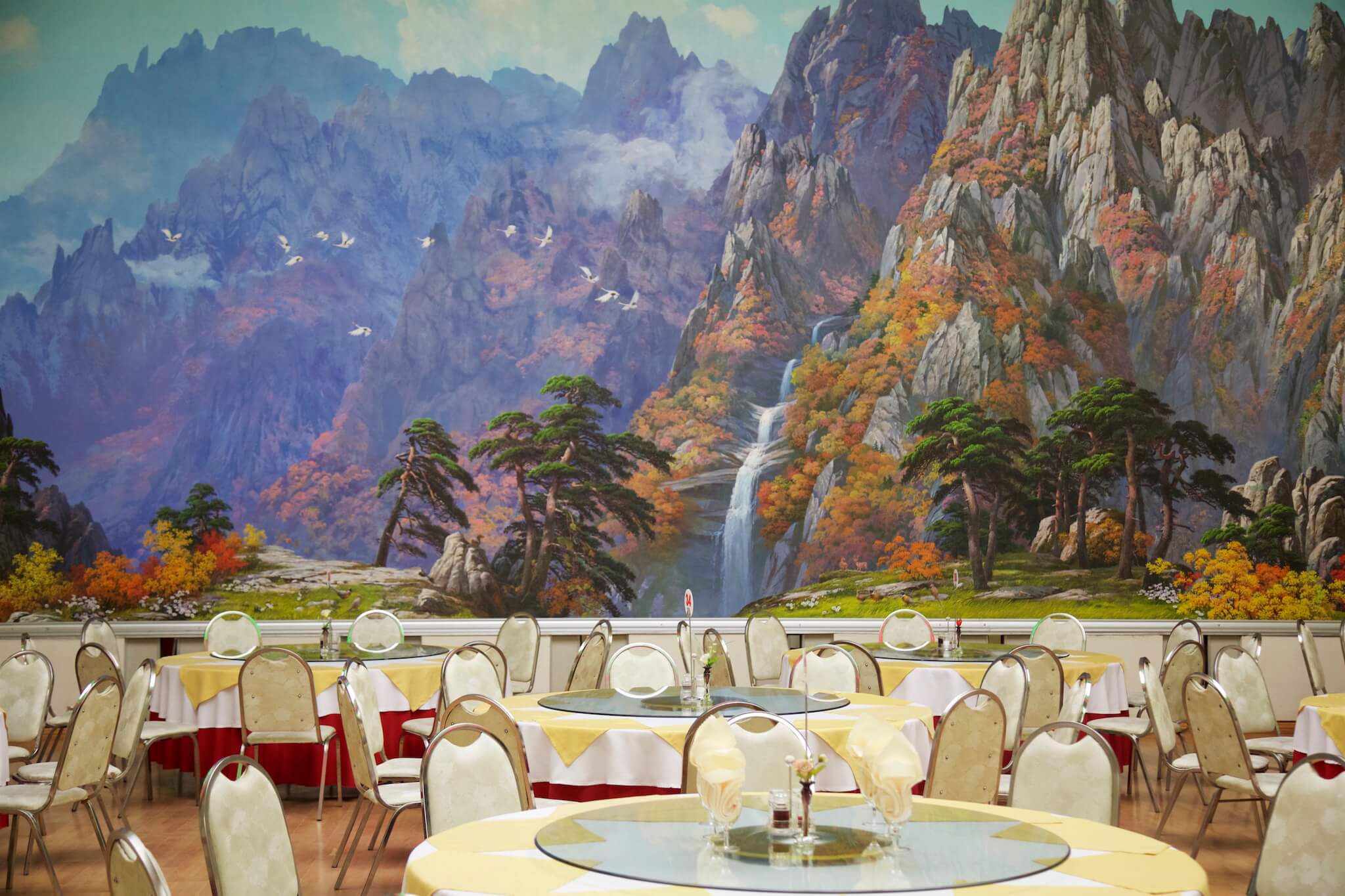
In addition to a dining room on the first floor, the hotel has a revolving restaurant at the top of the building. The basement features bowling lanes, a billiard room, a swimming pool, a barber shop, a casino… Everything is done to keep the visitor in the hotel.
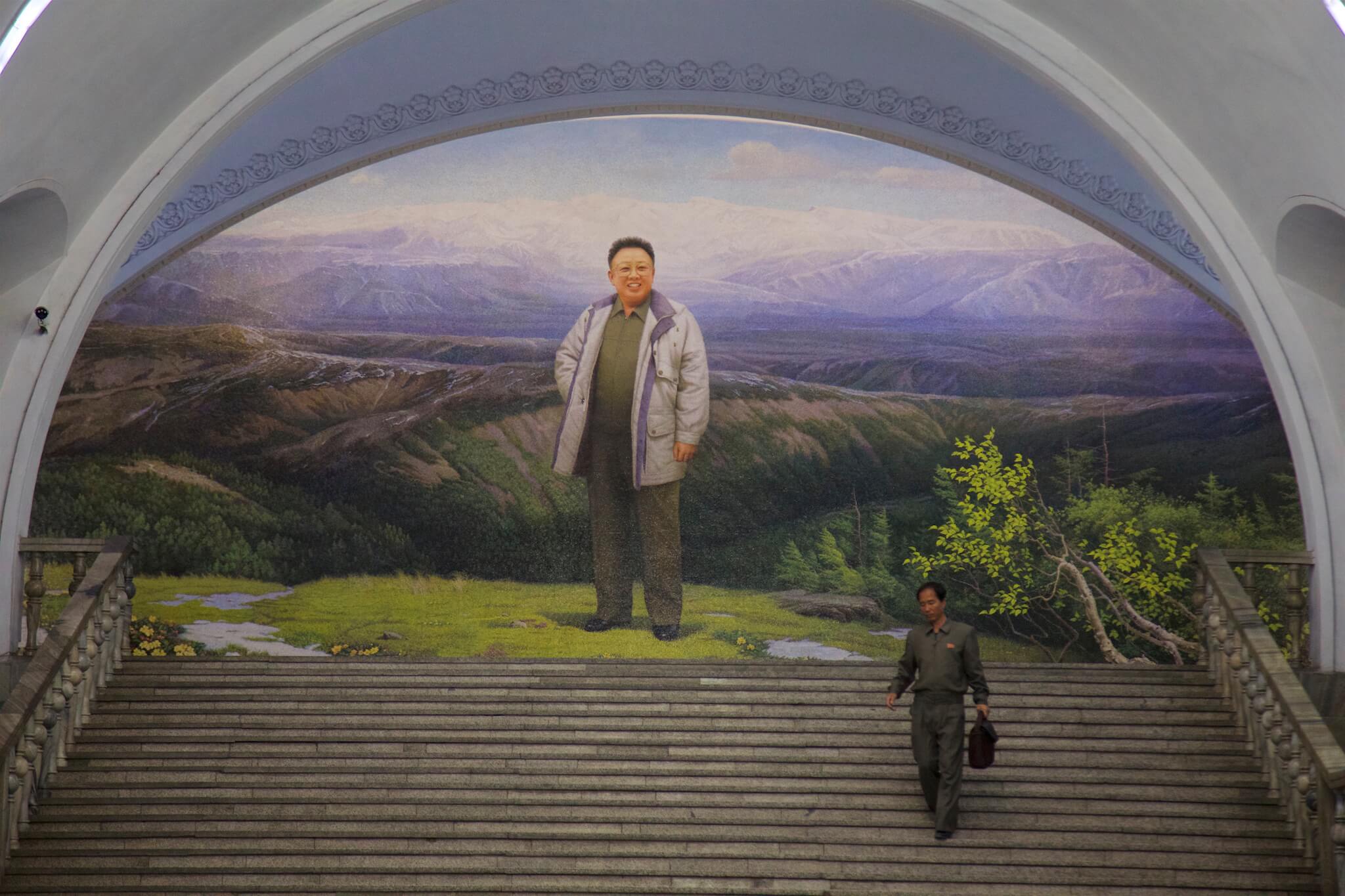
Pyongyang Metro. At Yonggwang station, a mural depicts Kim Jong Il, nicknamed the “Beloved Leader” who was in power between 1994 and 2011, in front of Mount Paektu. State media outlets claim that he was born in this region, while Soviet archives show that he was born in Russia.
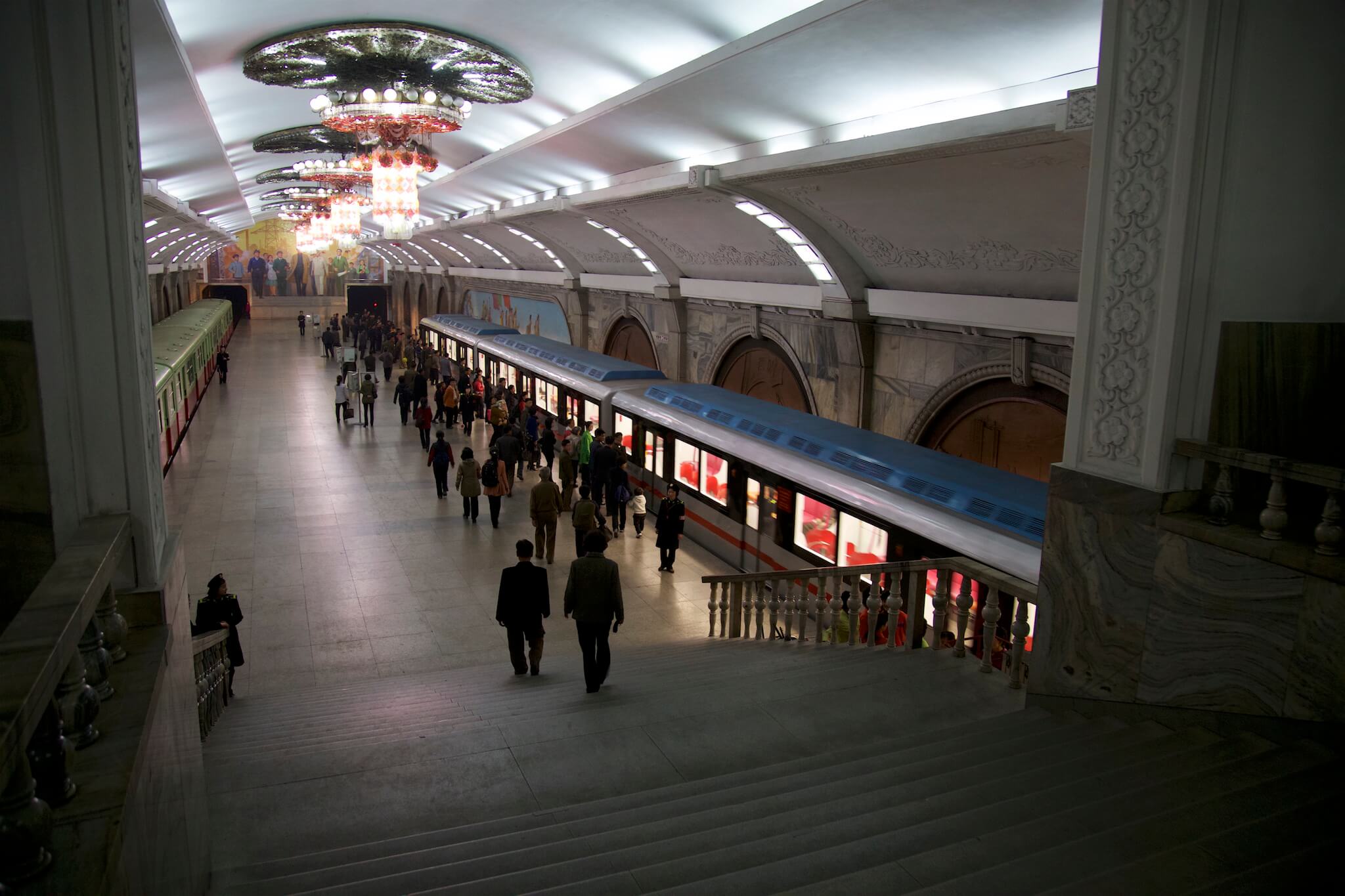
A showcase for the state, the Pyongyang metro was created in 1973. Puhung station.
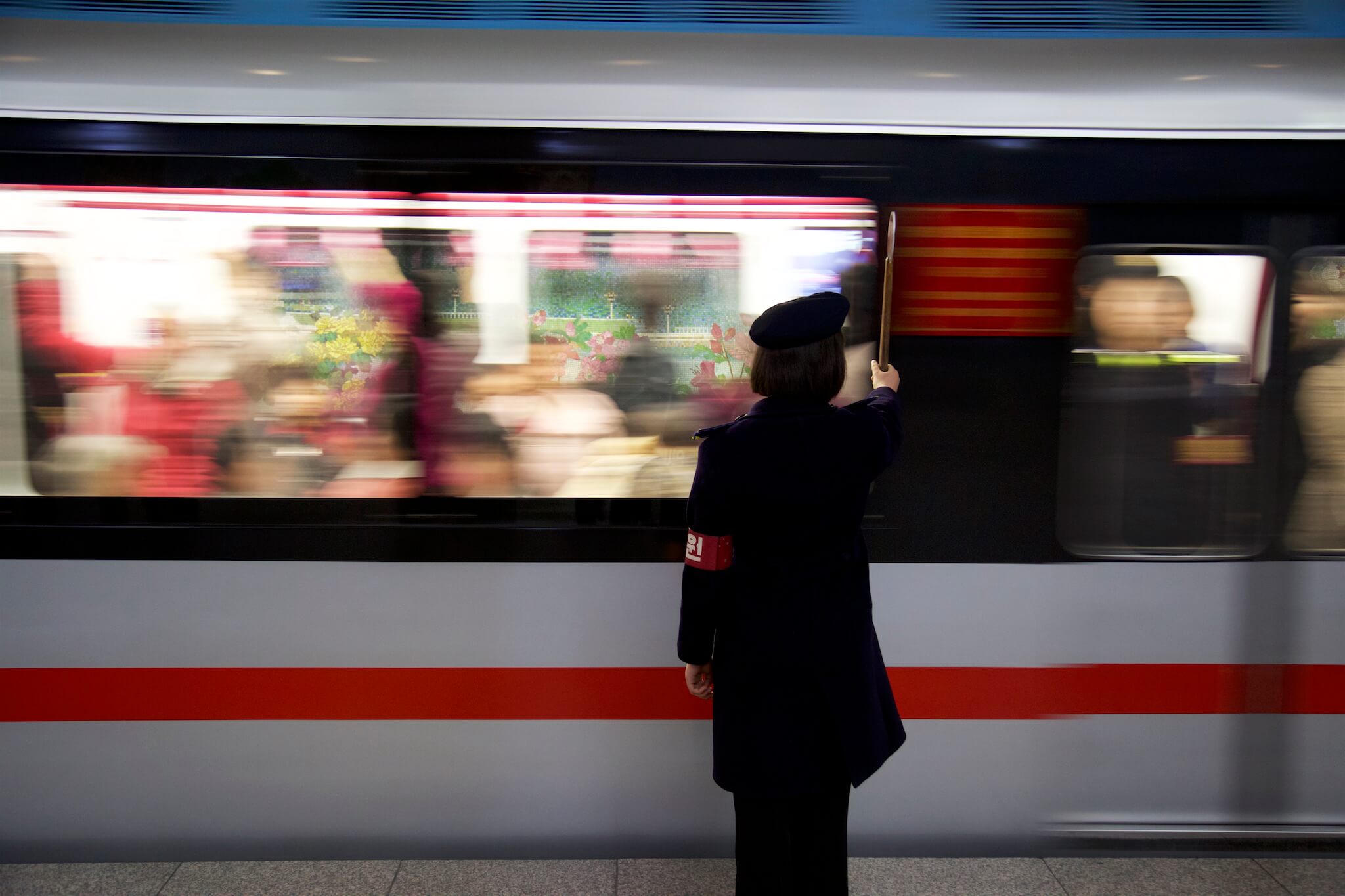
The Pyongyang metro uses old East German trains, with graffiti visible in some carriages.
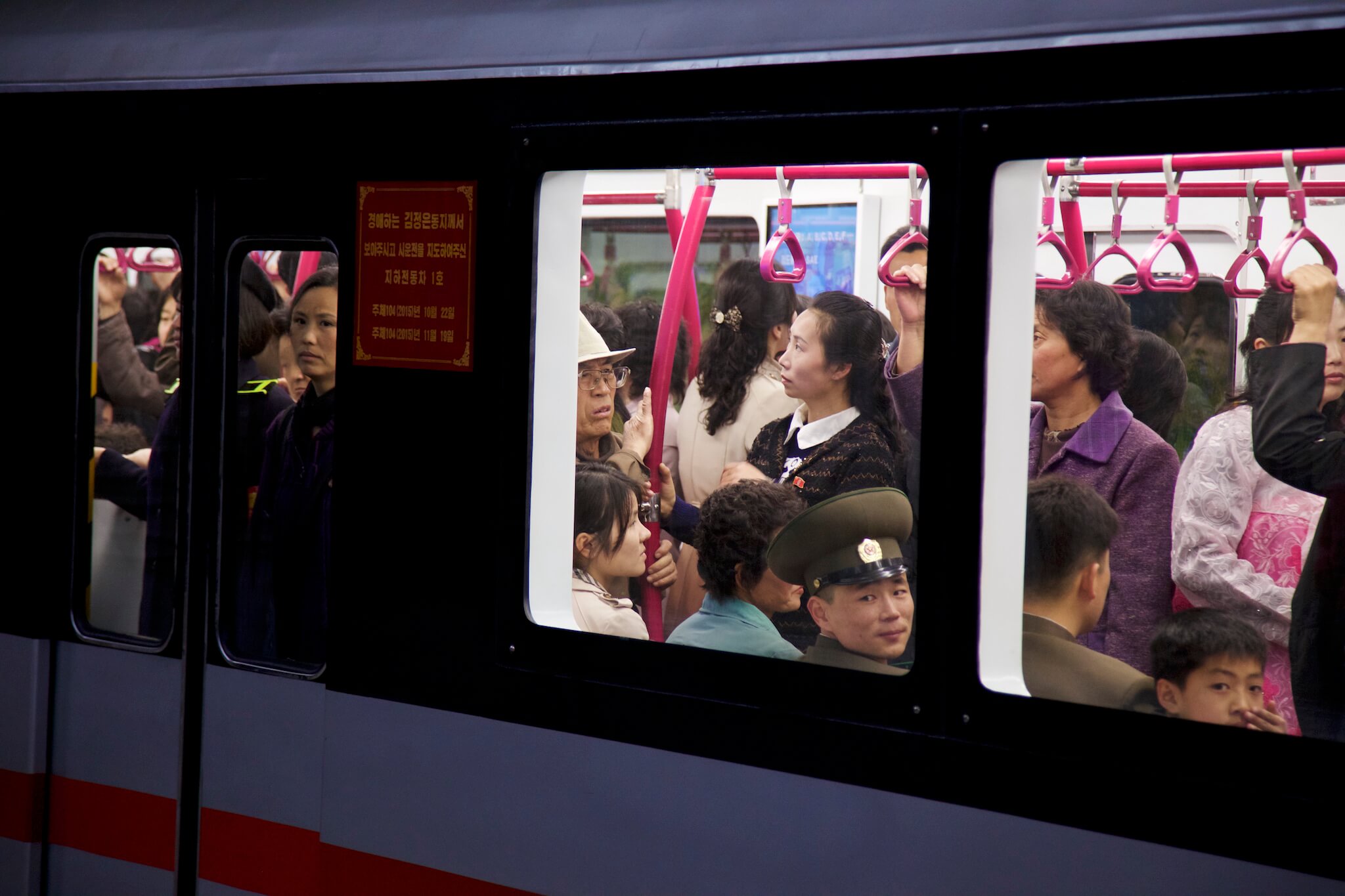
The network comprises 16 stations on 2 lines, and there are many rumors that a secret network is in operation for the government.
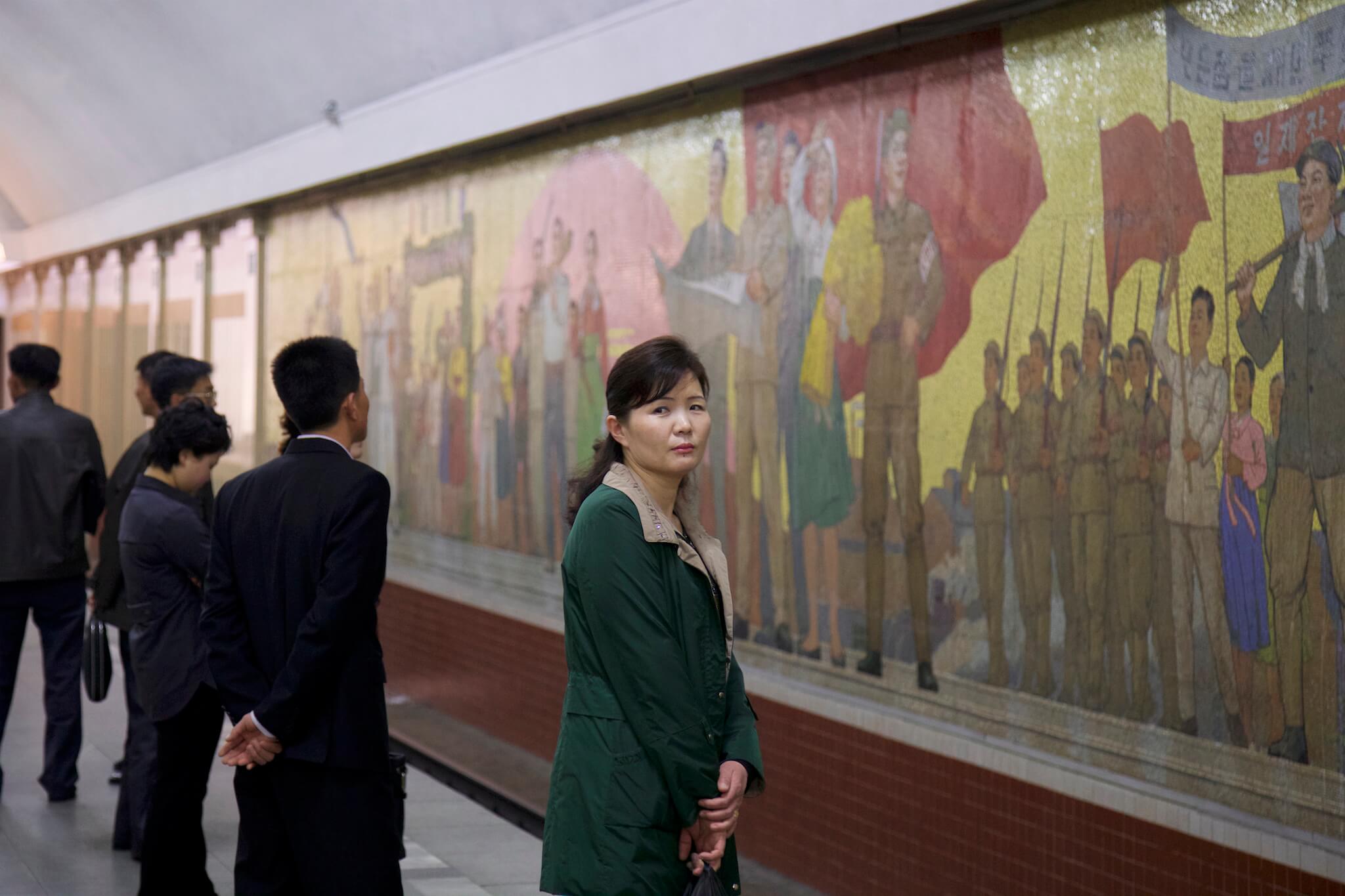
The metro is characterized by its meticulous architecture, rich in frescoes, mosaics, marble and monumental bronzes highlighting the achievements of Korean socialism.
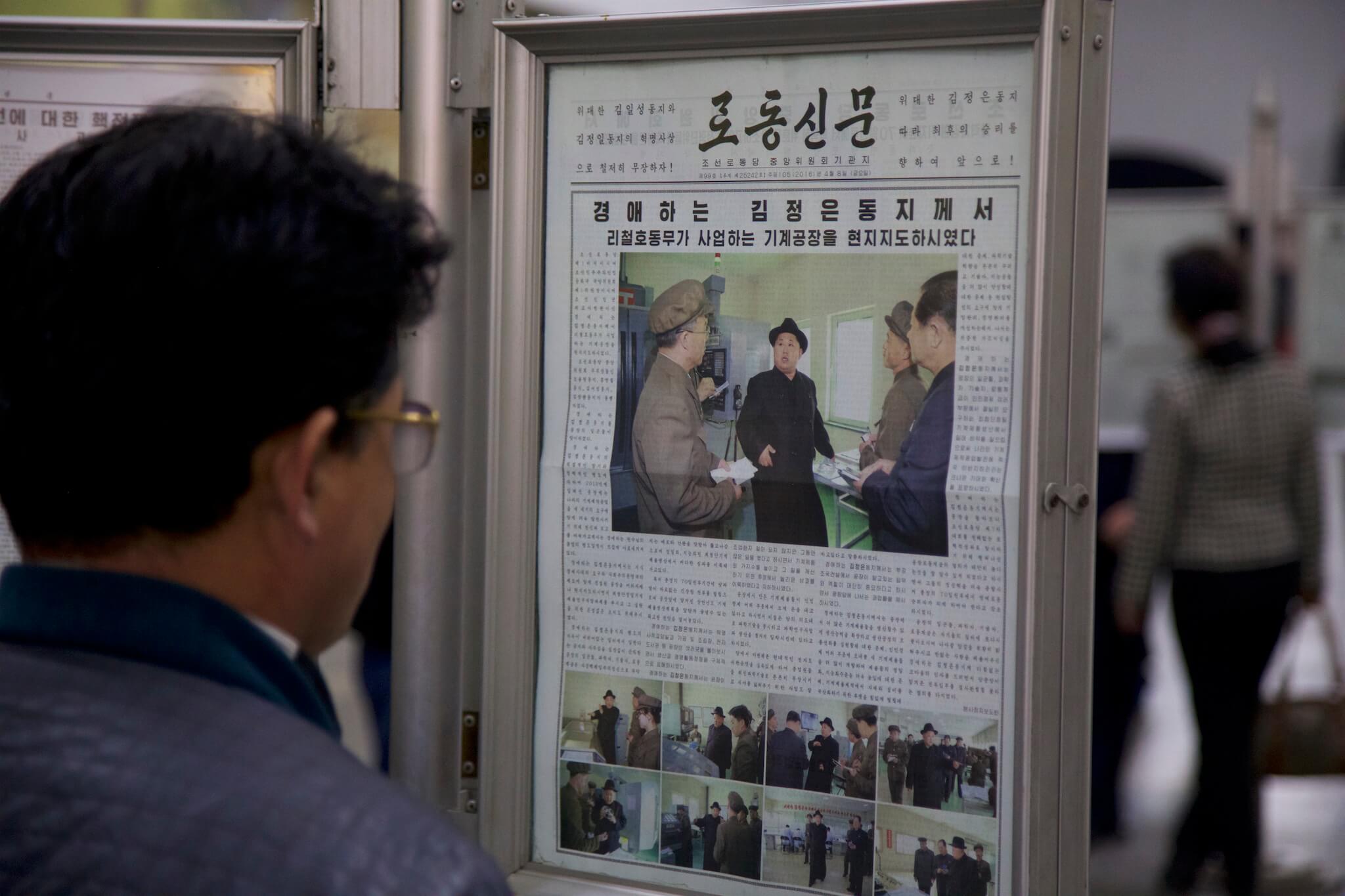
In the middle of the platform, state newspapers are freely available for reading. Here, the “Rodong Sinmun”, the official newspaper of the Workers’ Party of Korea. In North Korea, it is essential to show great respect for the government and its leaders. It is impossible, for example, to fold a newspaper bearing Kim Jong-un’s photo, tear it up or throw it in the garbage can… on pain of being considered hostile to the regime.
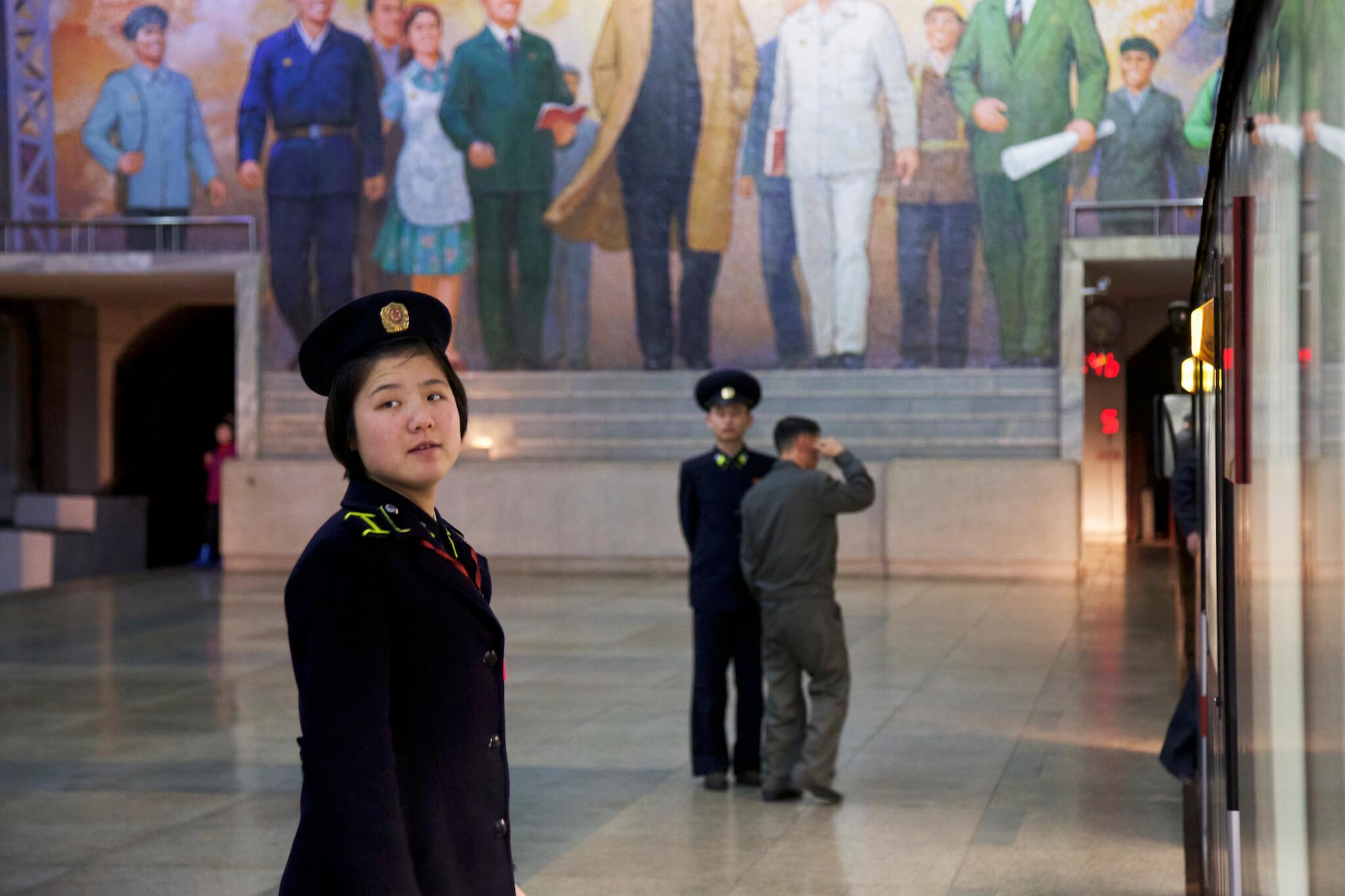
At a depth of 110 meters, it takes around 4 minutes by escalator to reach the platforms. This makes the Pyongyang metro the deepest in the world, a considerable asset in the event of a nuclear attack.
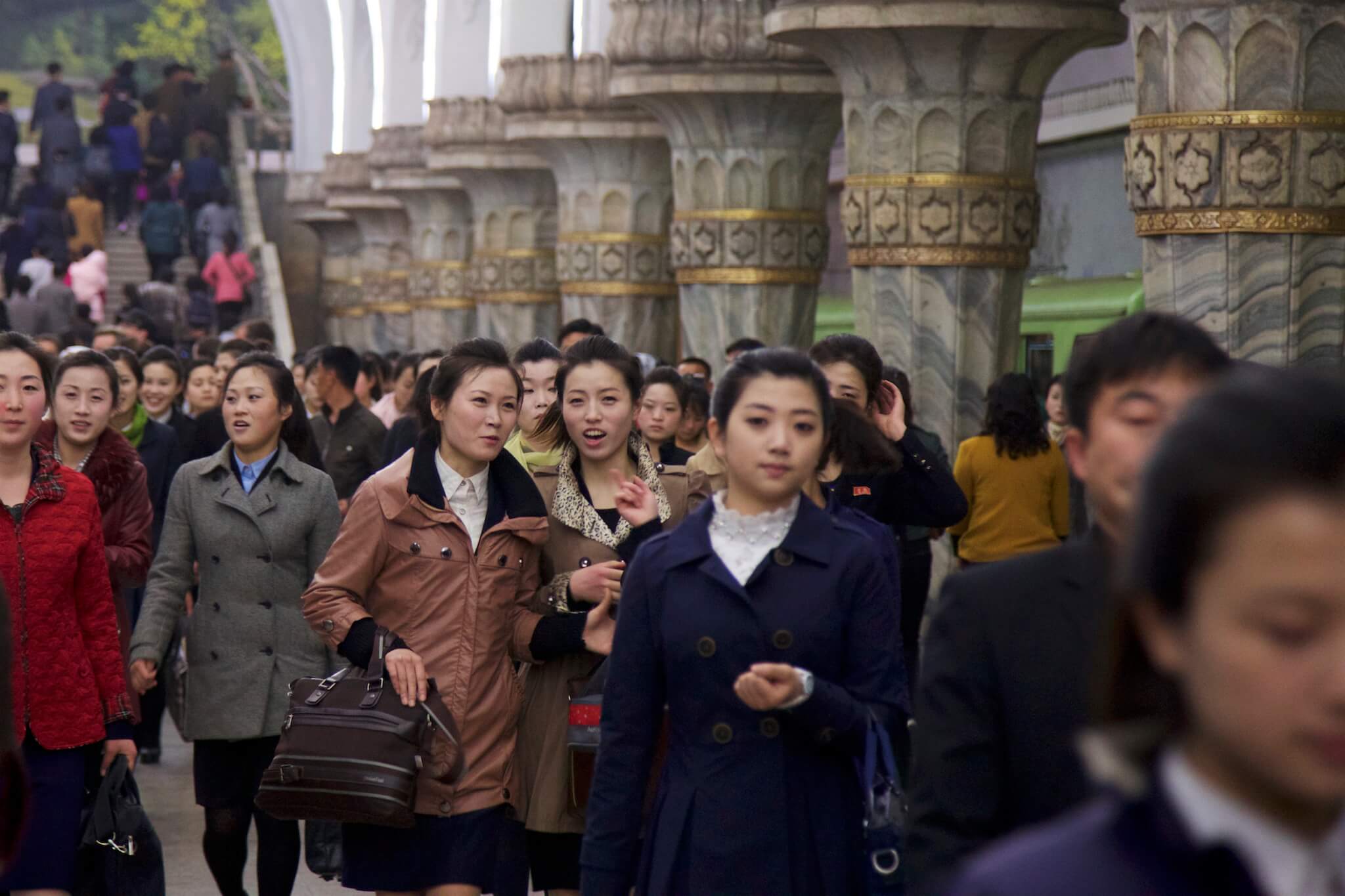
Rush hour?
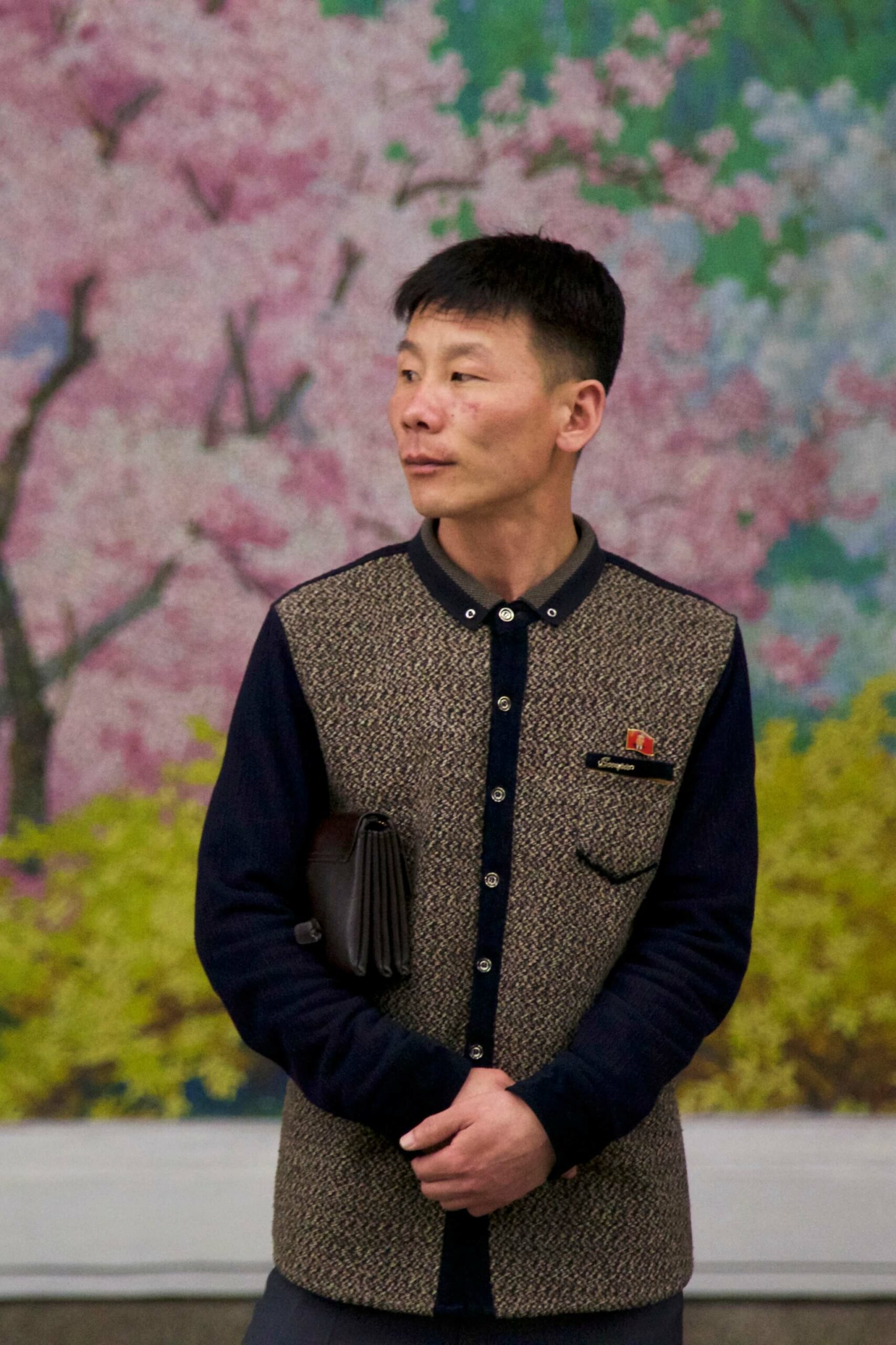
Waiting for the metro.
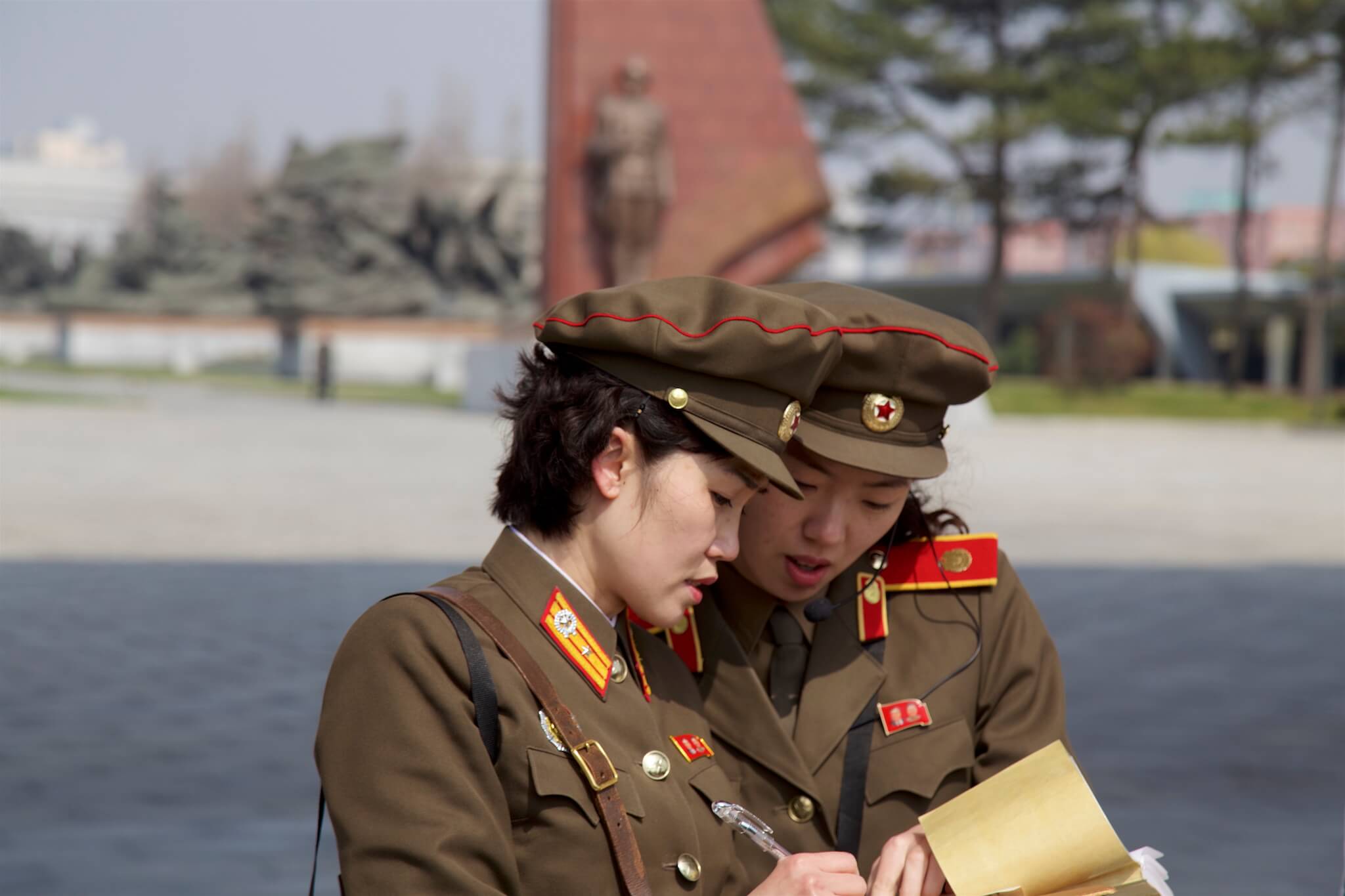
Our two guides to the Victorious Fatherland Liberation War Museum, an anthology of anti-American propaganda.
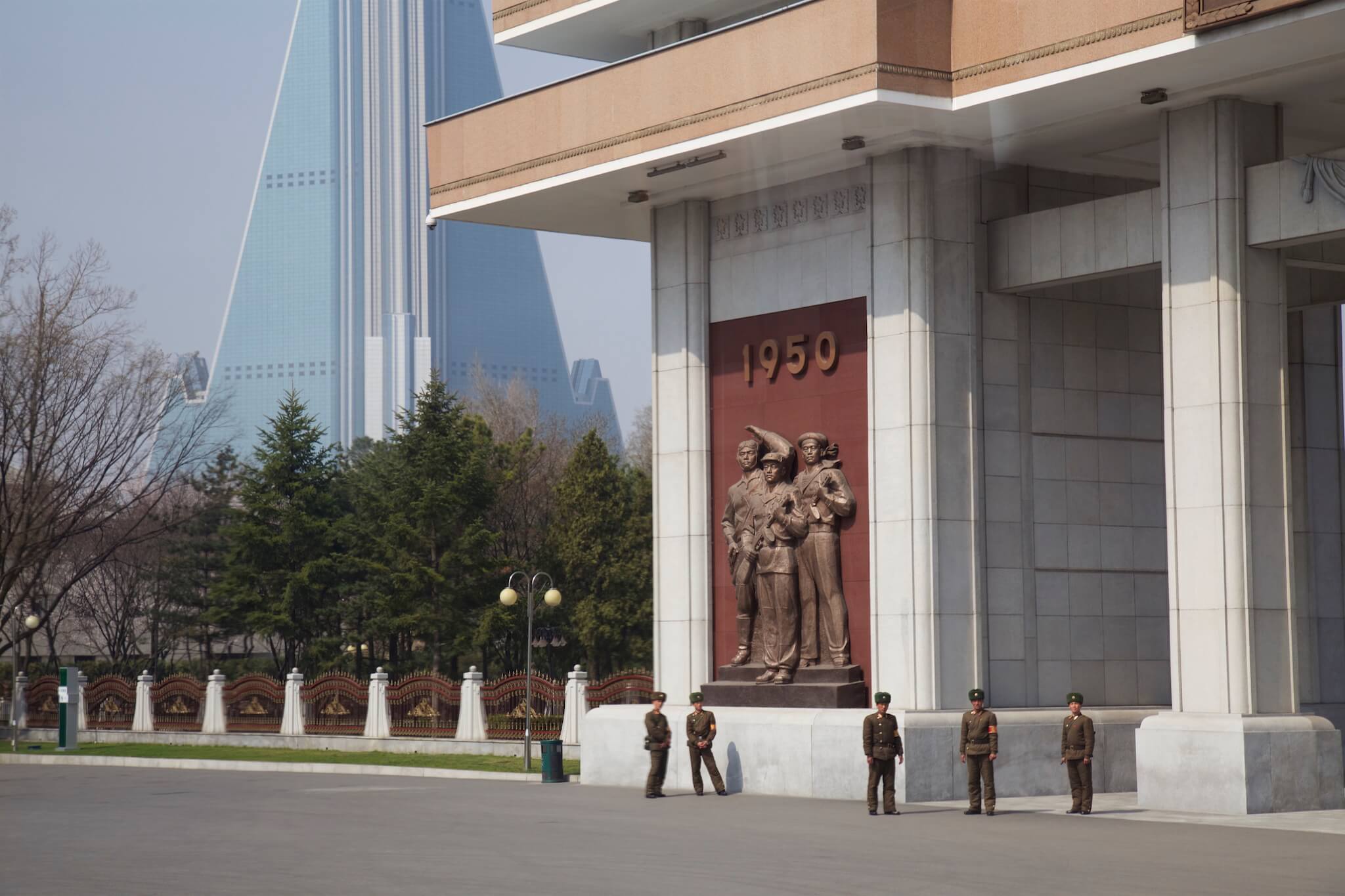
The museum entrance, in a light Soviet architectural style.
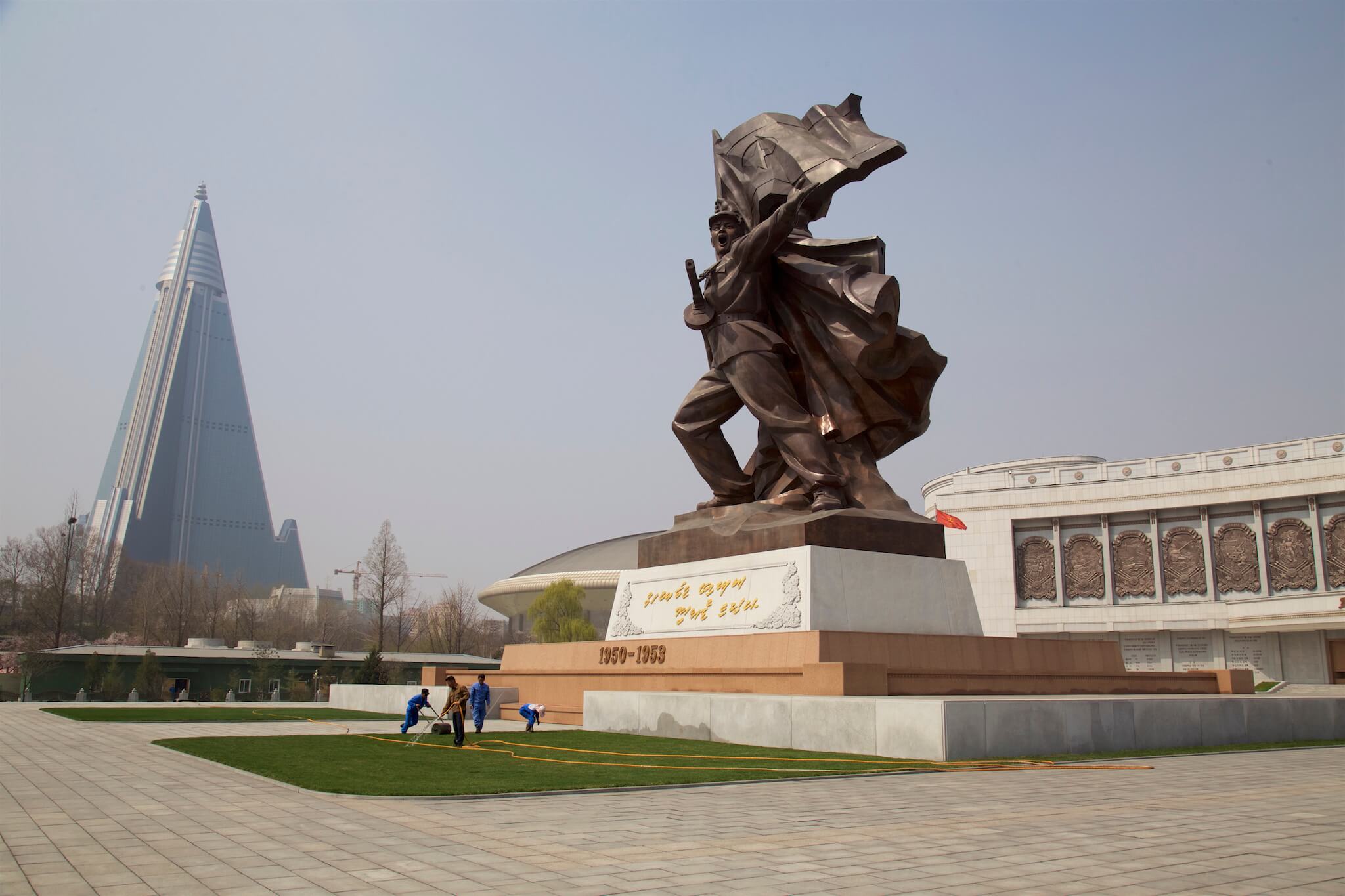
In the background, the Ryugyong Hotel, Pyongyang’s landmark. It is a 105-storey pyramid skyscraper whose construction had to be halted in 1989 when the Soviet Union broke up, due to the USSR’s withdrawal of support for North Korea. For 16 years, the hotel remained unfinished until an Egyptian group provided the funds to complete the building’s exterior in 2008. The interior of the building has still not been completed, contrary to government claims.
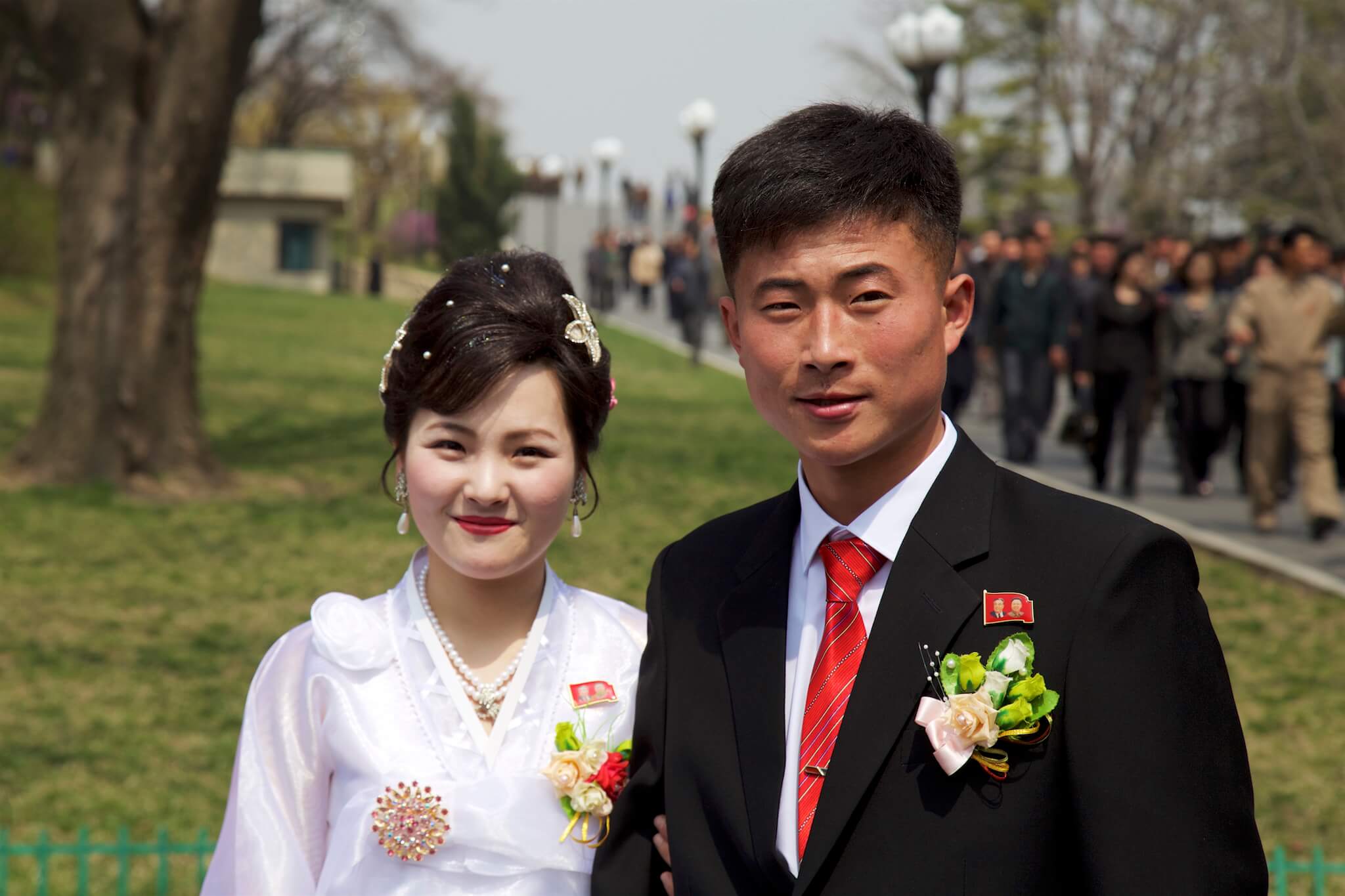
Two newlyweds, close to the party, come to pay their respects at the Mansudae place of worship, erected to the glory of President Kim Il-sung and General Kim Jong-il. In North Korea, freedom of religion is non-existent. The only religion that exists is that dedicated to the socialist state and the Kims.
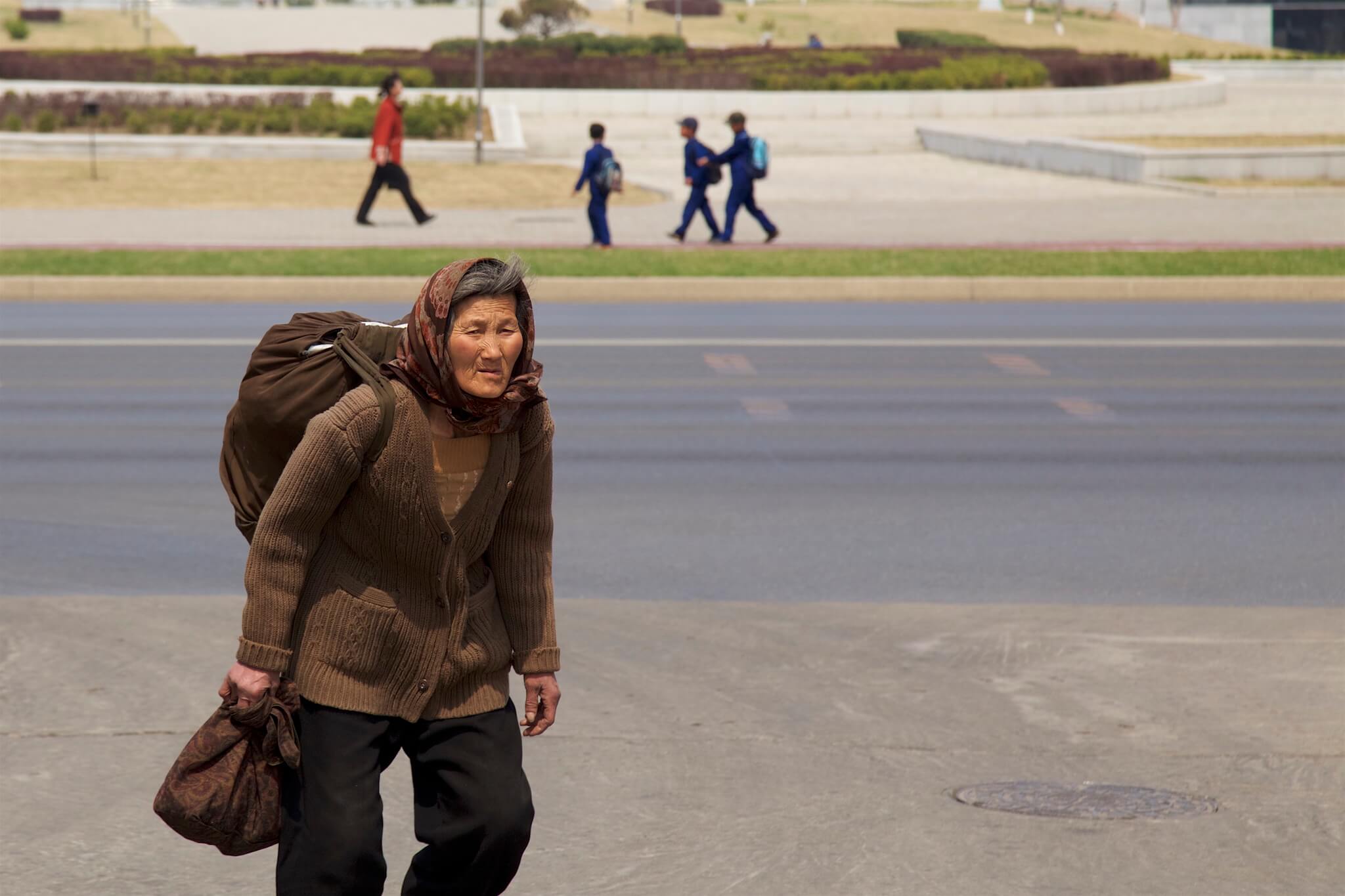
Poverty is not really visible in Pyongyang. On the one hand, it is hidden from visitors, preventing them from moving around freely, and on the other, the most disadvantaged are excluded from the capital. However, within the Pyongyang population itself, differences in wealth persist.
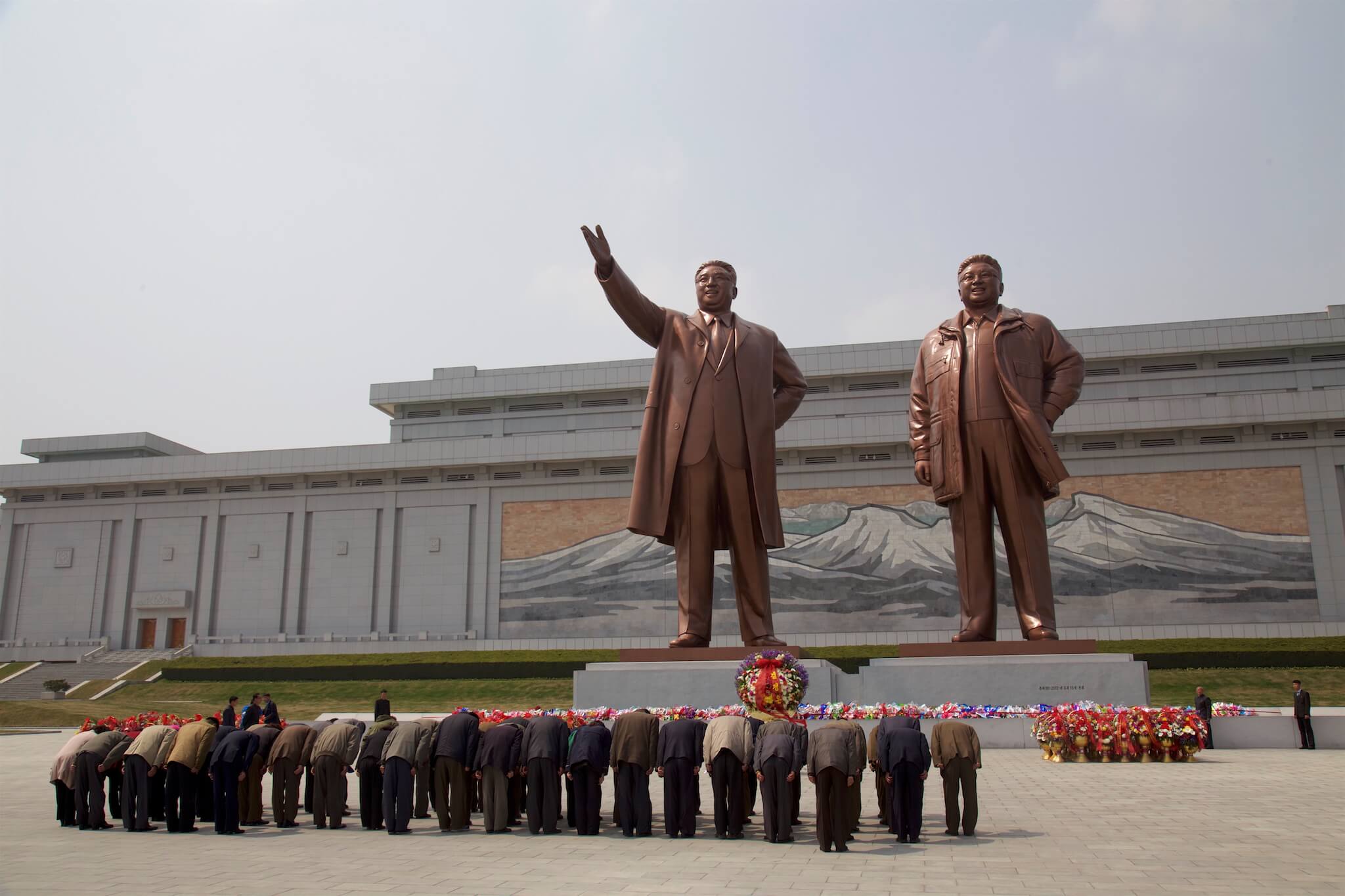
Mansudae Great Monuments. The epicenter of Kim worship, people lay flowers at the feet of the gigantic bronze statues to honor President Kim Il-sung and General Kim Jong-il, before lining up to bow before them.
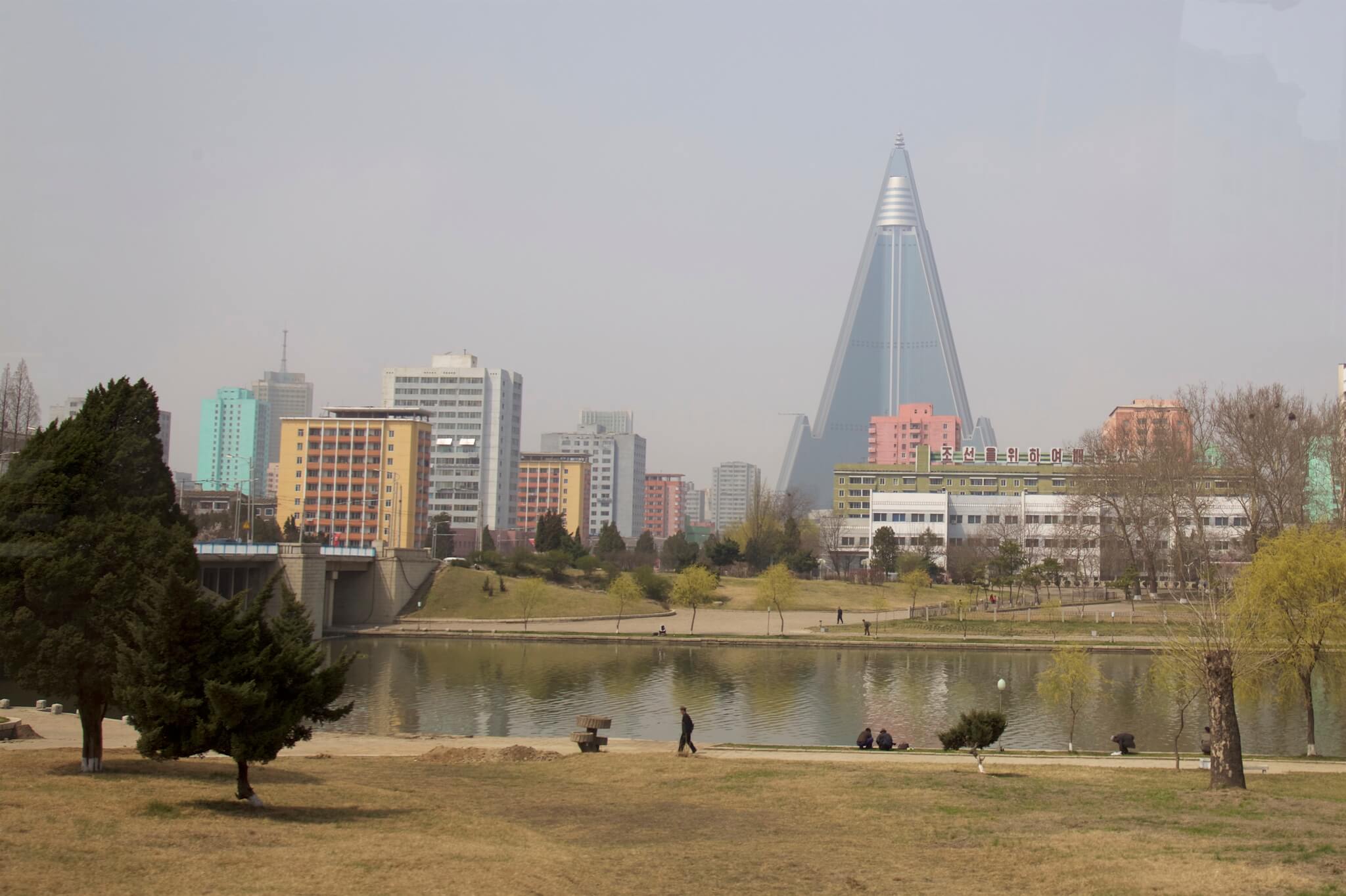
Pyongyang and the futuristic Ryugyong Hotel.
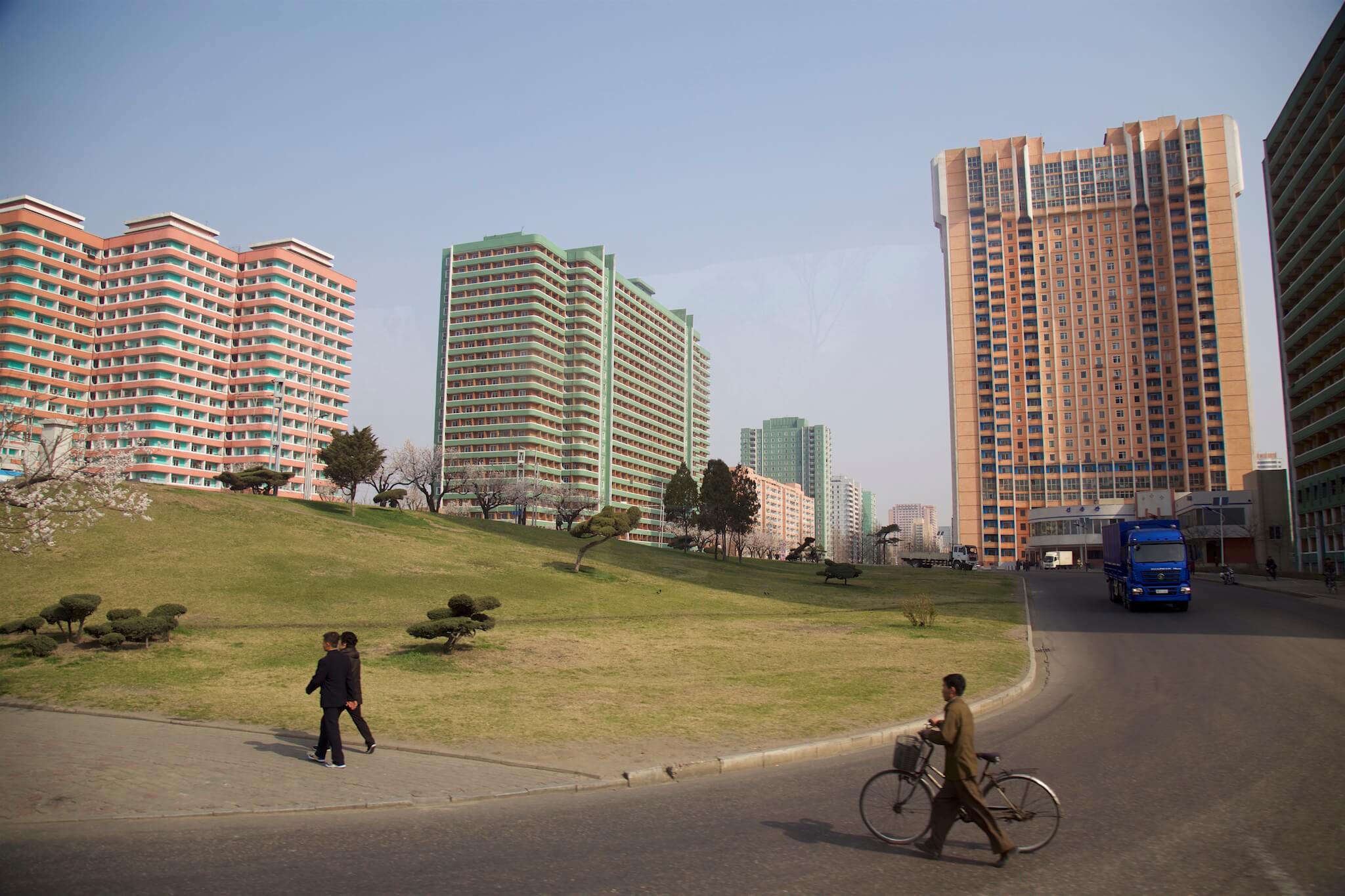
The cleanliness of the streets and the total absence of advertising or commercial signs make Pyongyang a timeless city.
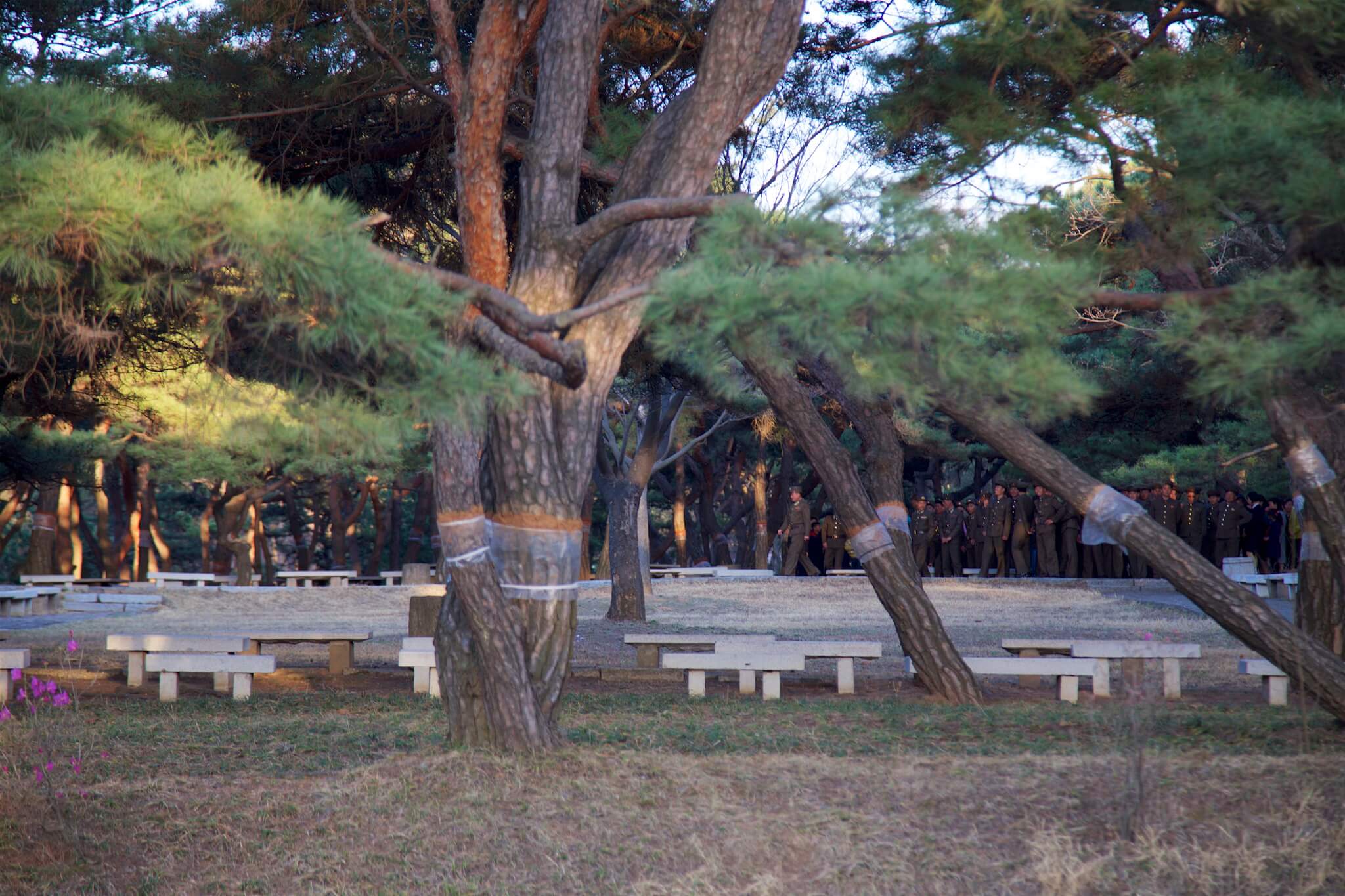
Military gathering for an unknown reason.
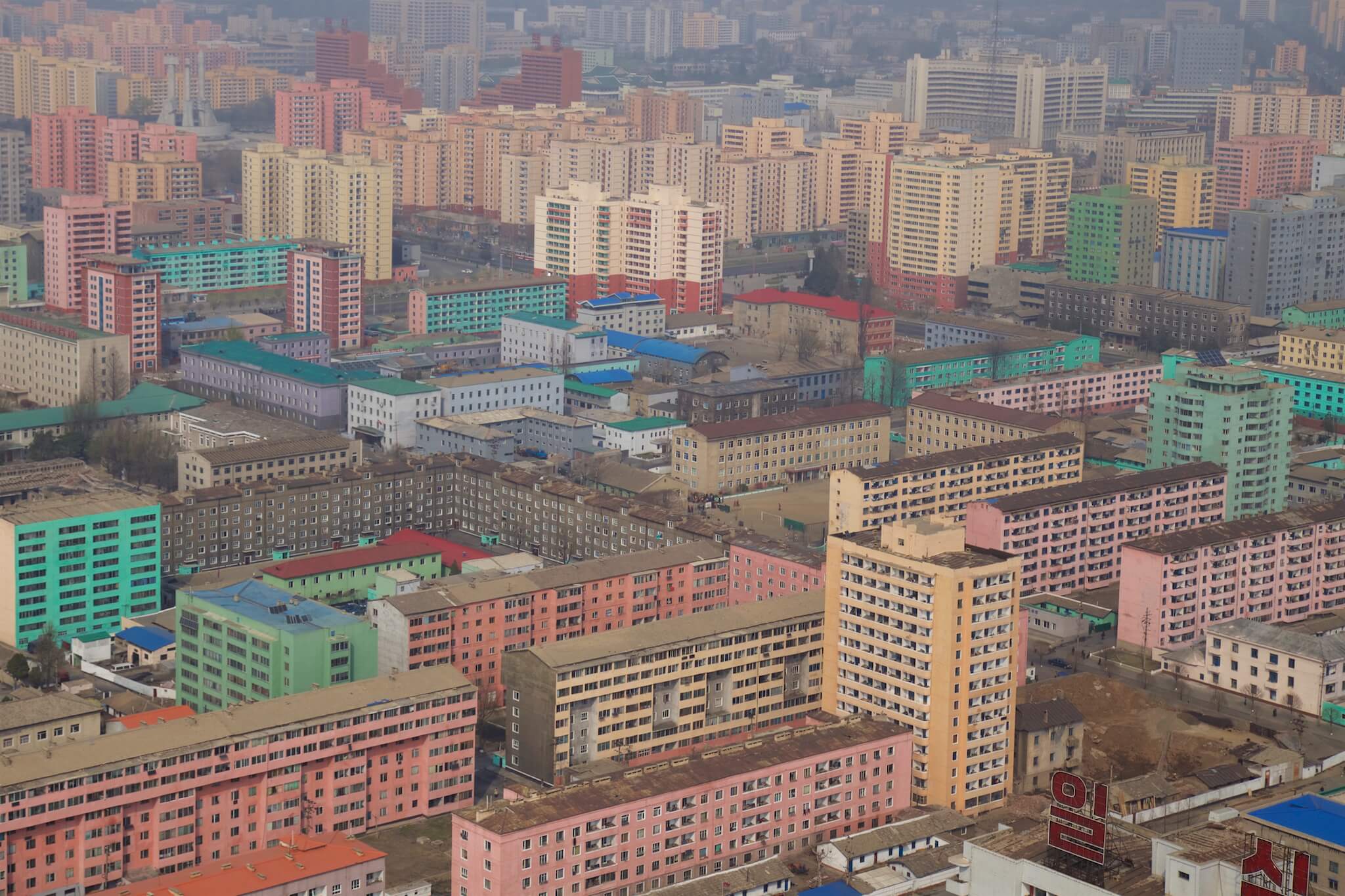
View of Pyongyang’s skyline from the top of the 170-meter-high Juche Tower.
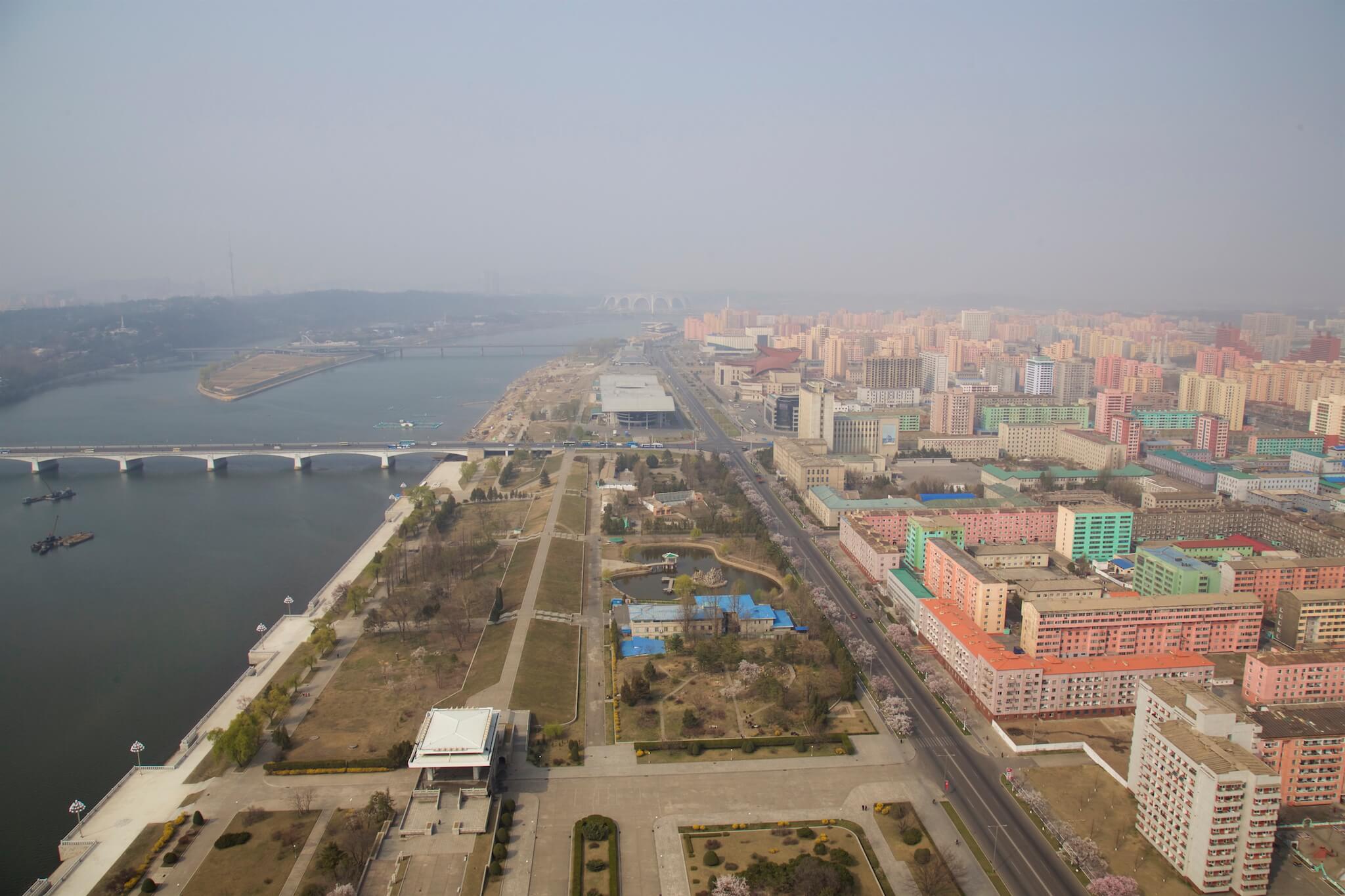
Although the number of cars circulating in Pyongyang is increasing year on year, particularly with very cheap cars from China, traffic levels remain relatively low. The May Day Stadium can be seen in the background.
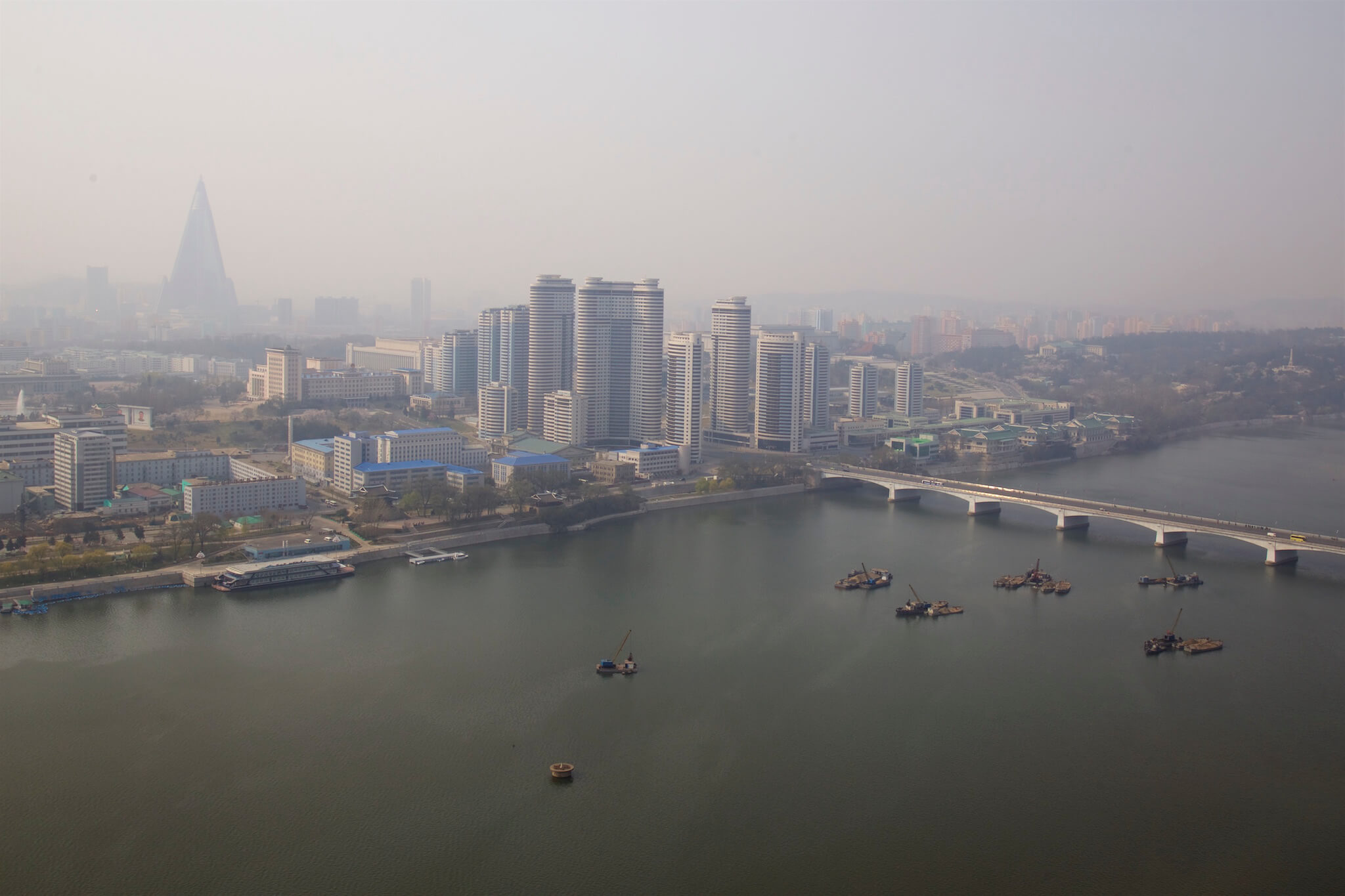
The Taedong River splits the capital in two.
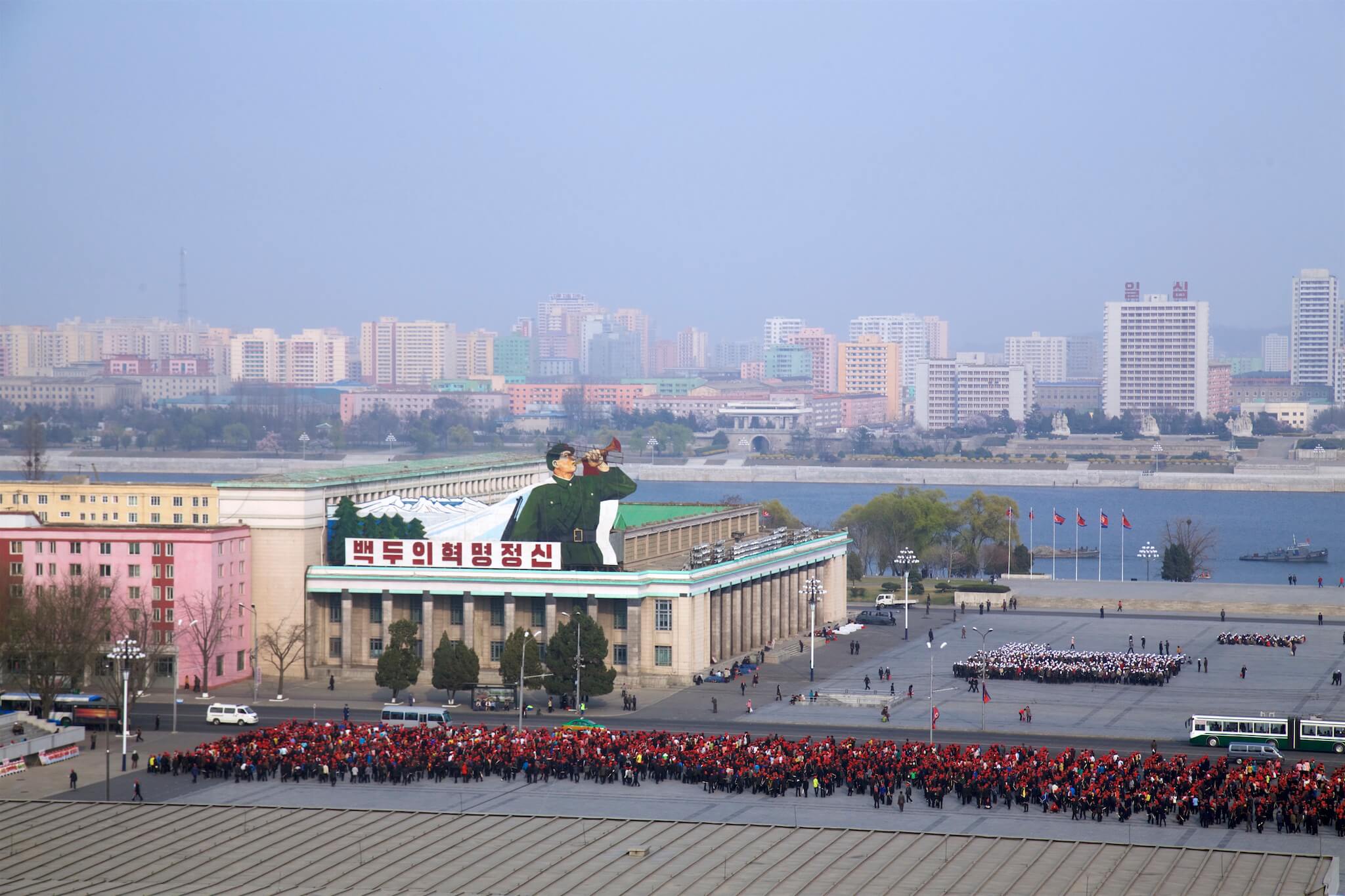
Rehearsal for a mass performance in Kim Il-sung Square.
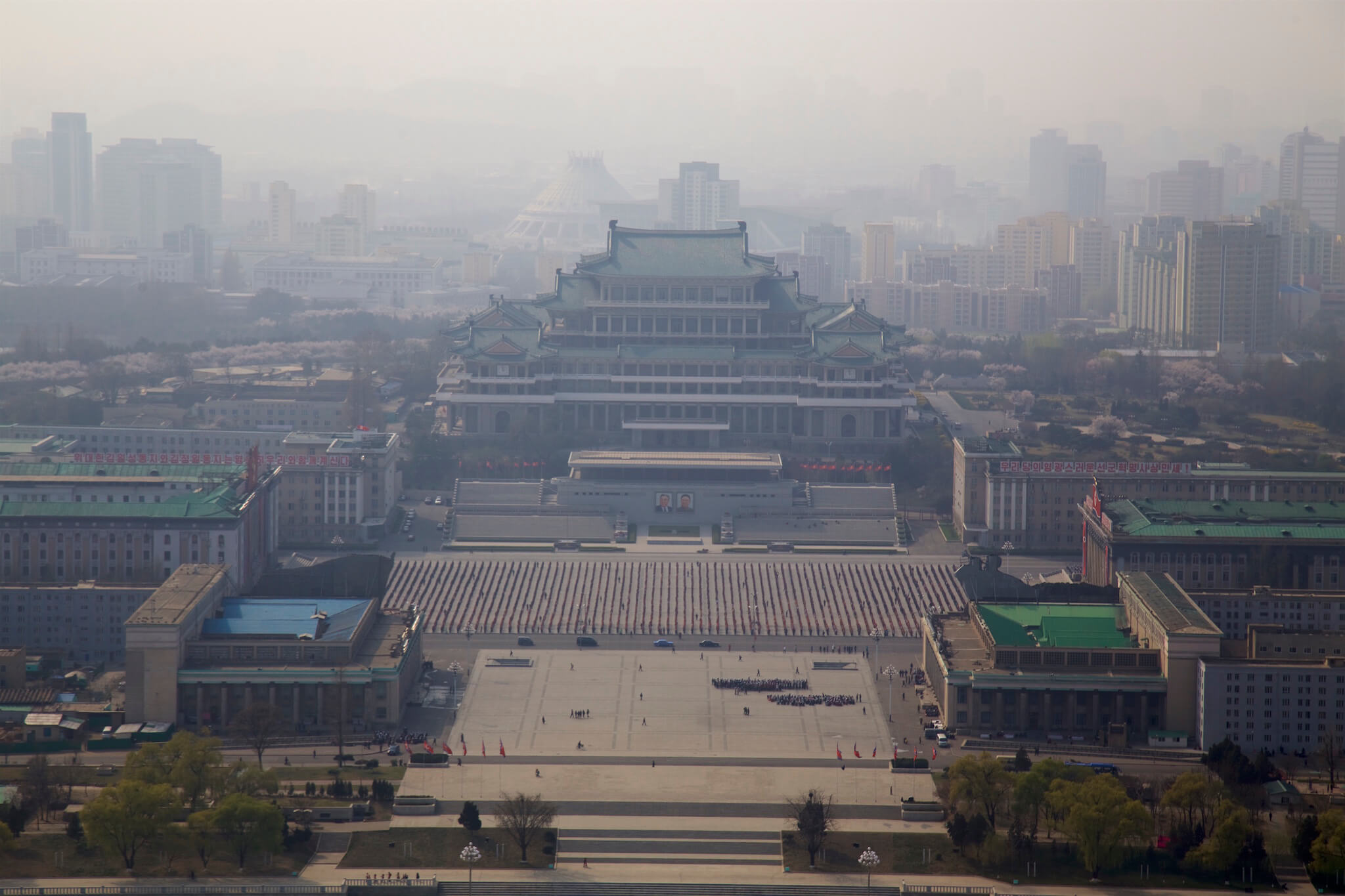
According to our guide, there are 50,000 people rehearsing very precise gestures and movements.
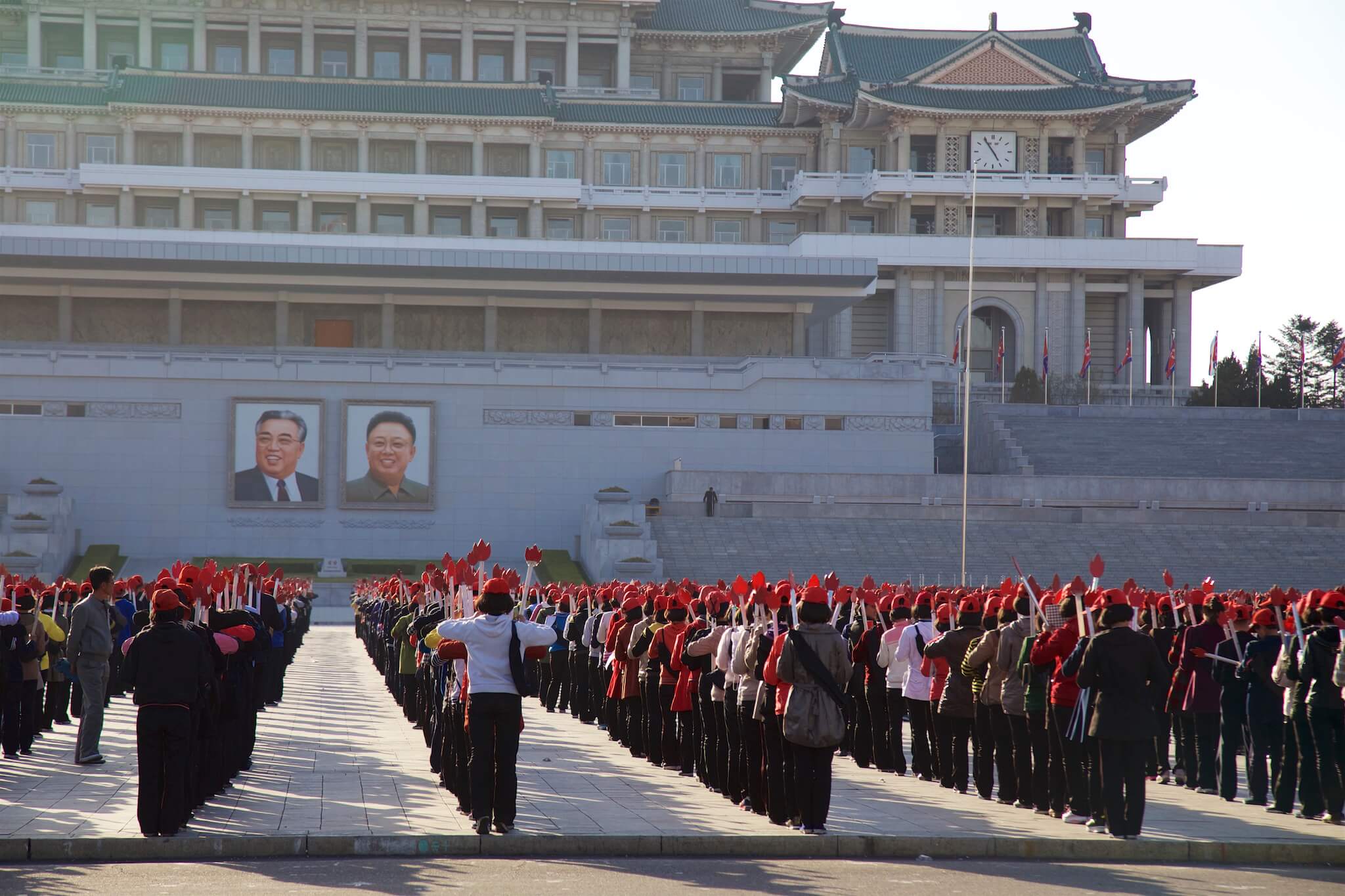
All lined up, groups take turns from morning to night.
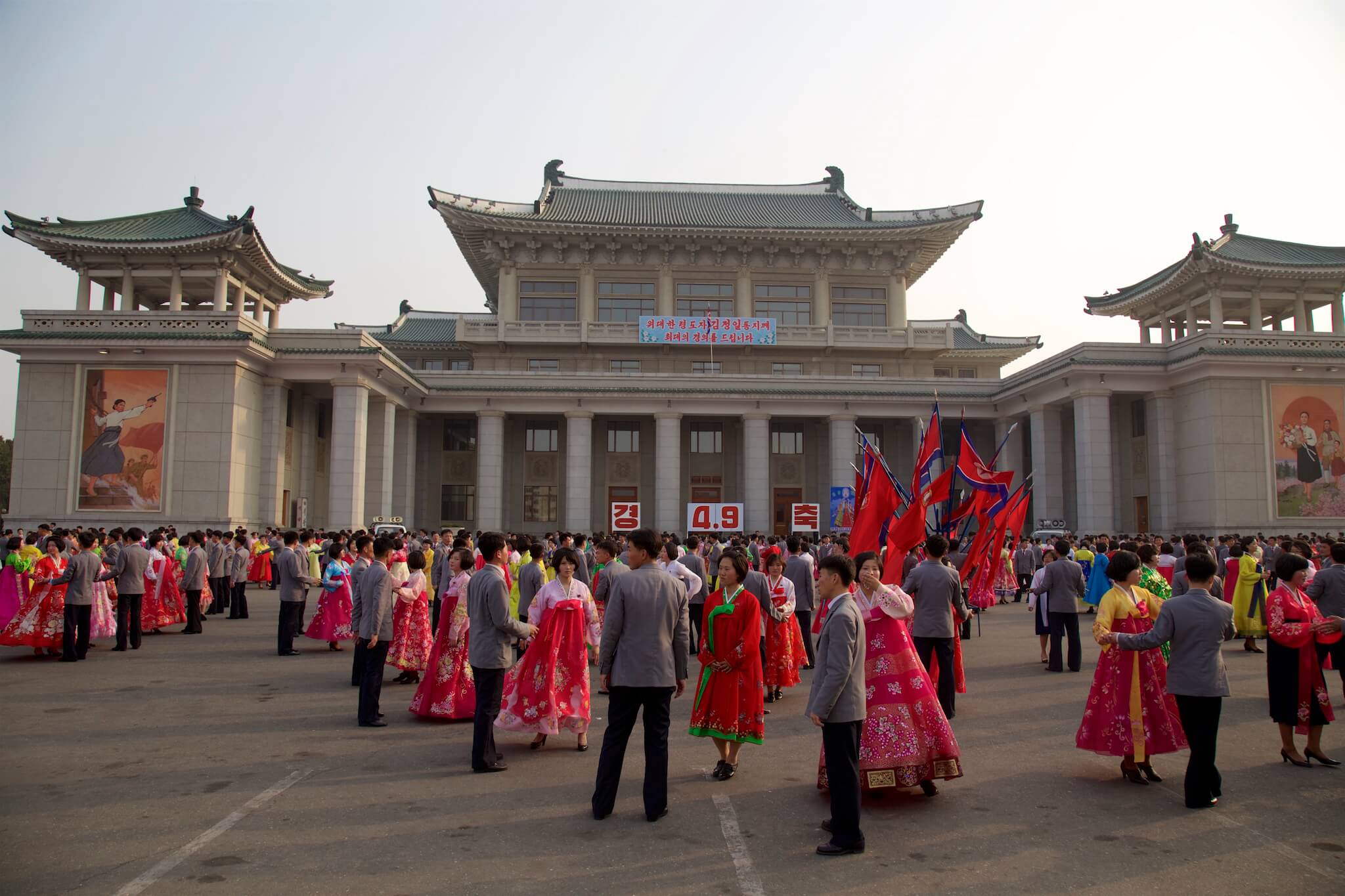
Mass dances are emblematic of North Korea. At certain times of the year, students from local universities gather in large squares to dance.
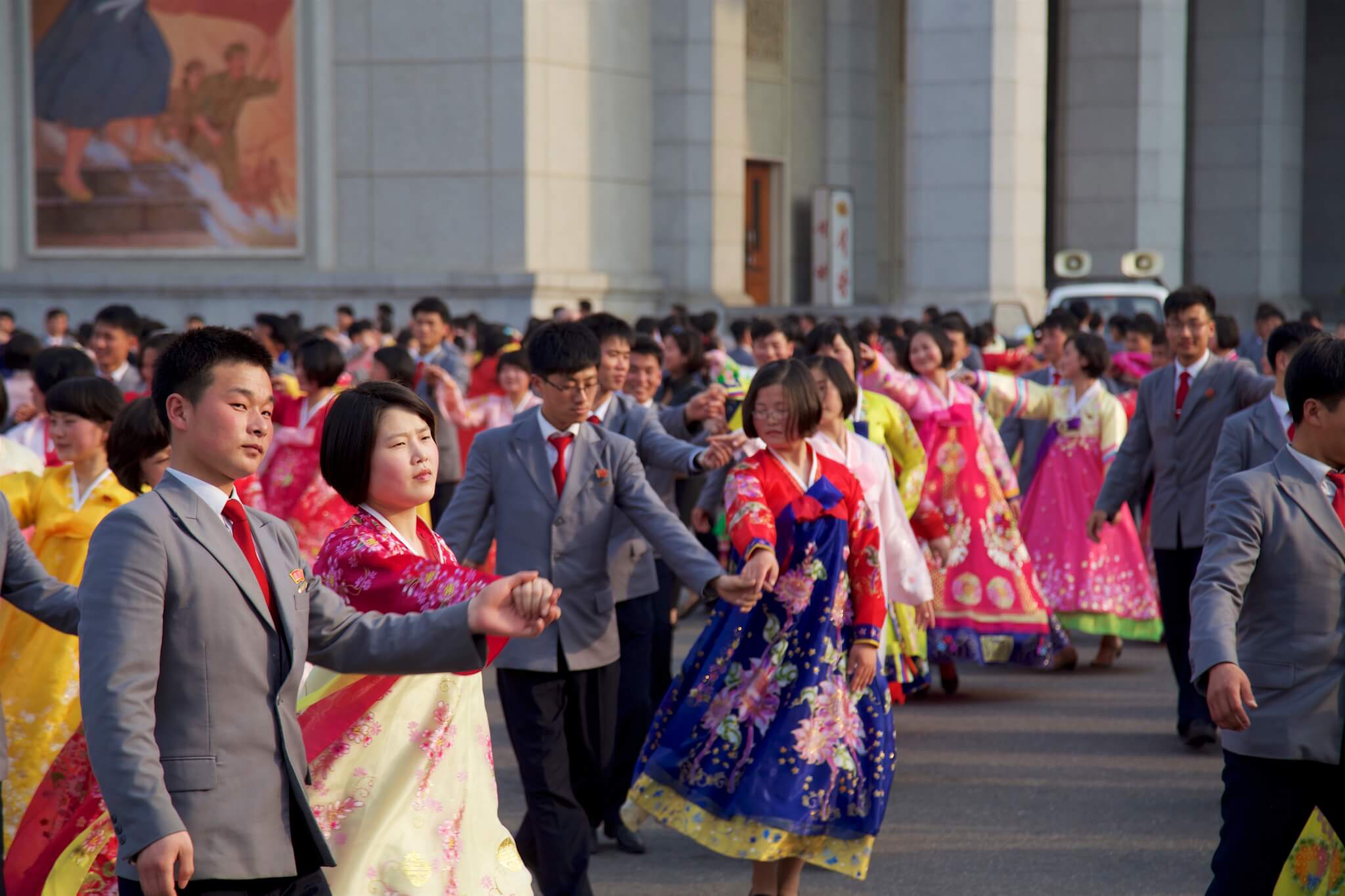
To the sound of nationalist music, the dancing couples moved in perfect harmony. Some of us even joined in the dance as a sign of cultural rapprochement and friendship.
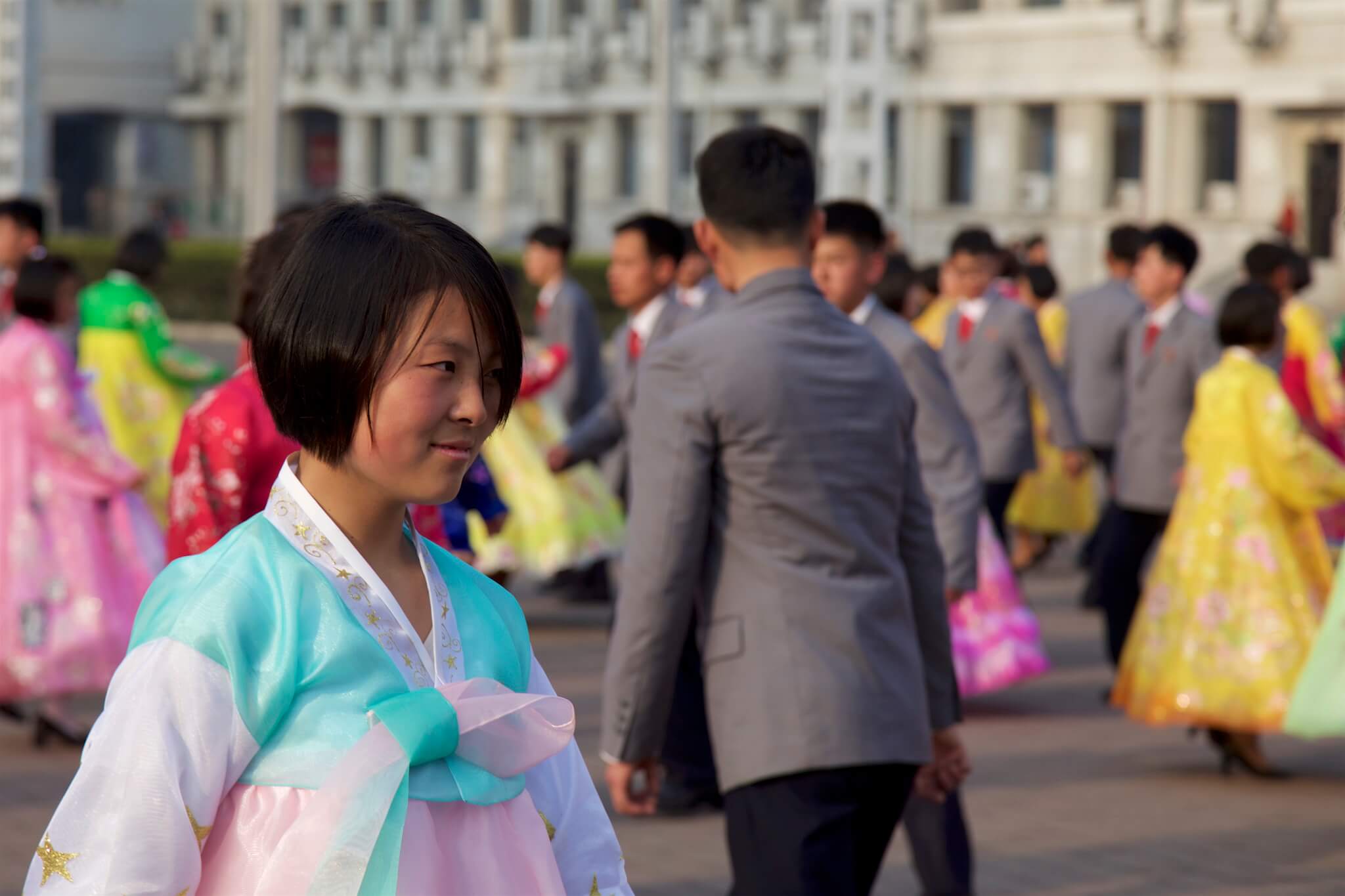
The women are dressed in the traditional Korean “hanbok”, while the men wear suits.
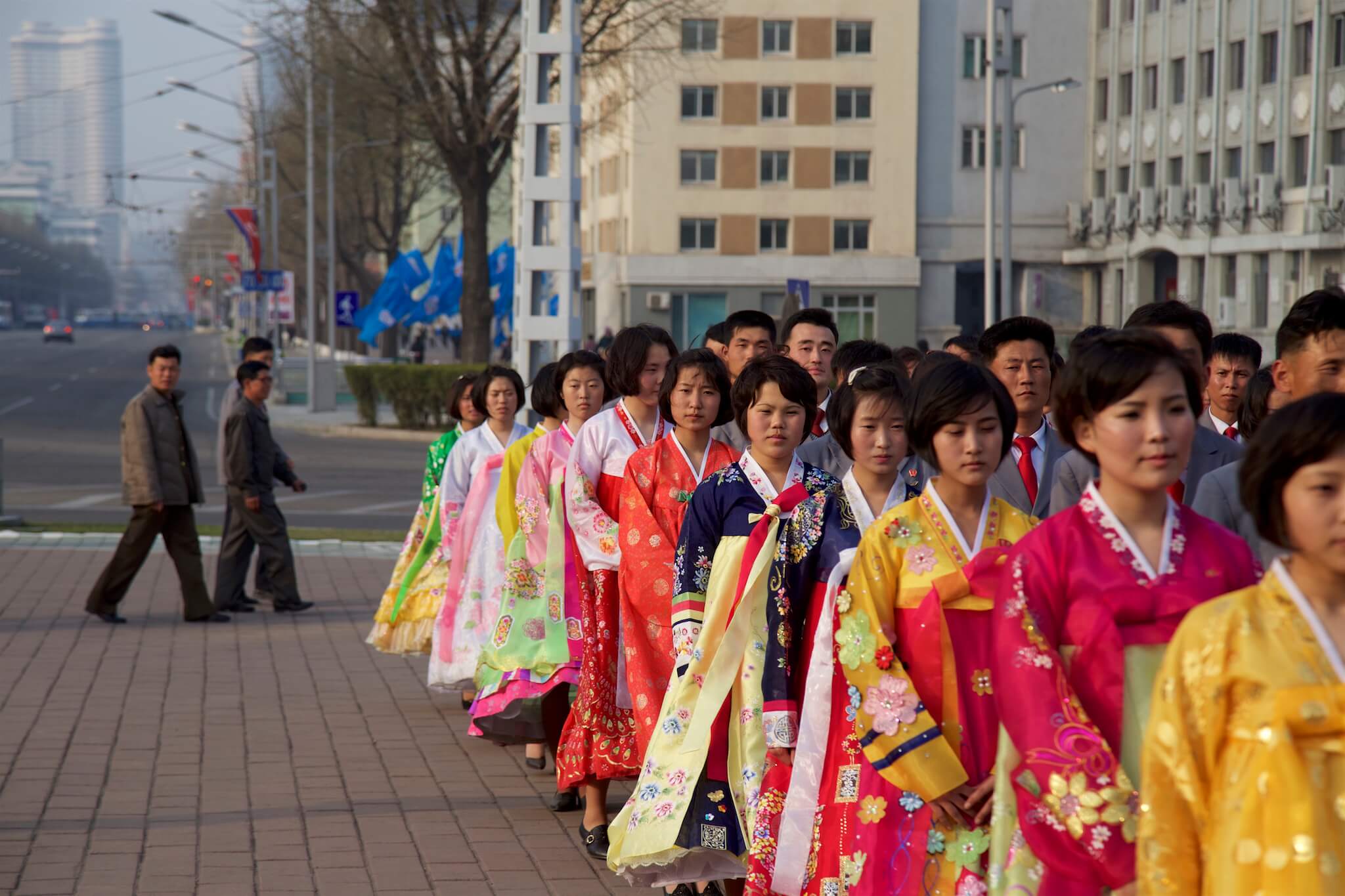
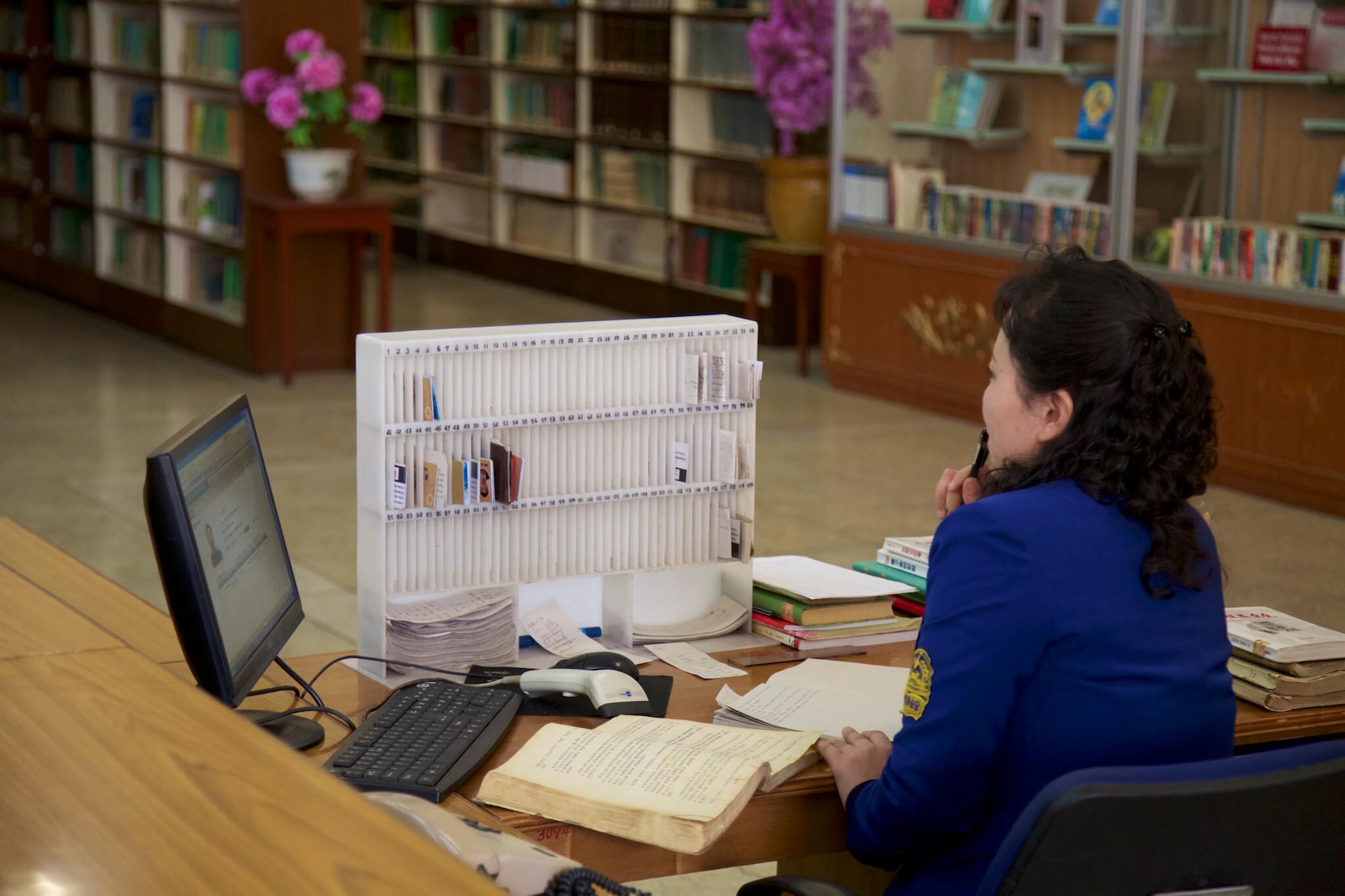
Inside Pyongyang’s library, known as the “Great House of People’s Studies”. The building is said to contain 30 million books.
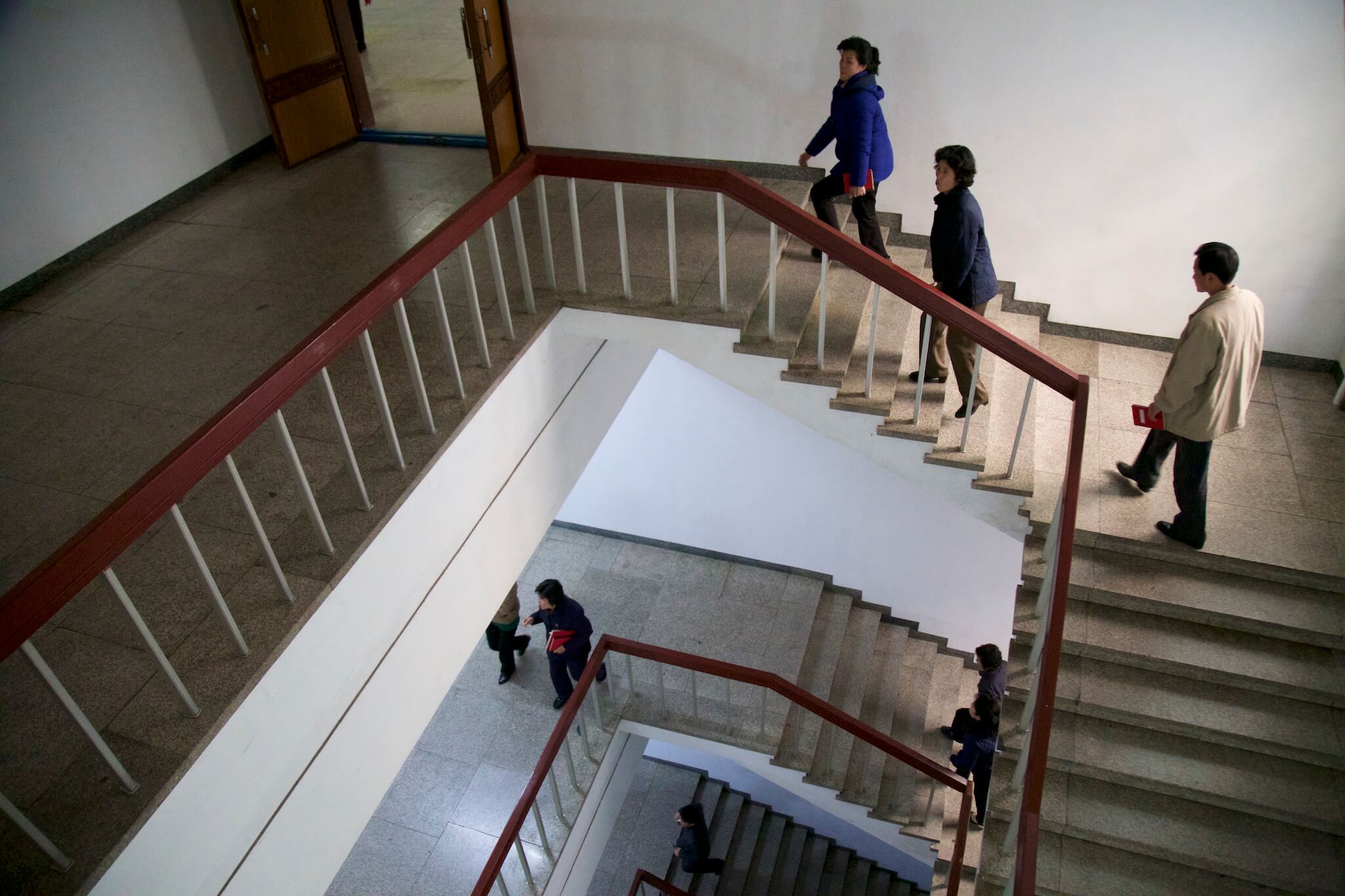
When I visited in April, the library was freezing, with no heating. In winter, the average minimum temperature in Pyongyang is -13°C…
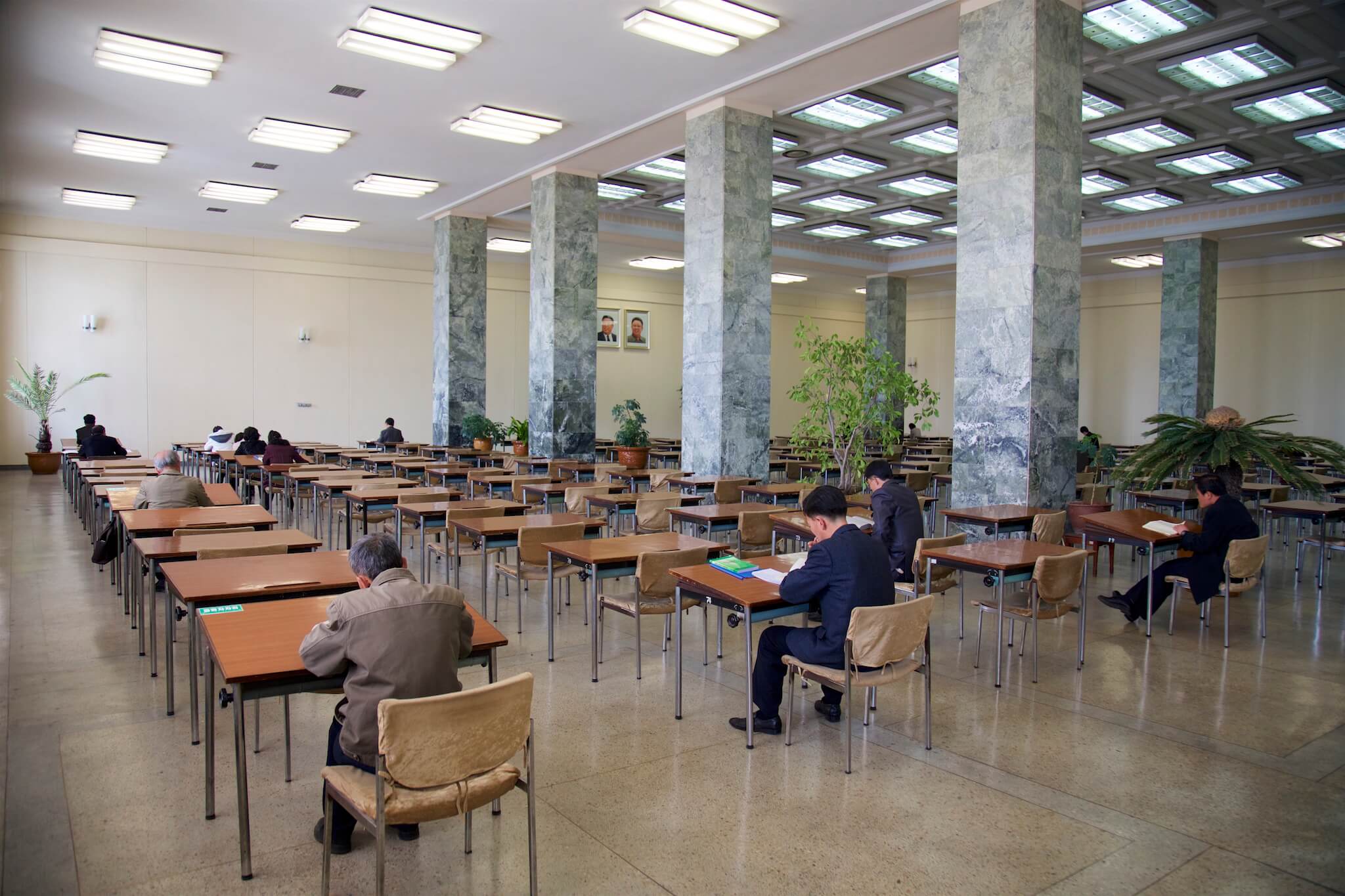
Study room in the library. The noisy and fortuitous arrival of a group of twenty or so tourists didn’t generate the slightest look of disapproval, as if the primary function of the occupants was merely figurative…
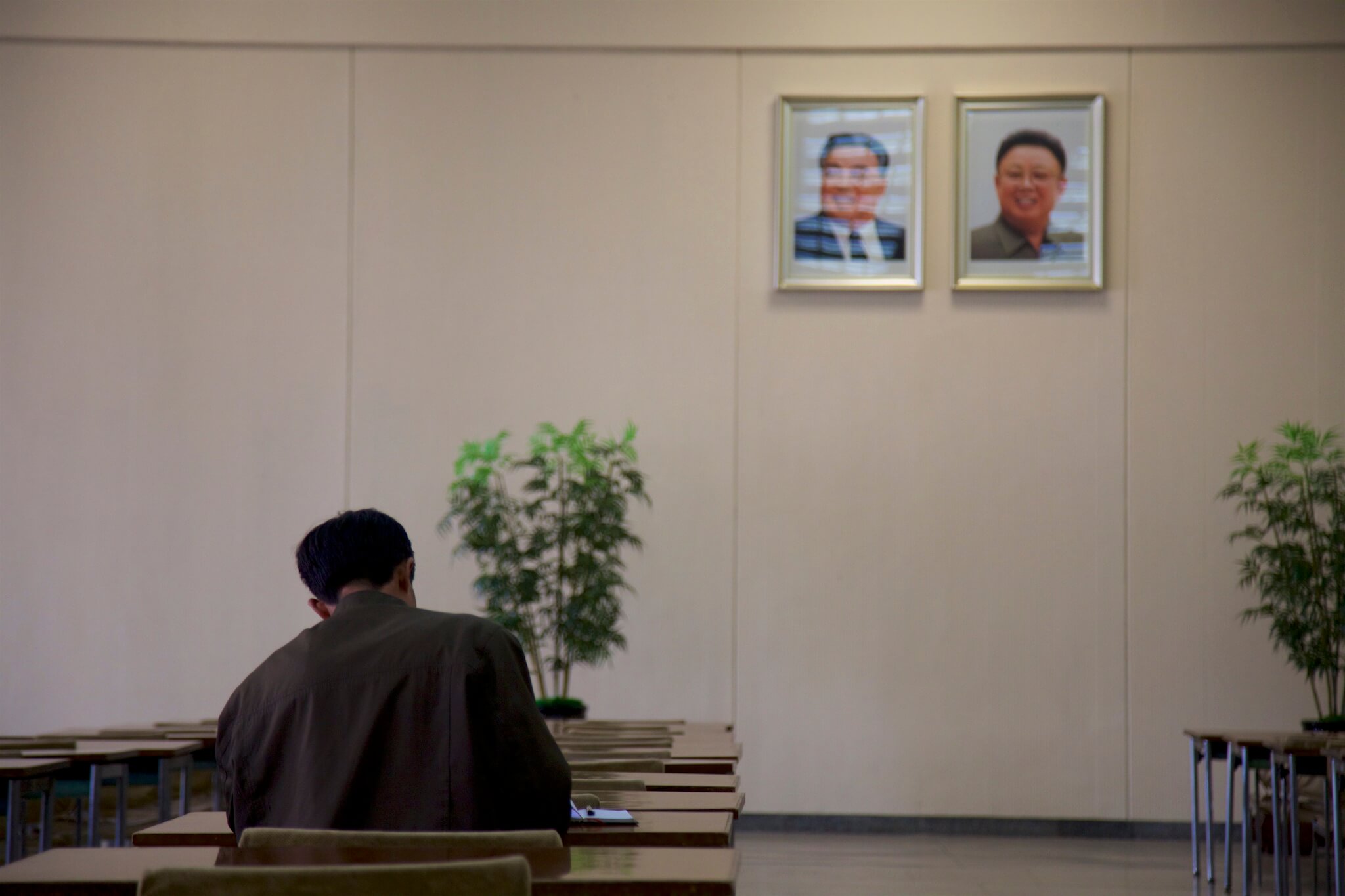
Concentration under the eyes of the two Kims.
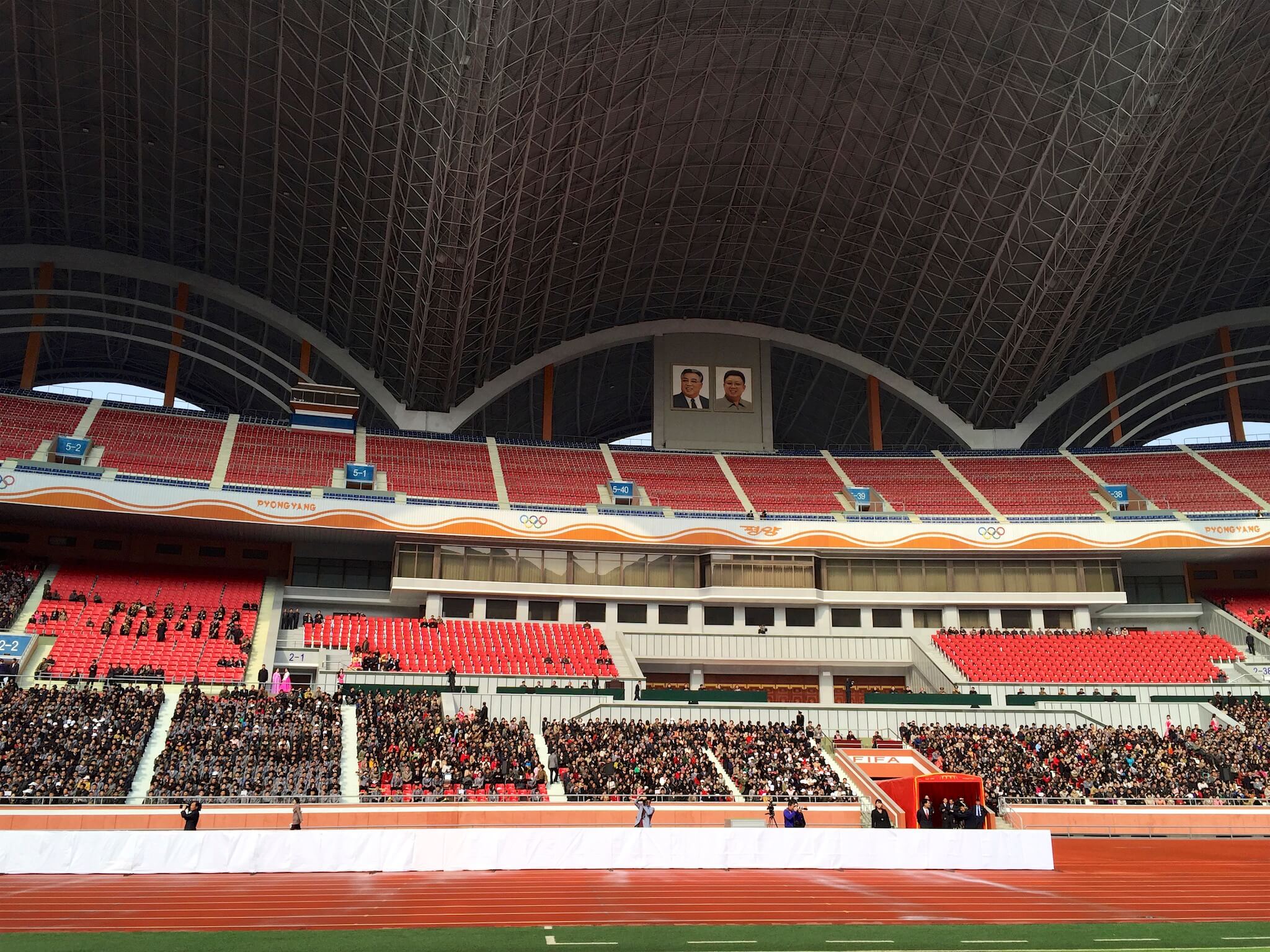
Marathon starts at 9:30 am from the First May Stadium. Pyongyang Marathon rules are strict: 4 hours maximum. Beyond that, access to the stadium is closed and a broom wagon collects latecomers. Having never run a marathon in under 4h13, it would be a lie to say that I was serene at the start.
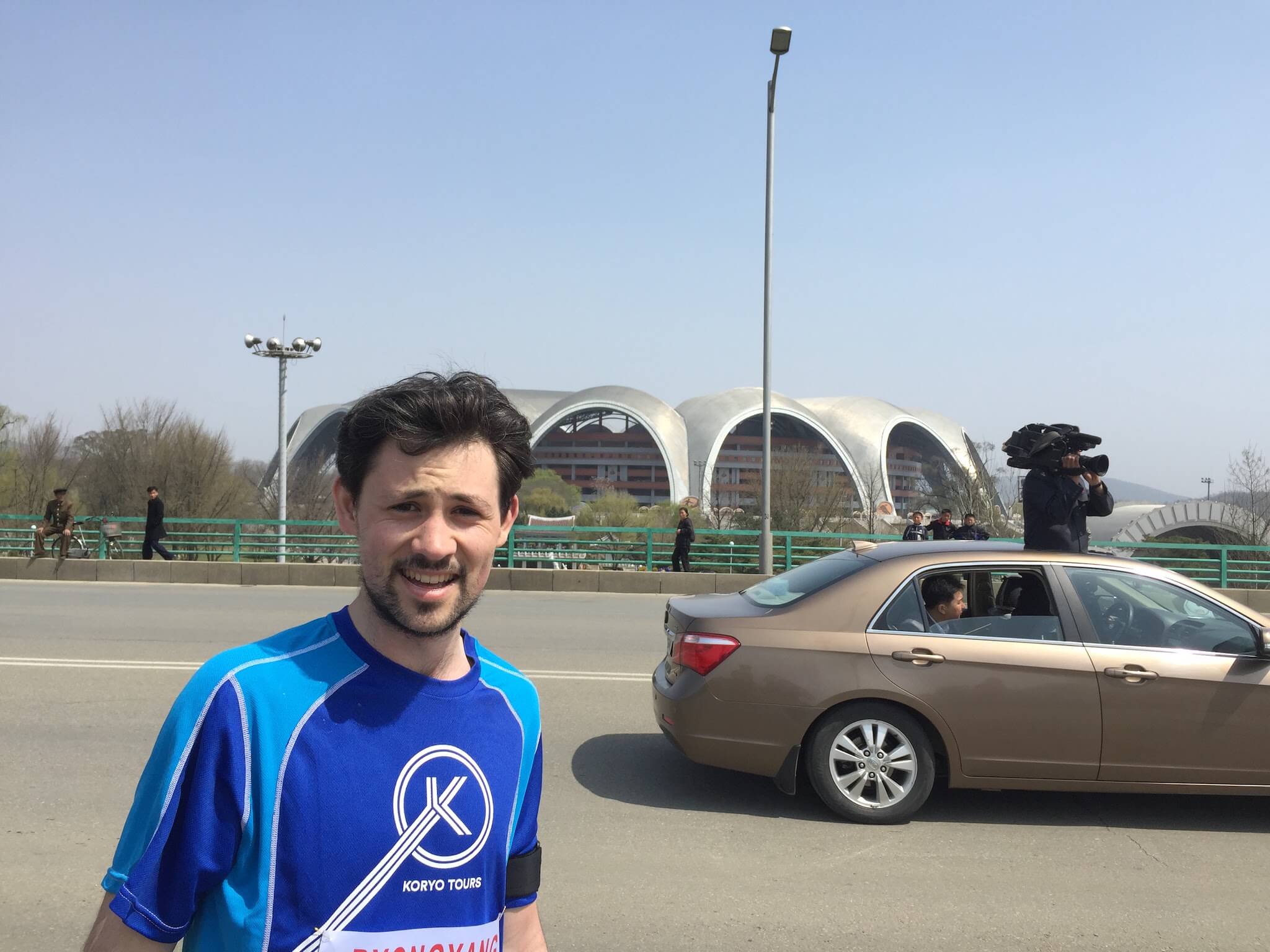
After 21 kilometers, I stop for a few seconds to immortalize my run, with the Premier-Mai stadium at my back © David de Souza
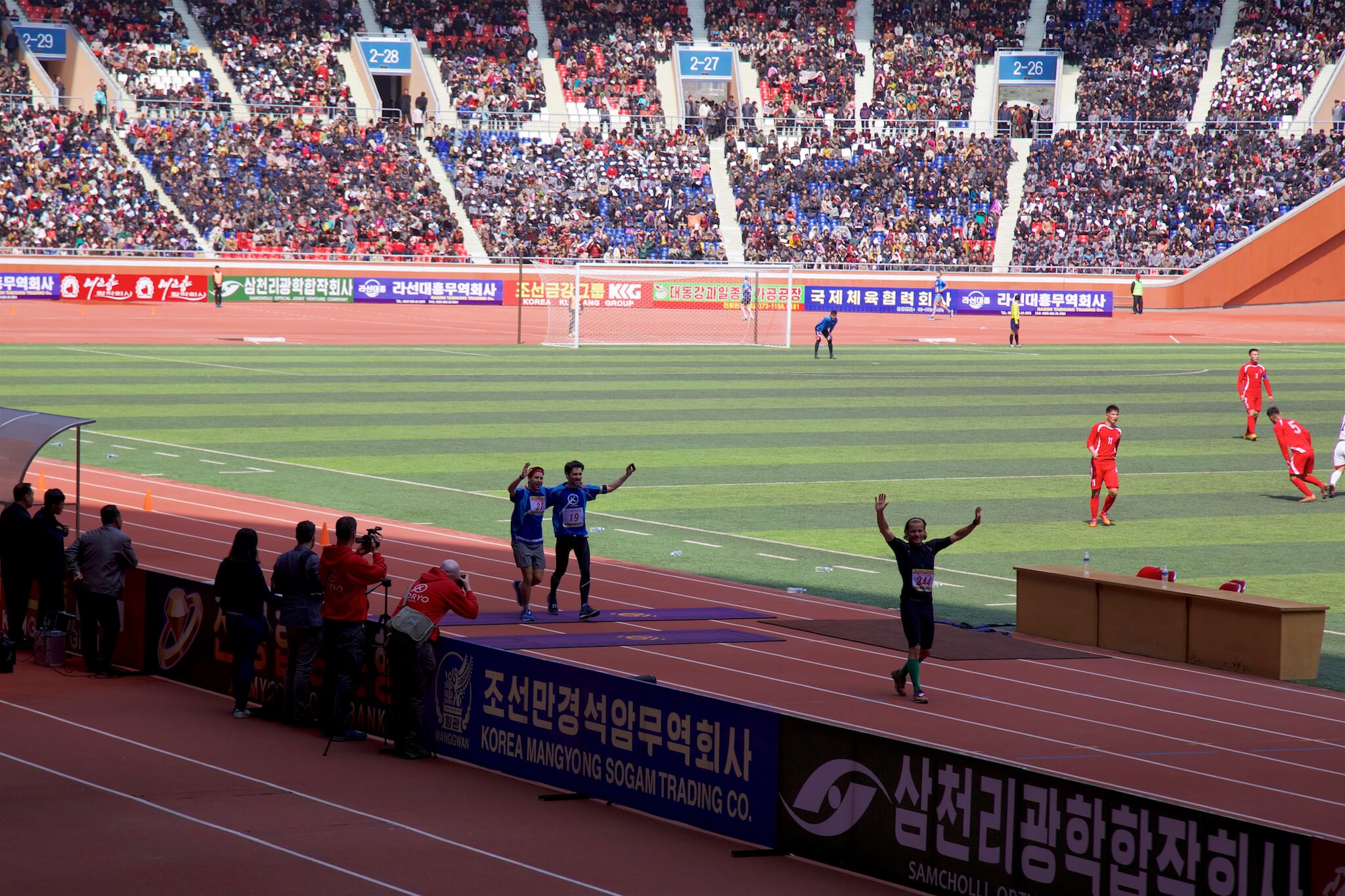
Finished to the applause of the crowd, after 3 hours 52 minutes of effort.
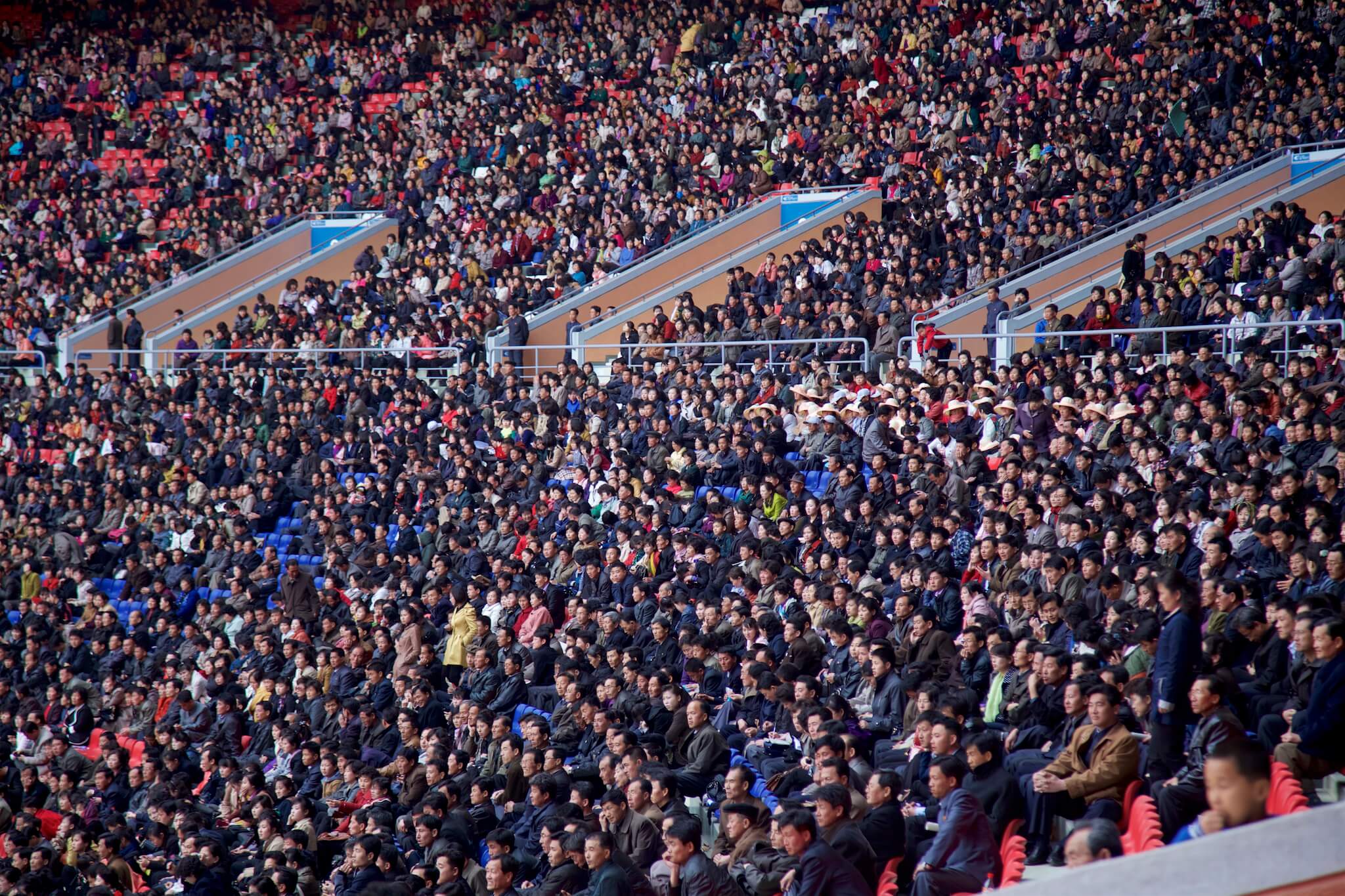
With a capacity of 150,000, it is currently the largest stadium in the world.
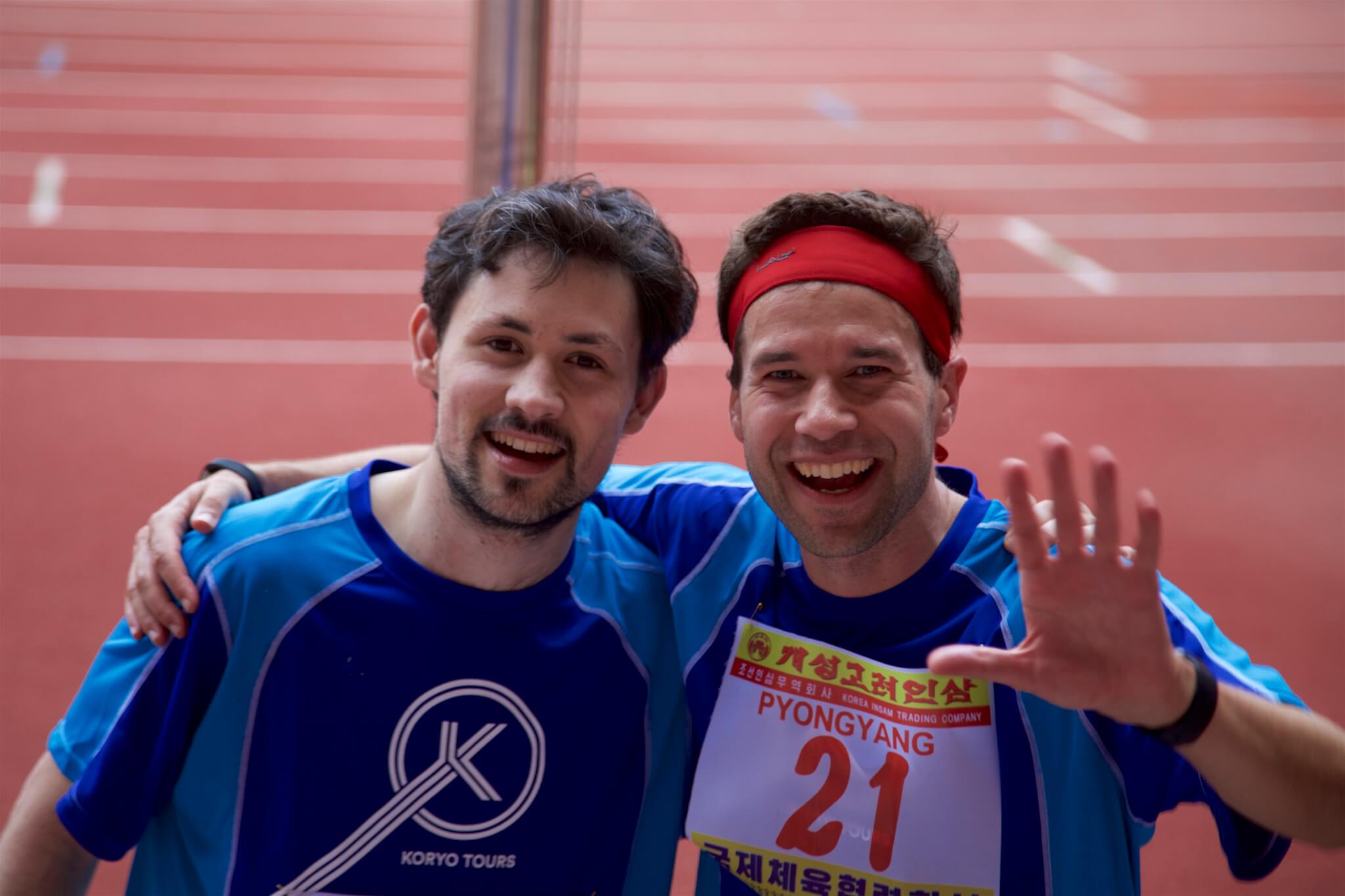
Photo at the finish of the marathon in the Premier-Mai stadium. I met Dave in Pyongyang, with whom I ran the whole race. More prepared than me, Dave supported and trained me over the last 10 kilometers to finish in under 4 hours. Dave has set himself the challenge of running 7 marathons on 7 continents. North Korea was his sixth marathon, and now he’s missing the Antarctic marathon…
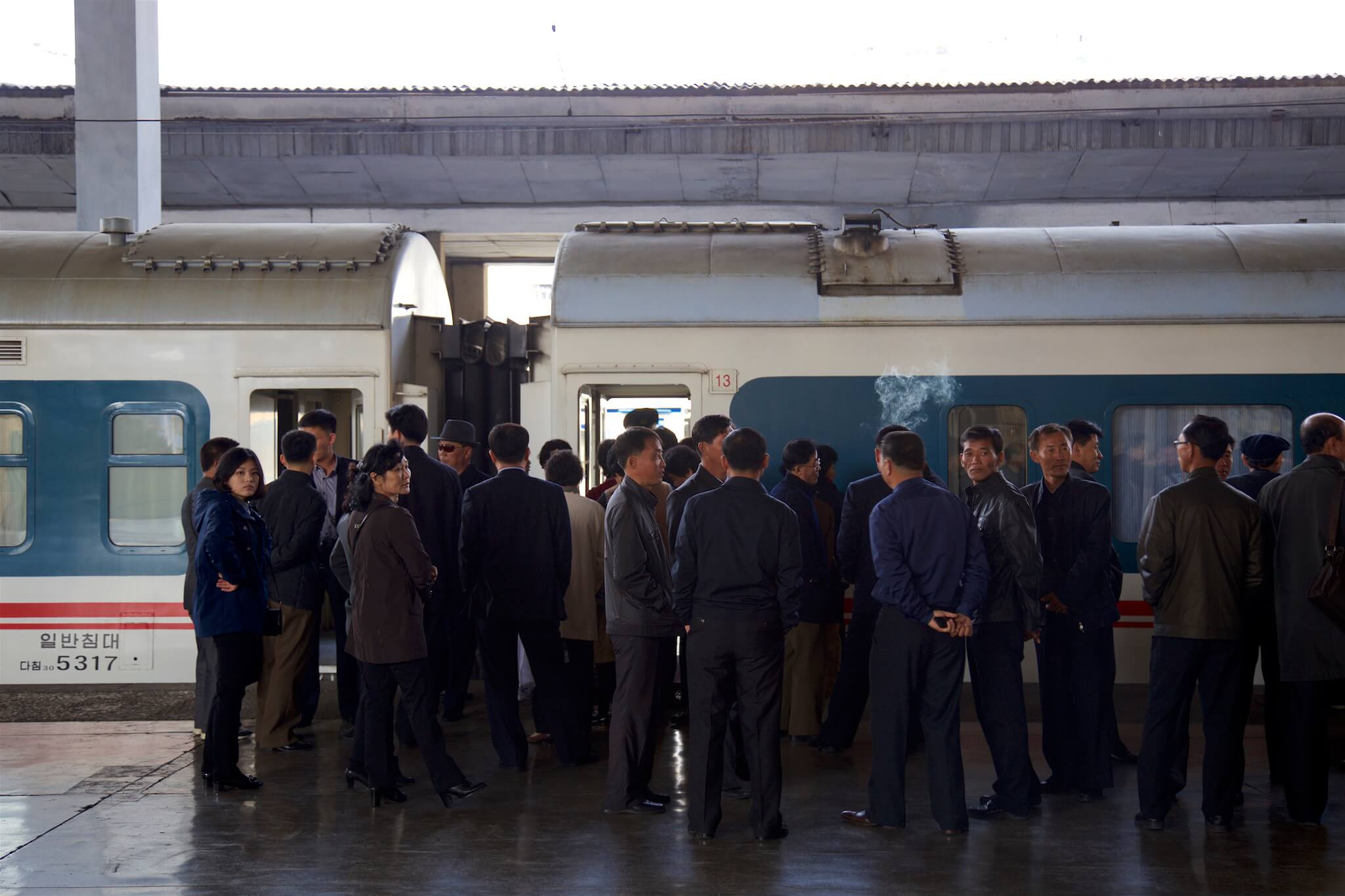
Pyongyang Central Station, I board a train for Sinuiju, 220 kilometers north of the country.
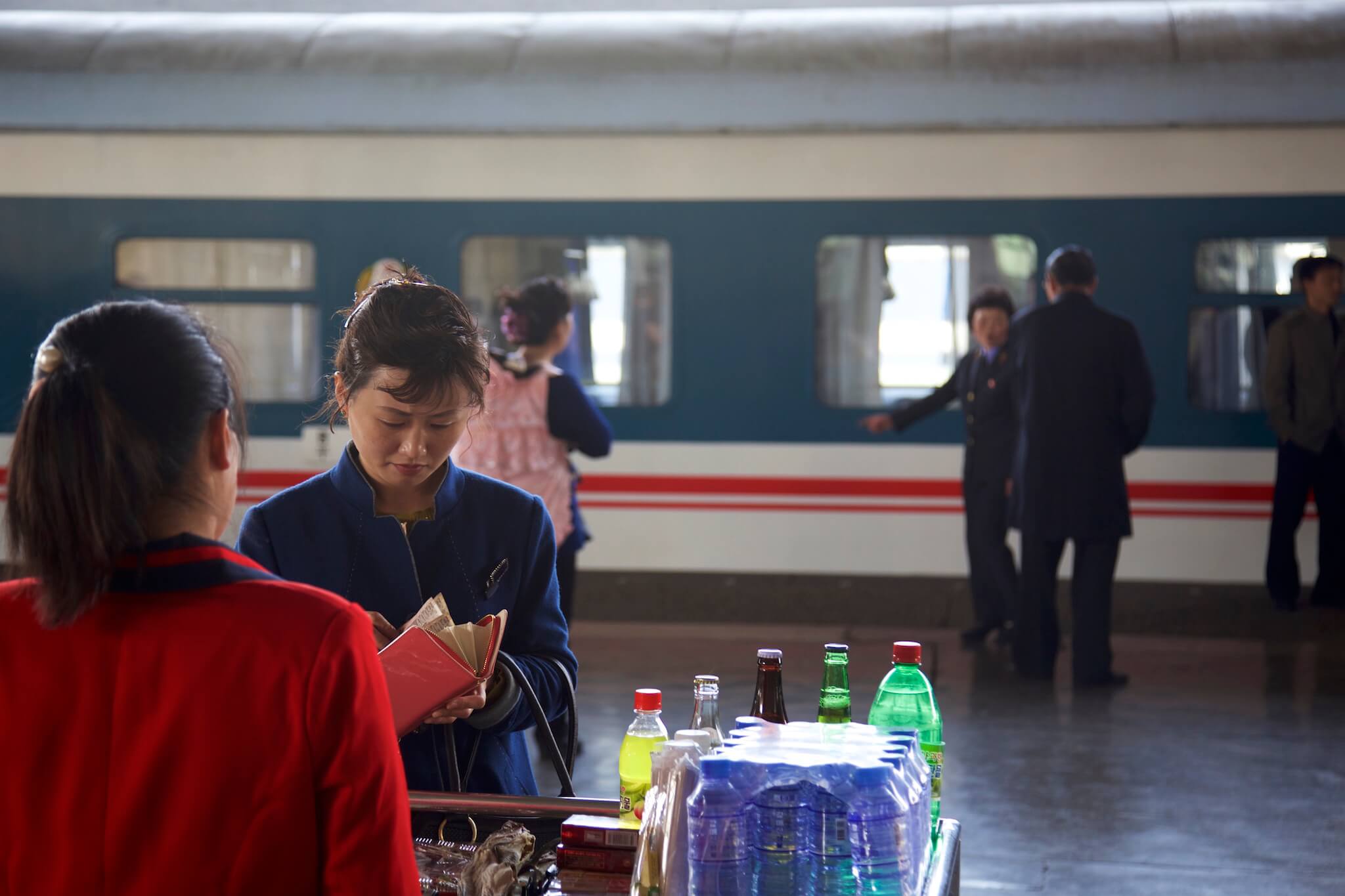
A woman buys a few provisions for the 5-hour train journey ahead. A trivial act that foreign tourists can’t perform, since they don’t have access to the Won, the local currency. To make purchases, visitors can only go to state stores where foreign currency is accepted.
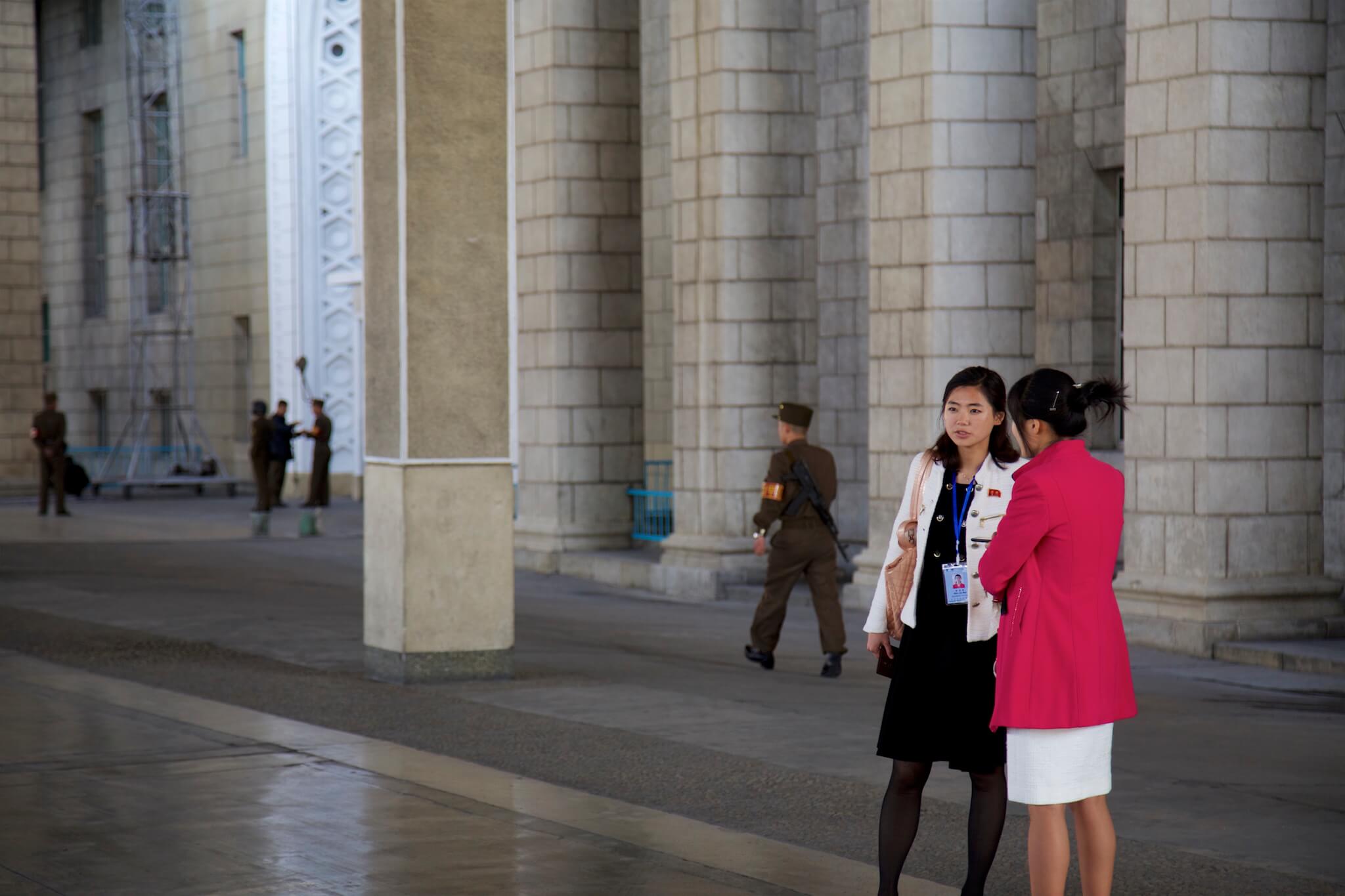
Conversation between two tour guides on the platform at Pyongyang station.
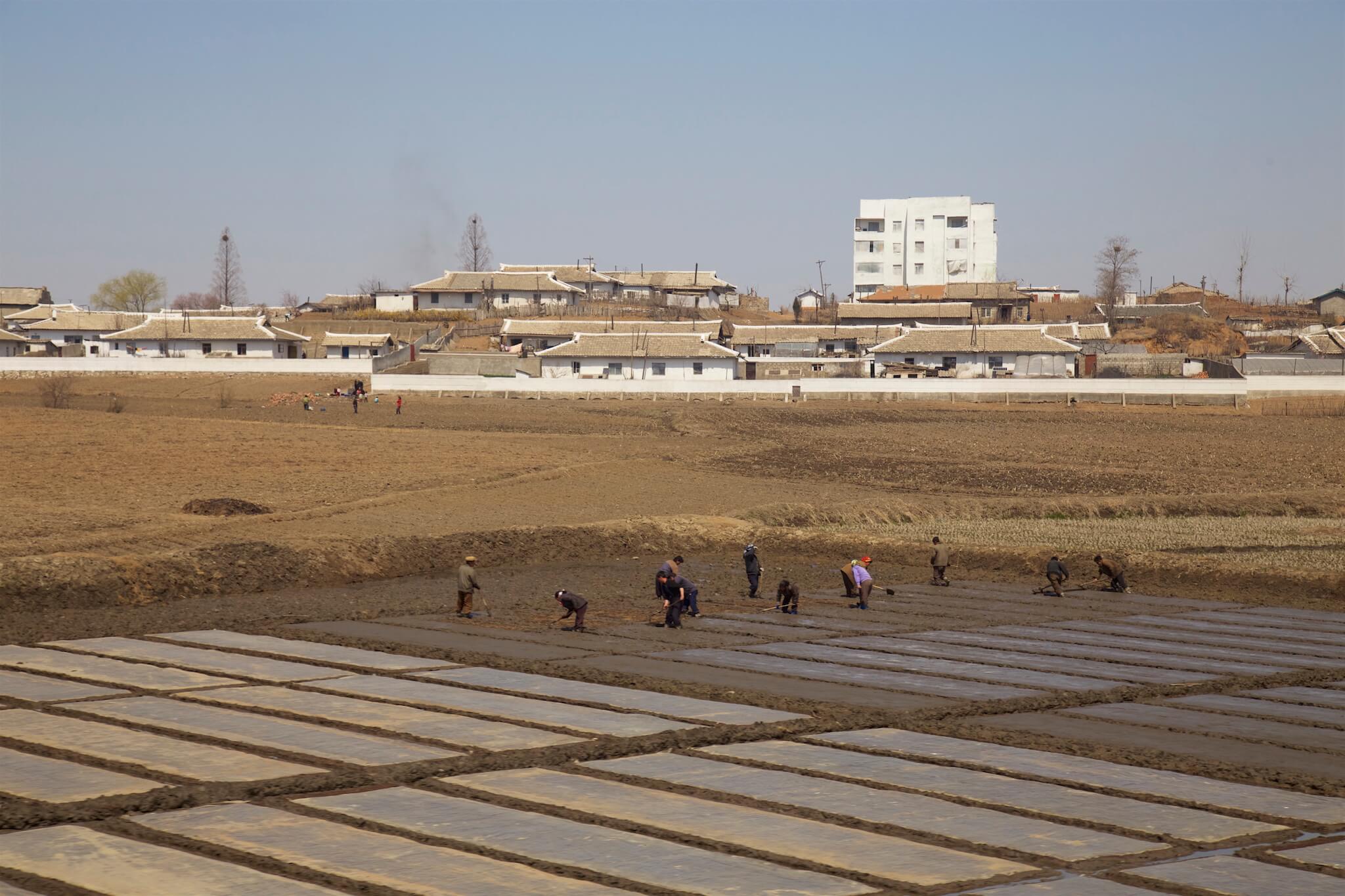
Photographic restrictions in North Korea are quite severe. It’s forbidden to photograph the military or any scenes of poverty, for example. Through the train window, however, I took a few liberties.
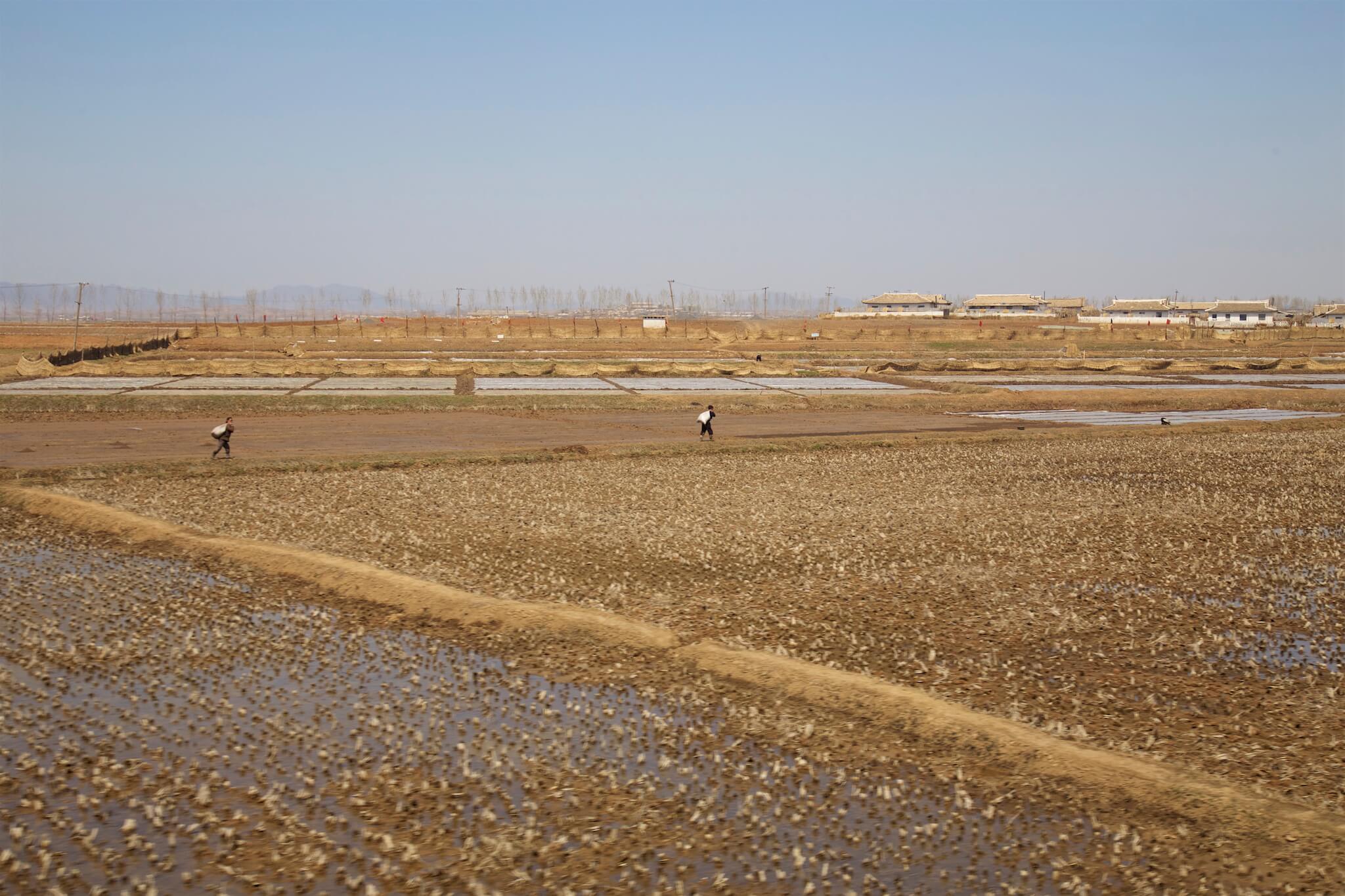
The campaigns are based on a collaborative system in which resources and products are redistributed.
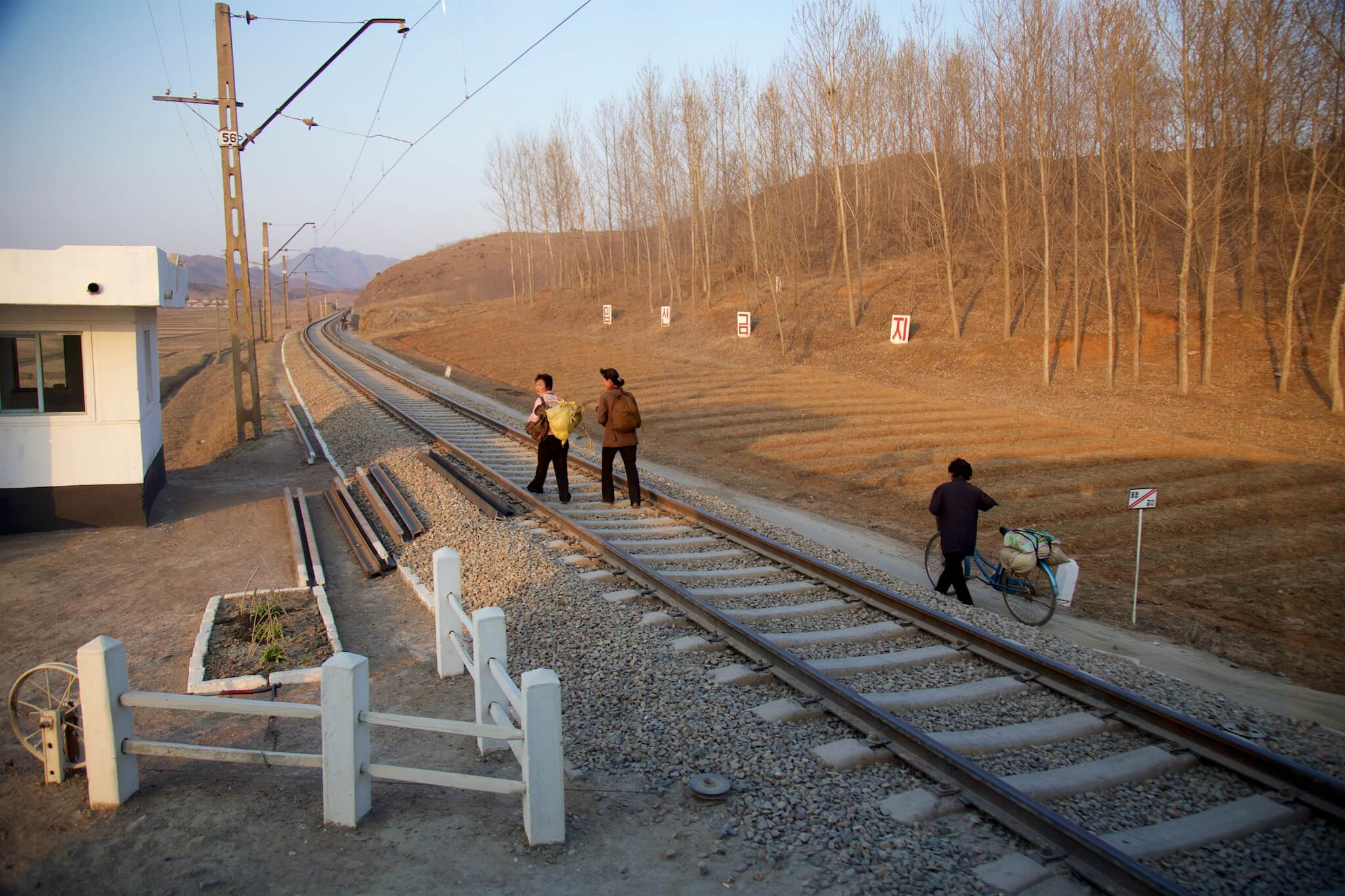
Cars and public transport are very rare outside Pyongyang. In the countryside, roads are not paved, and the majority of inhabitants travel on foot or by bicycle.
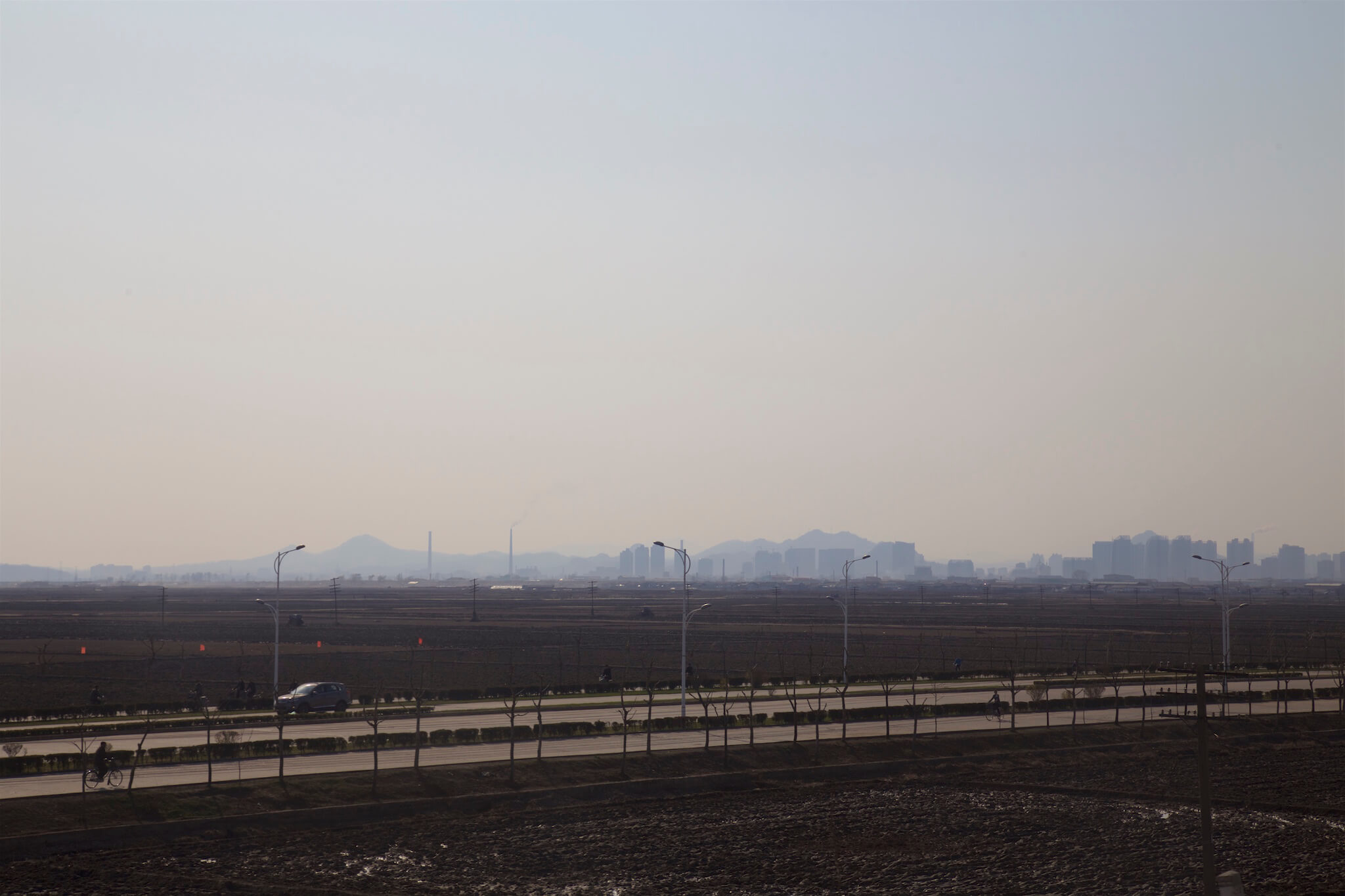
Opposite us, the city of Dandong in China. A stone’s throw from a completely different world, we can pick up the Chinese cellular network on our phones. The cell phones that some North Koreans have cannot receive this network, but a black market in phones from China is developing. As international calls are strictly forbidden in North Korea, the government jams the airwaves and taps the phones of those who don’t comply, subjecting them to severe penalties.
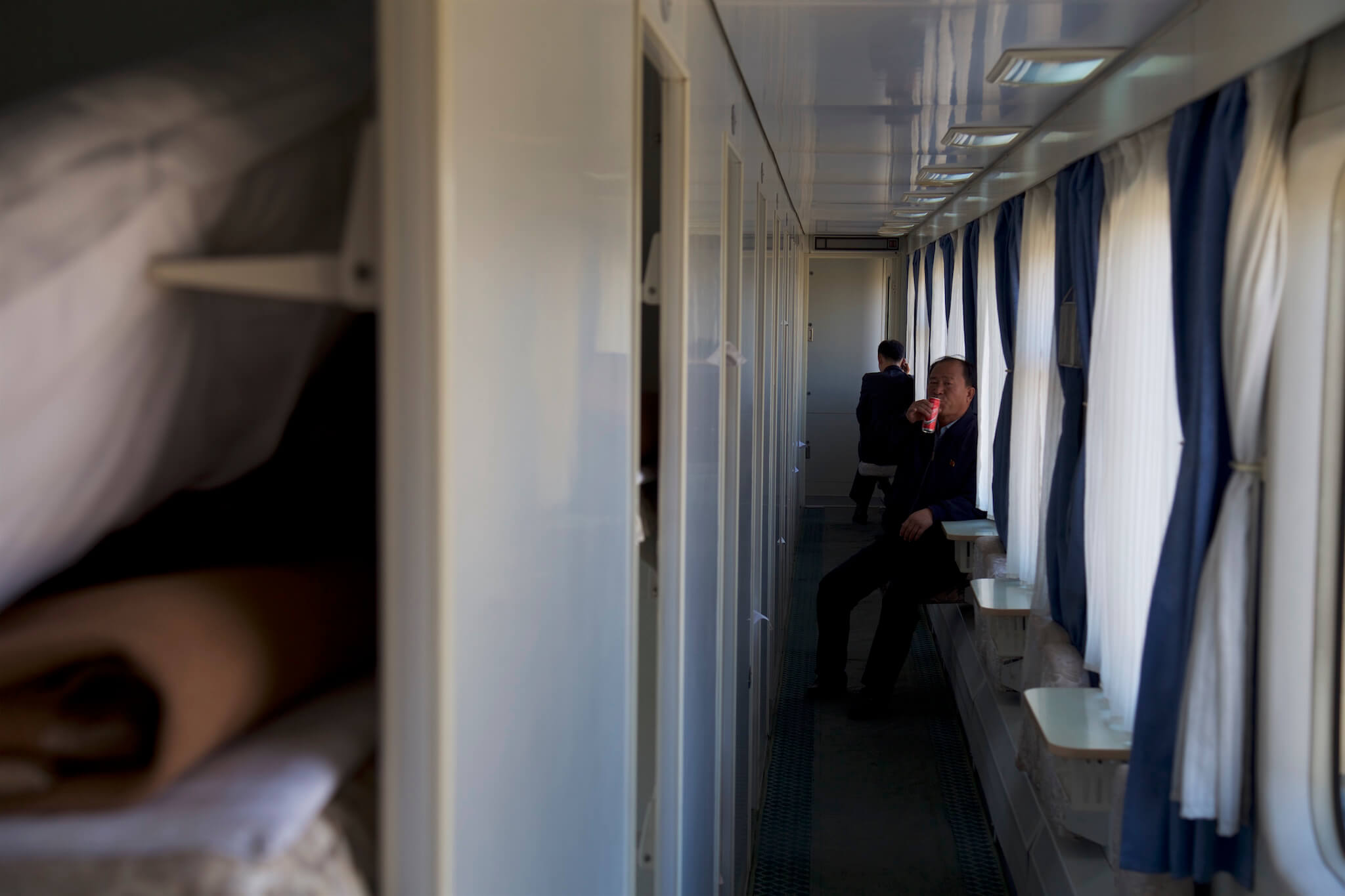
The carriage I’m in is guarded by police officers throughout my journey.
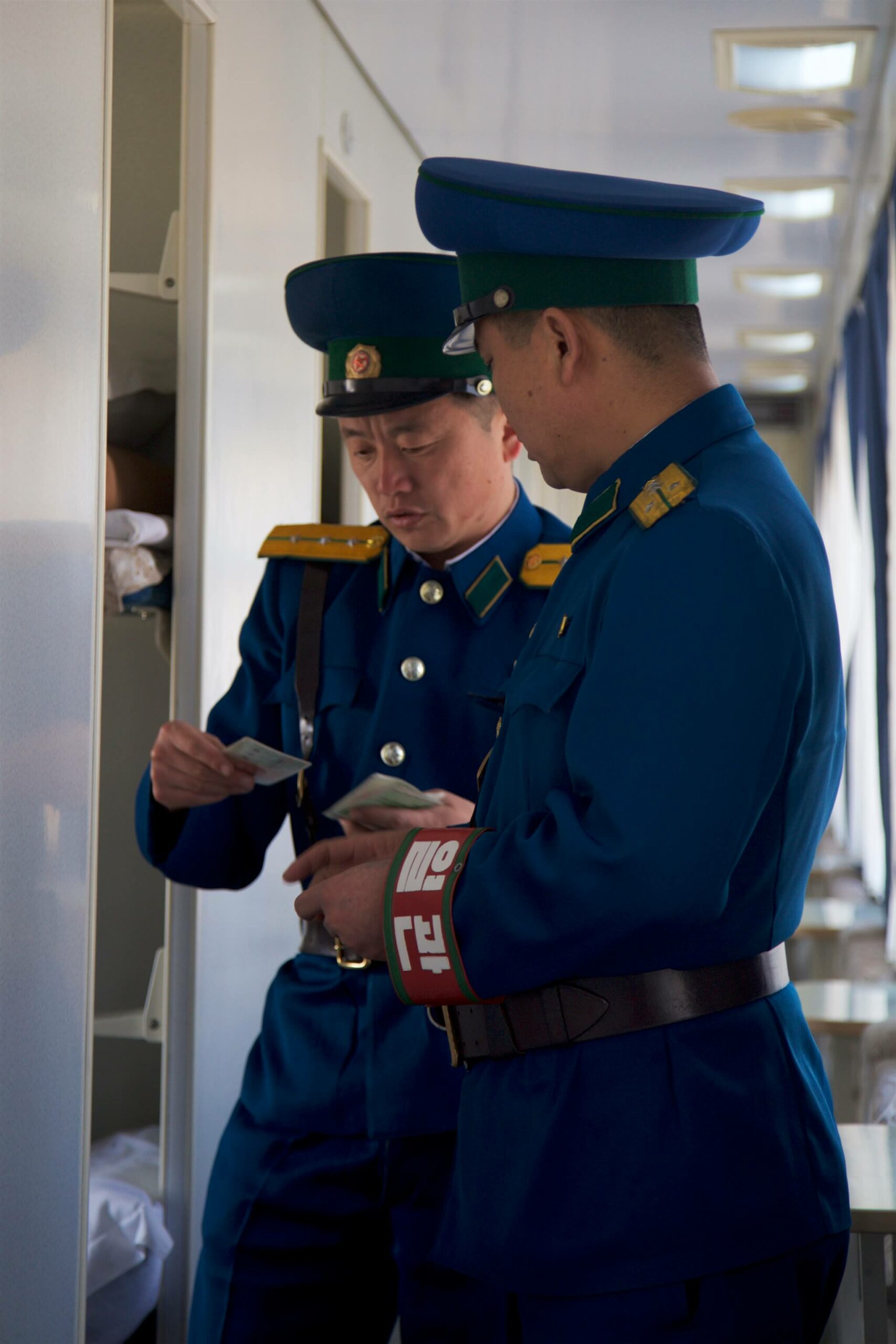
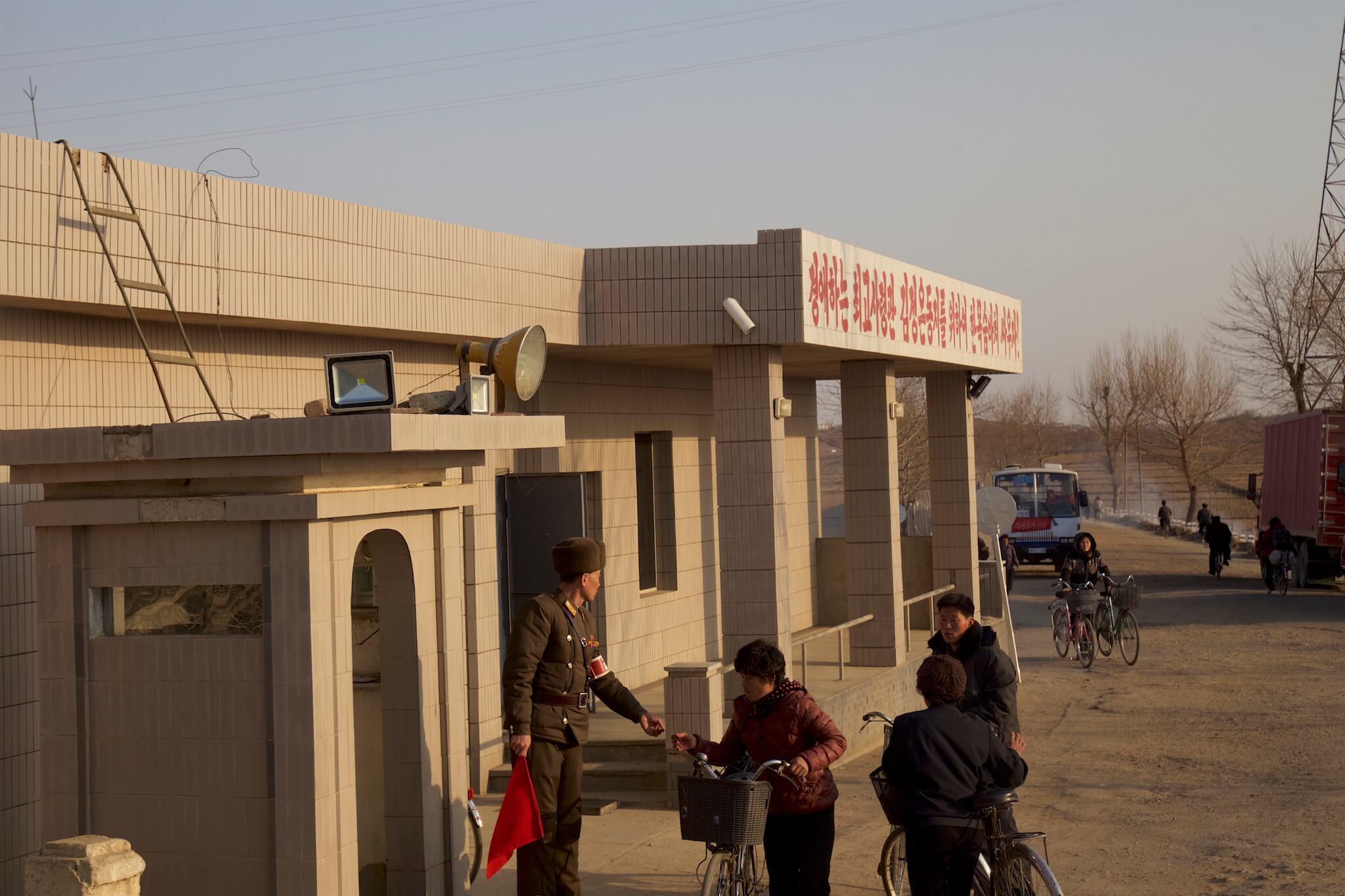
North Koreans cannot move freely within their own country. Here, a military checkpoint in the countryside outside Sinuiju.
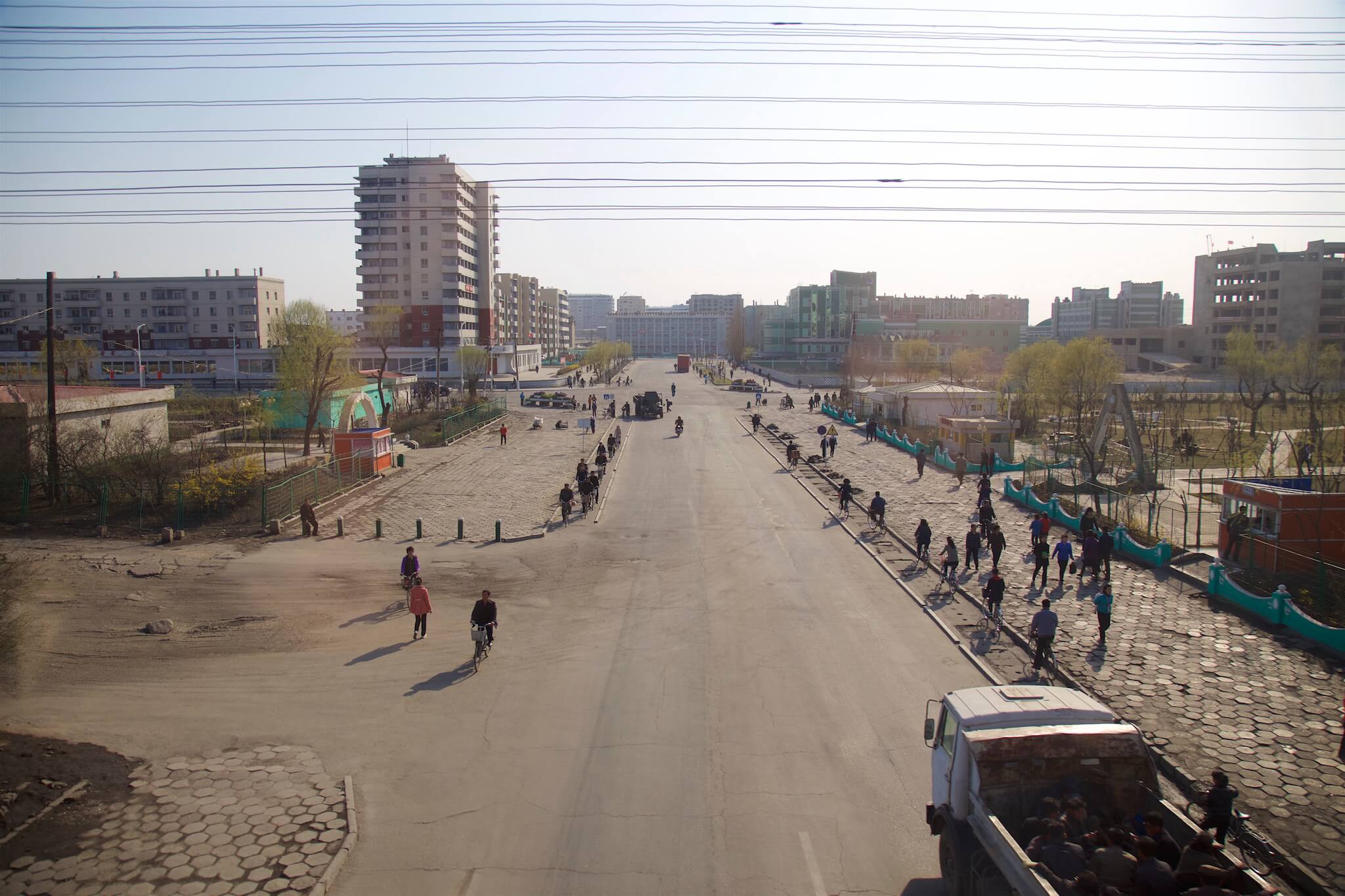
Sinuiju, a cross-border city with China, where a large proportion of trade is conducted and illegal traffic transits.
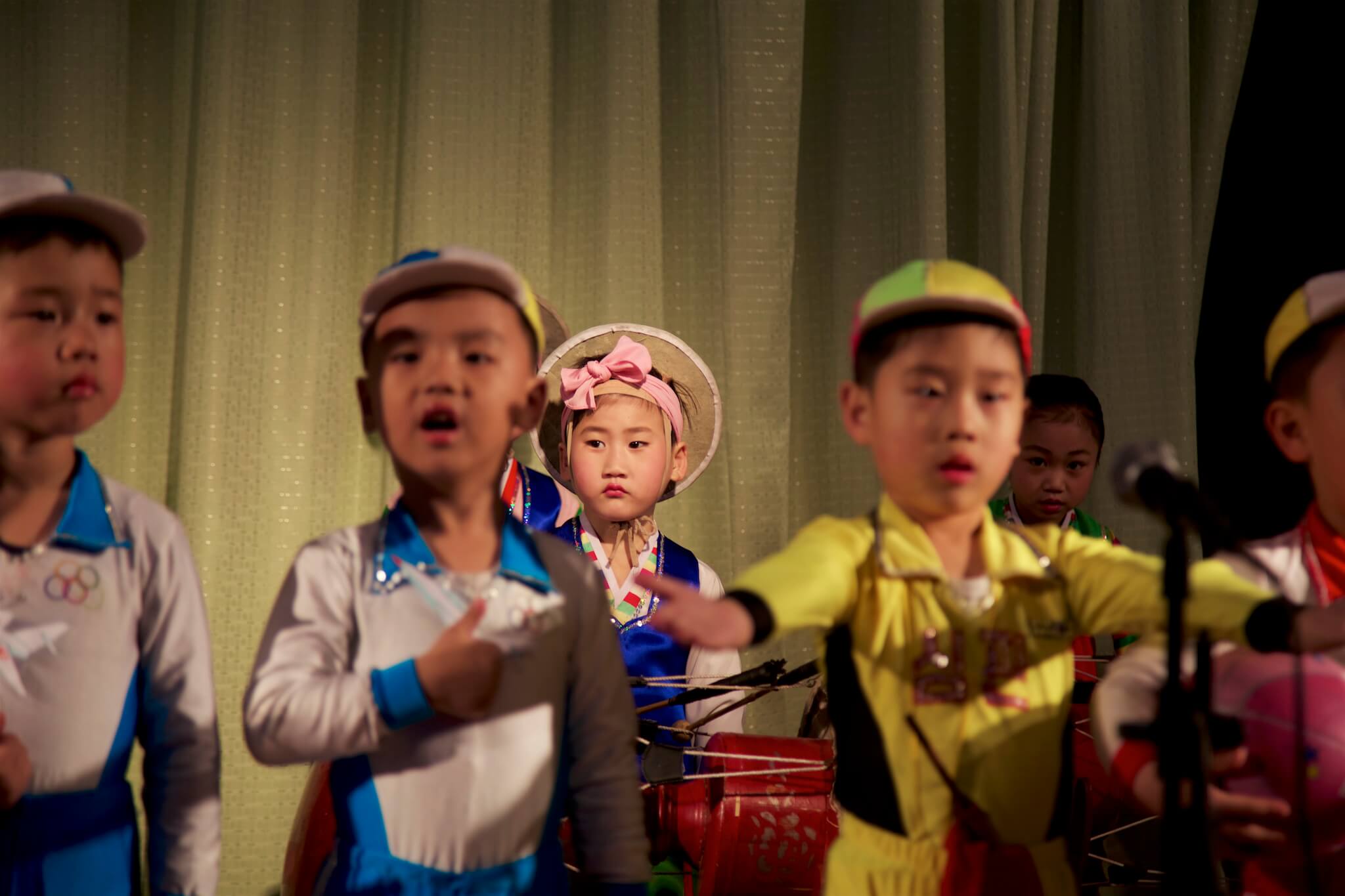
During a visit to a music school, a group of children aged around 5 give us a gripping performance, as much for its meticulous execution as for its boundless patriotism. A terrifying indoctrination that begins at an early age.
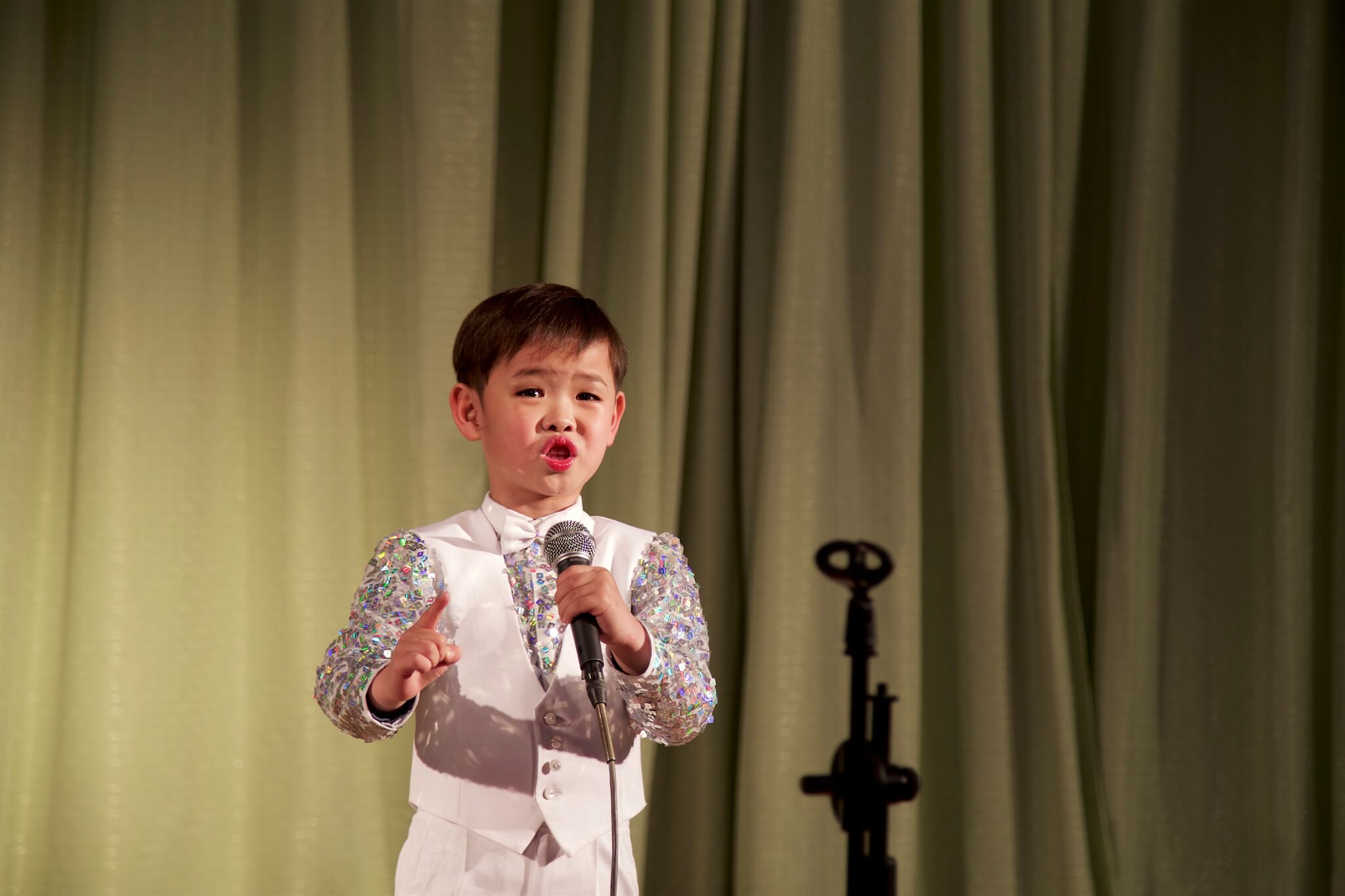
The lyrics of their songs deal with life in North Korea under Japanese occupation between 1910 and 1945, and with anti-Americanism.
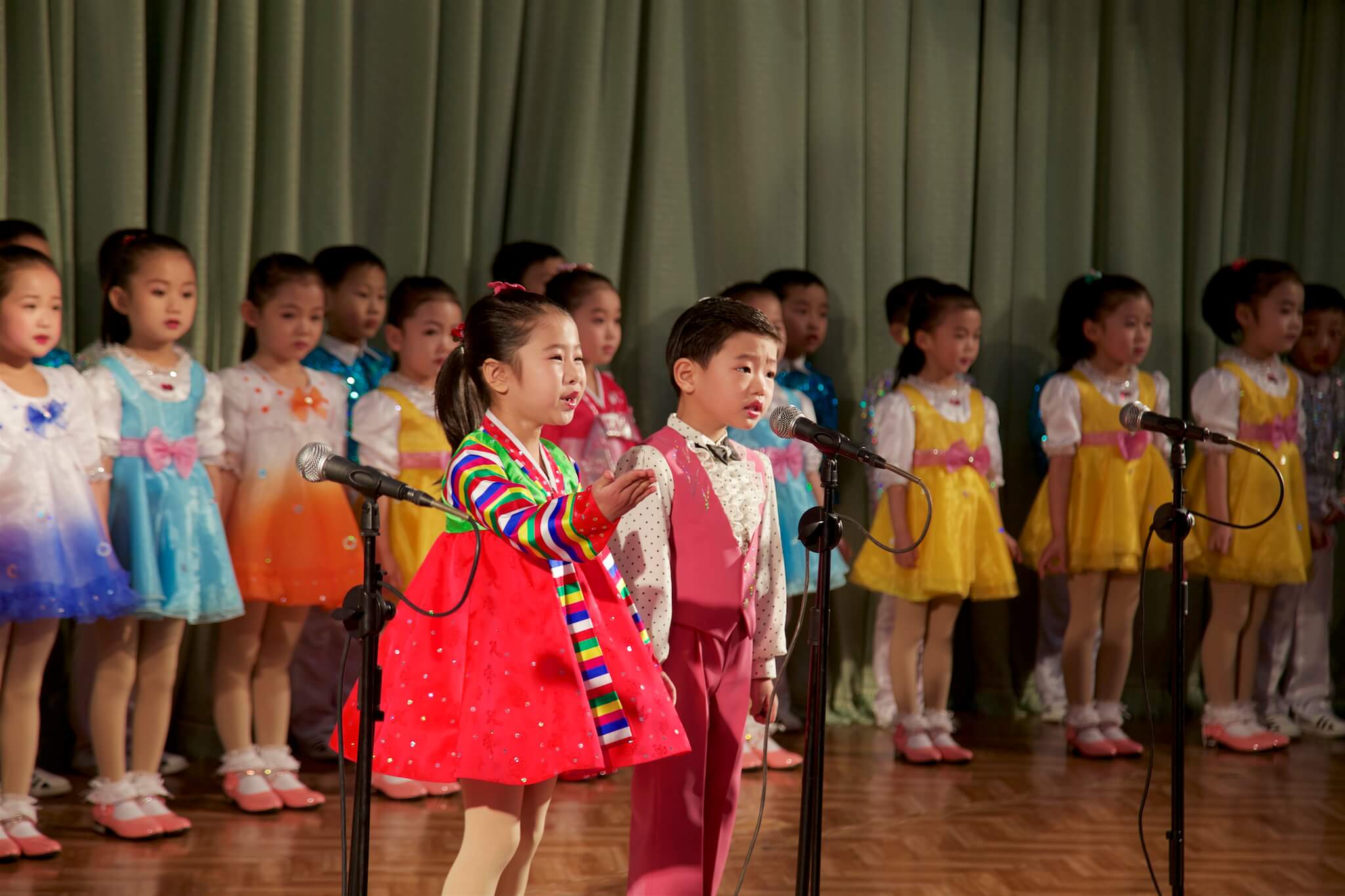
For over an hour, the children dance and sing, leaving us speechless.
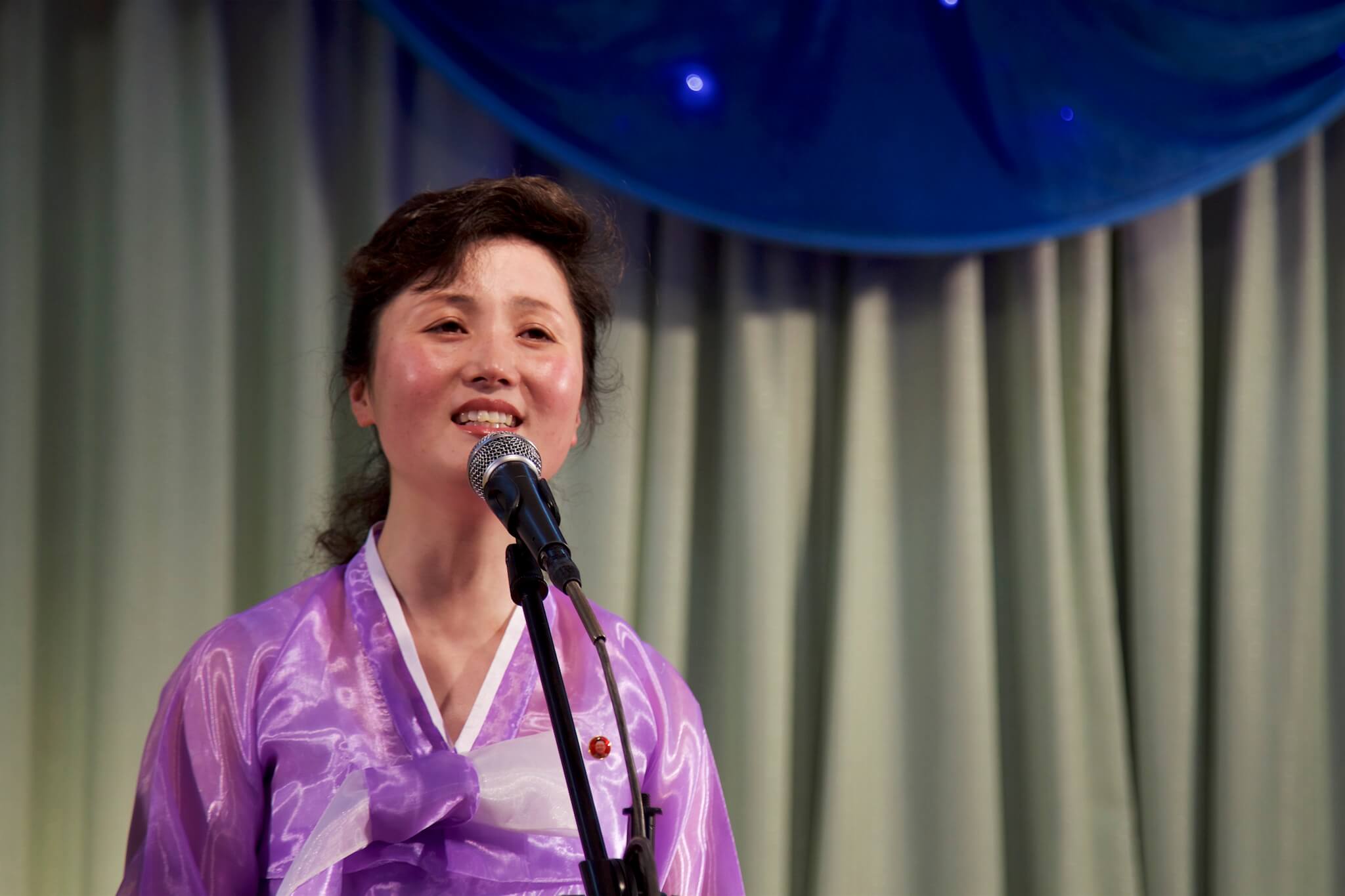
The school’s teachers deliver a similar performance to close the show.
At the end of a five-day visit, I returned to China via the Dandong border crossing. Five days during which I sometimes had the strange sensation of being on the set of a film, where the whole script revolved around the celebration of socialism and its authoritarian leaders, and where all the actors and extras played a patriotic role, without the slightest false note or shadow of protest.
A visit to North Korea is a visit that leaves no one indifferent. While for some it may seem futile, even endorsing the dictatorship, others see it as an opportunity to experience a communist regime from the inside in the 21st century. In my opinion, the presence of foreign visitors in North Korea, who bring tangible proof to an oppressed population that another world exists, cannot harm the North Koreans. Running the Pyongyang Marathon is a moving human experience where the values of sport know no boundaries. To take part in the marathon or travel to North Korea, take a look at the services offered by Koryo Tours.
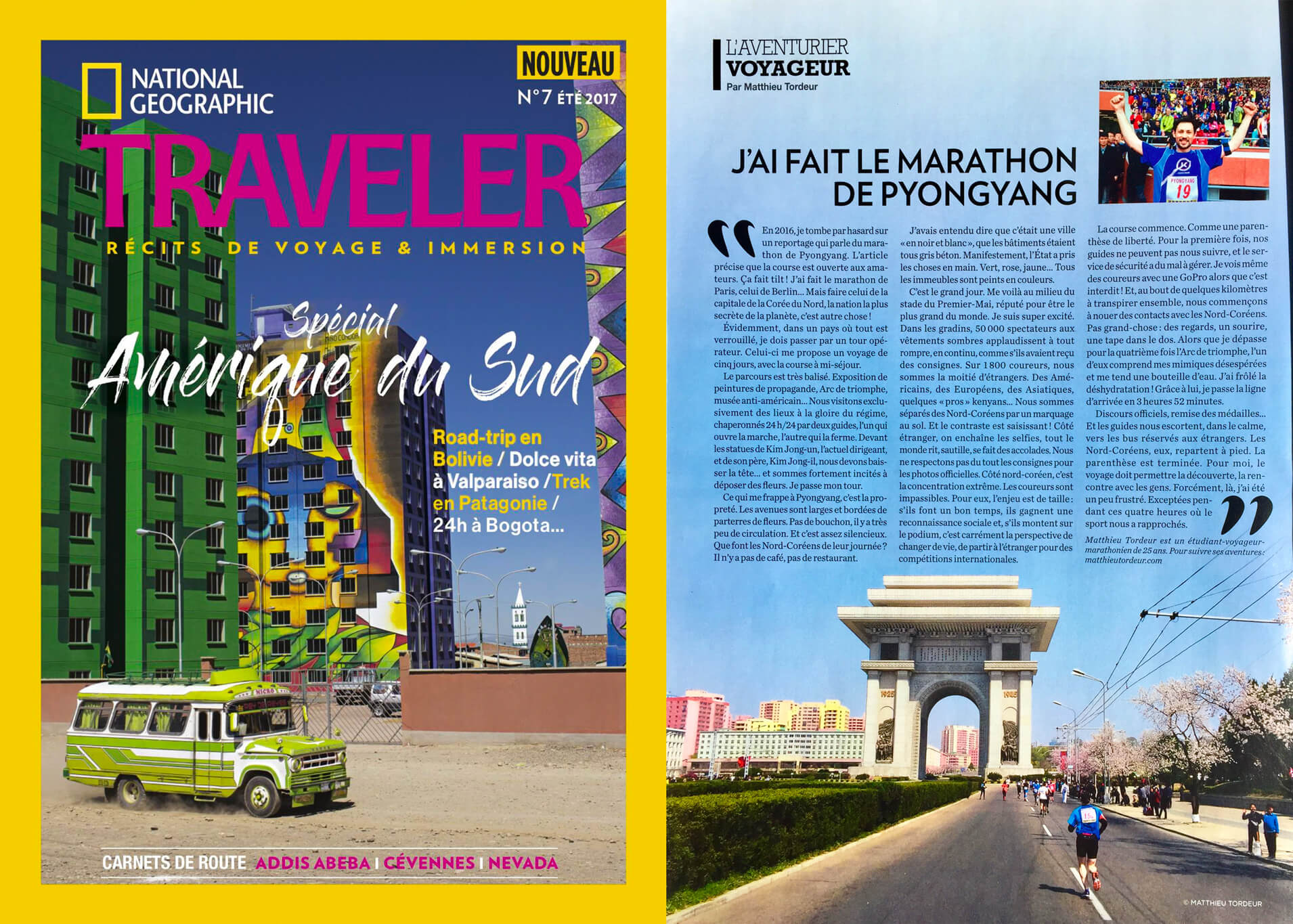
Article published in July 2017 in National Geographic Traveler France.